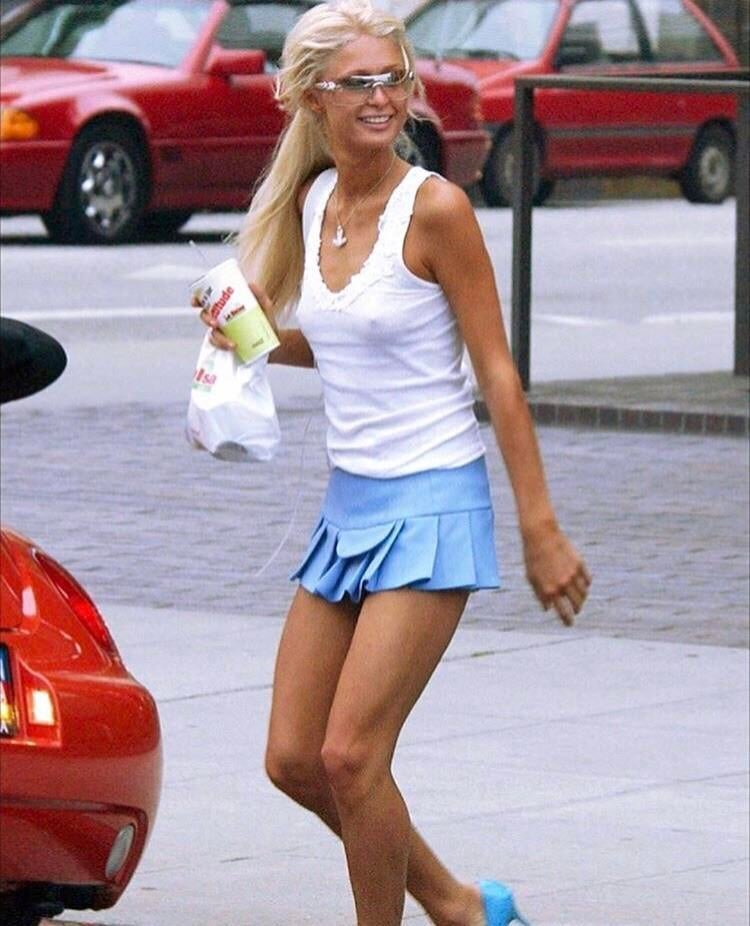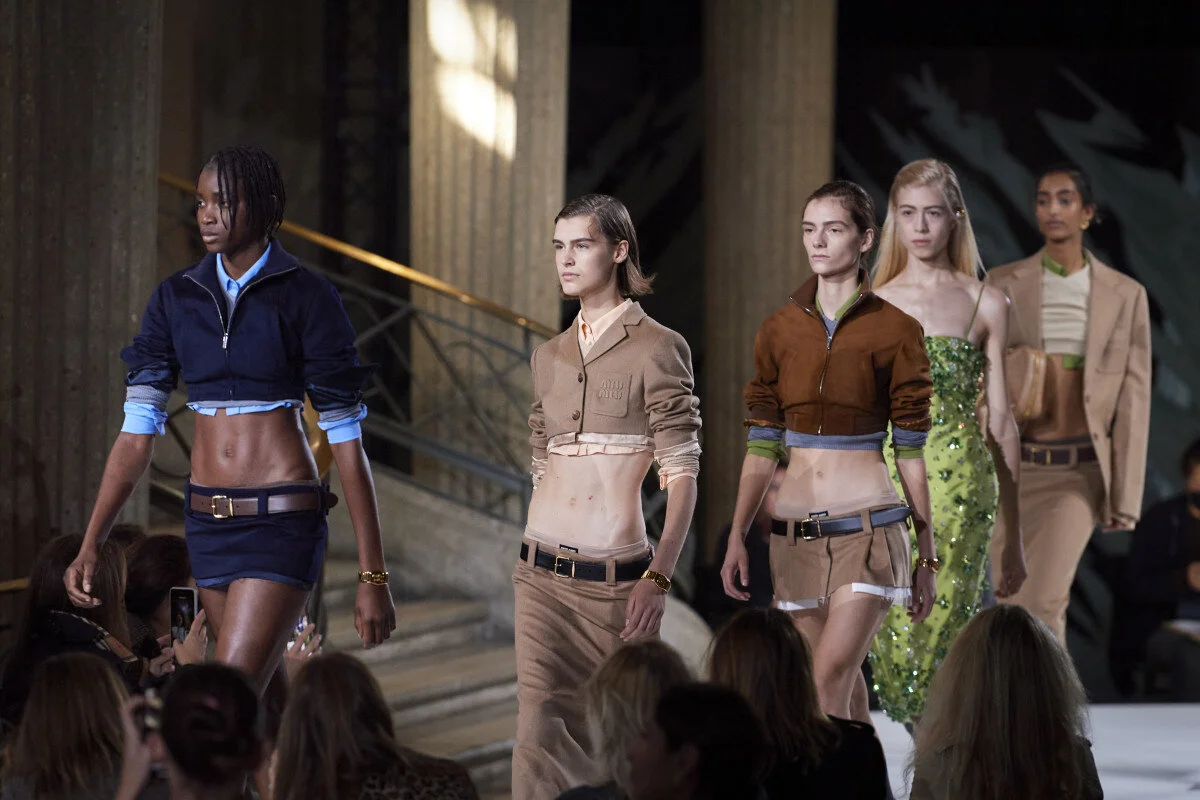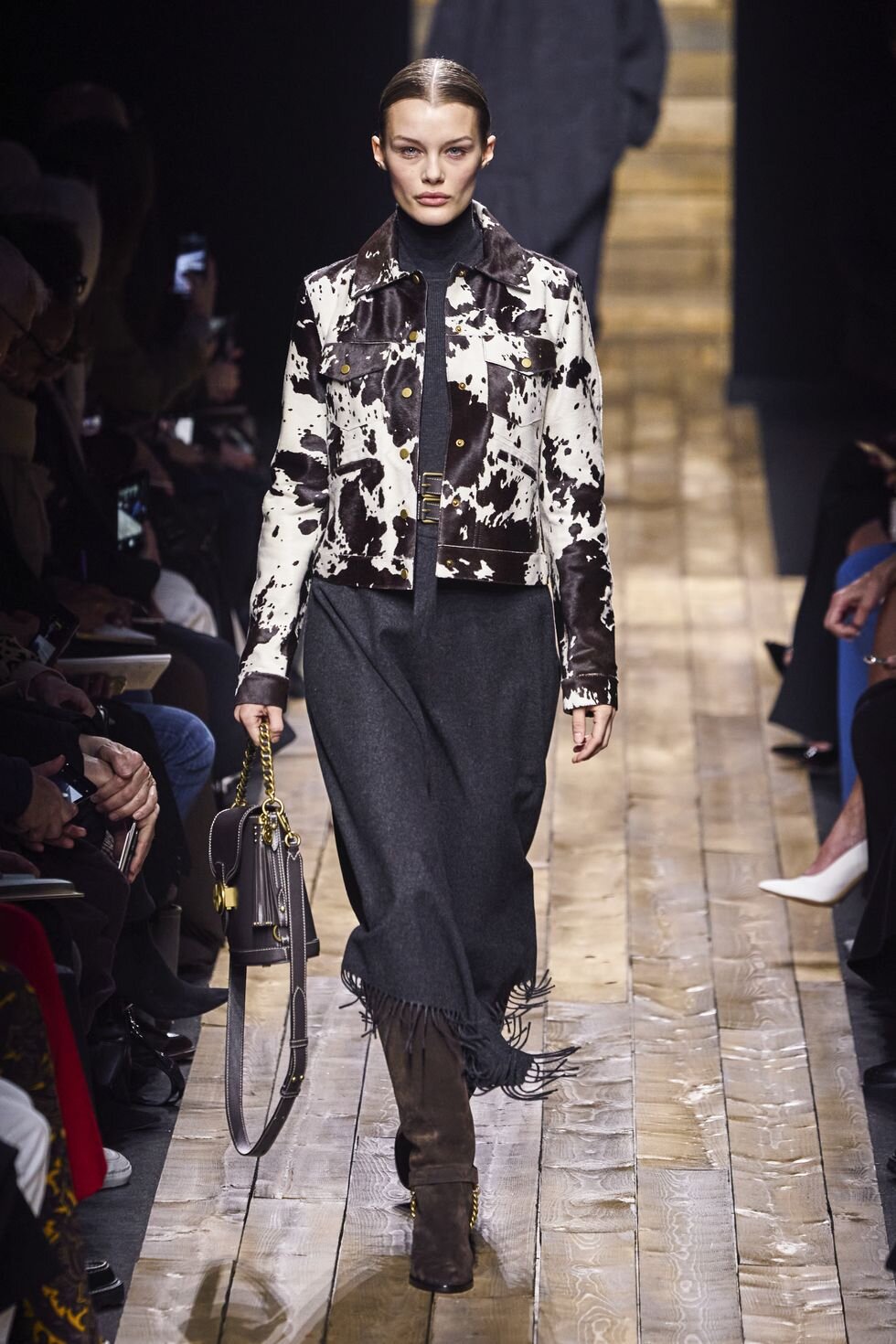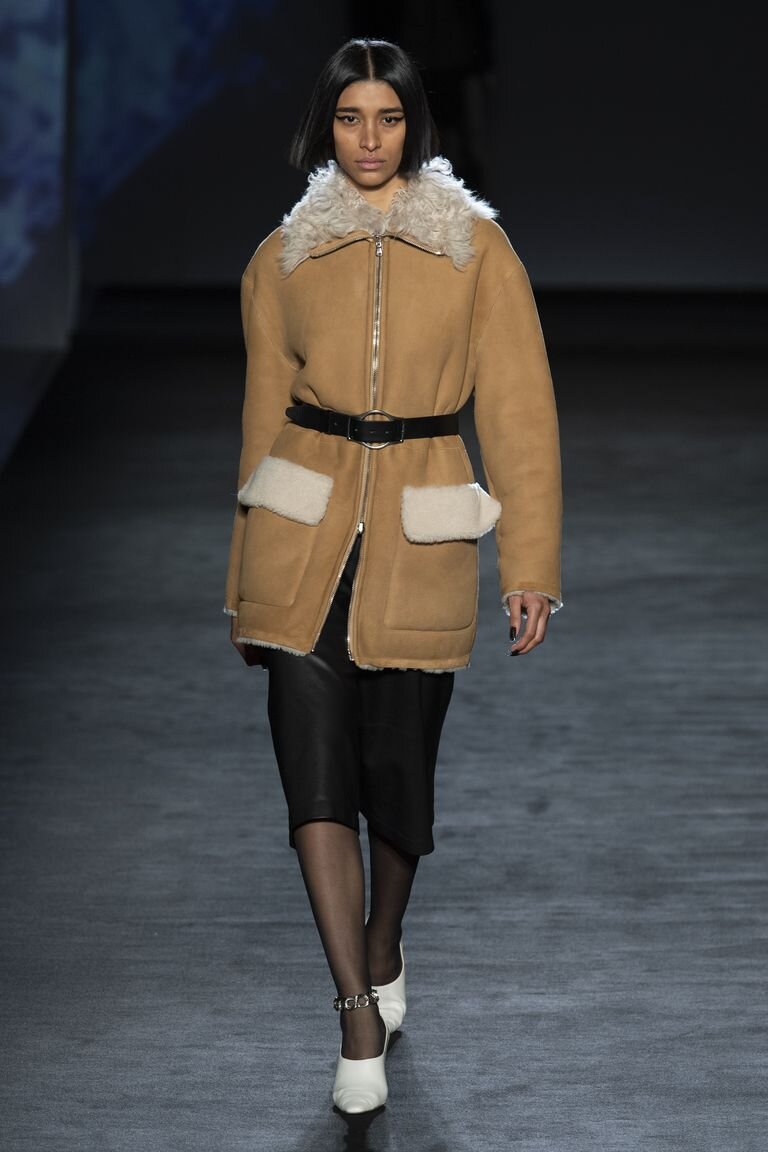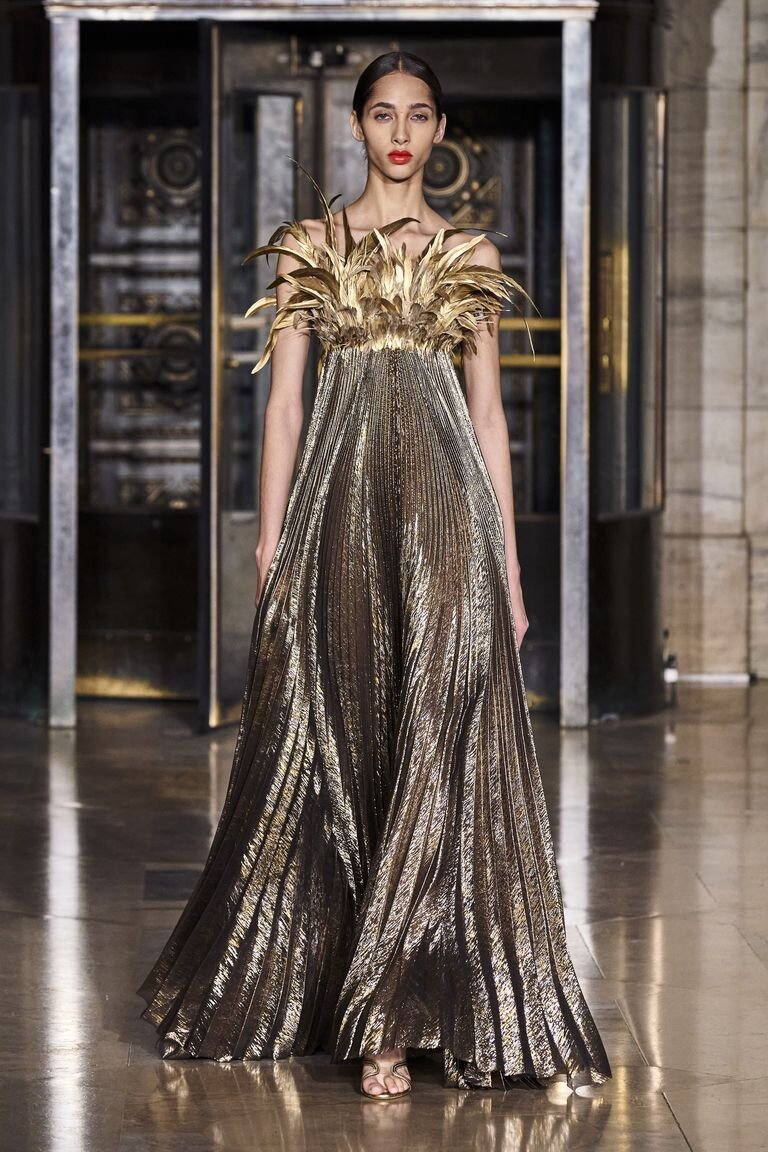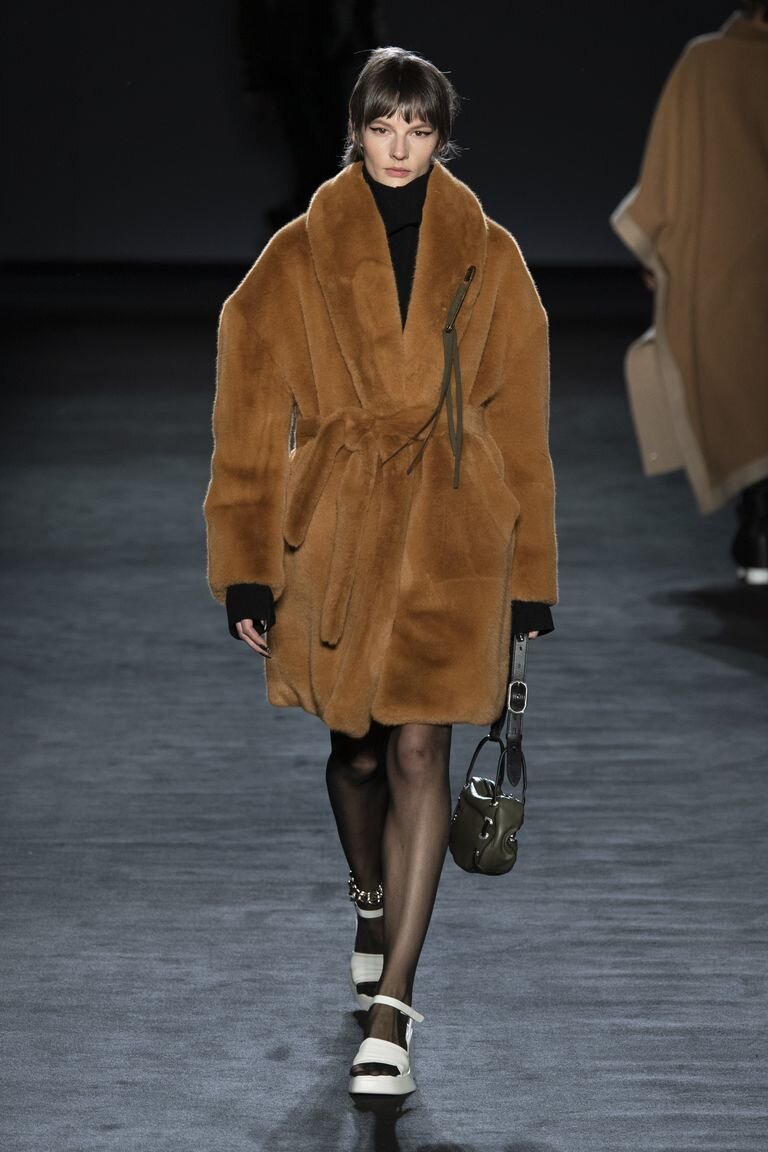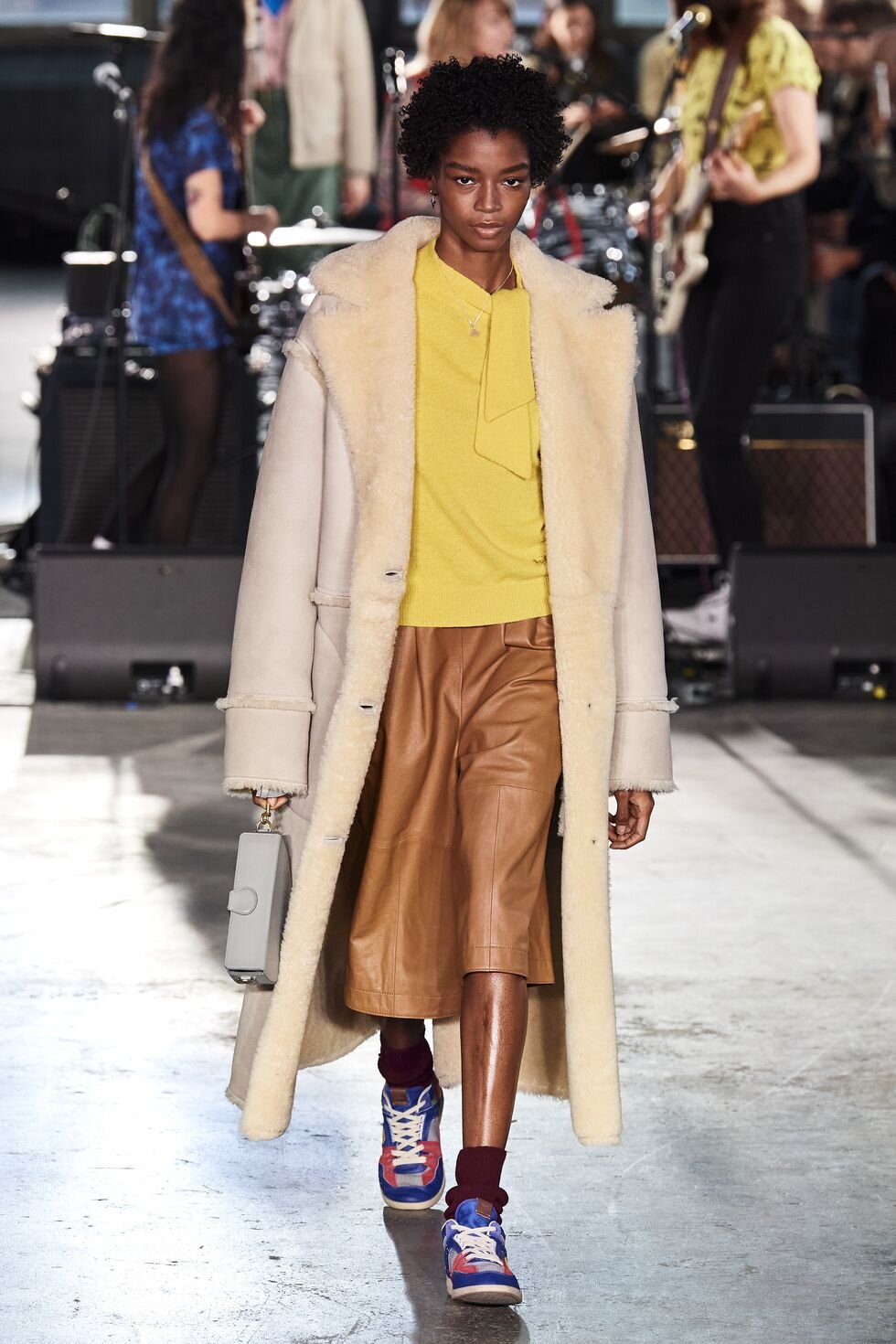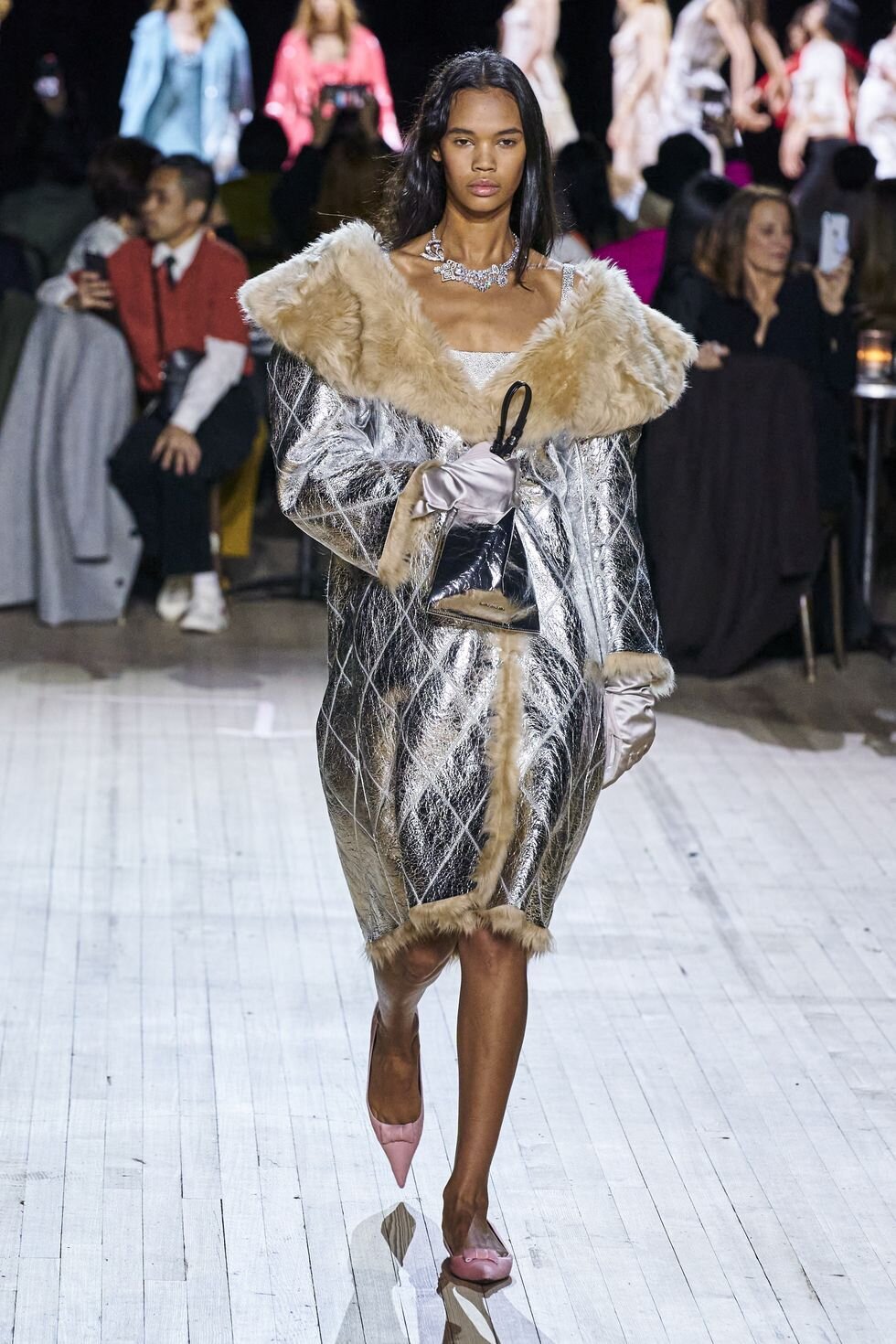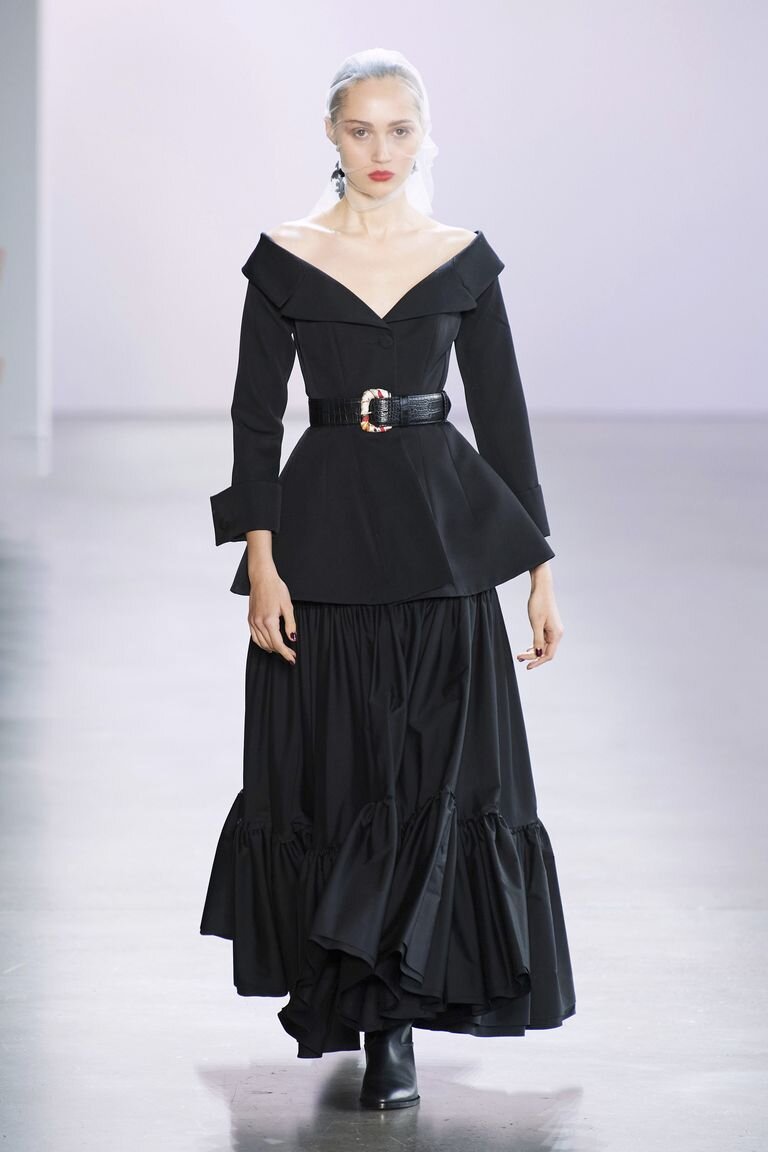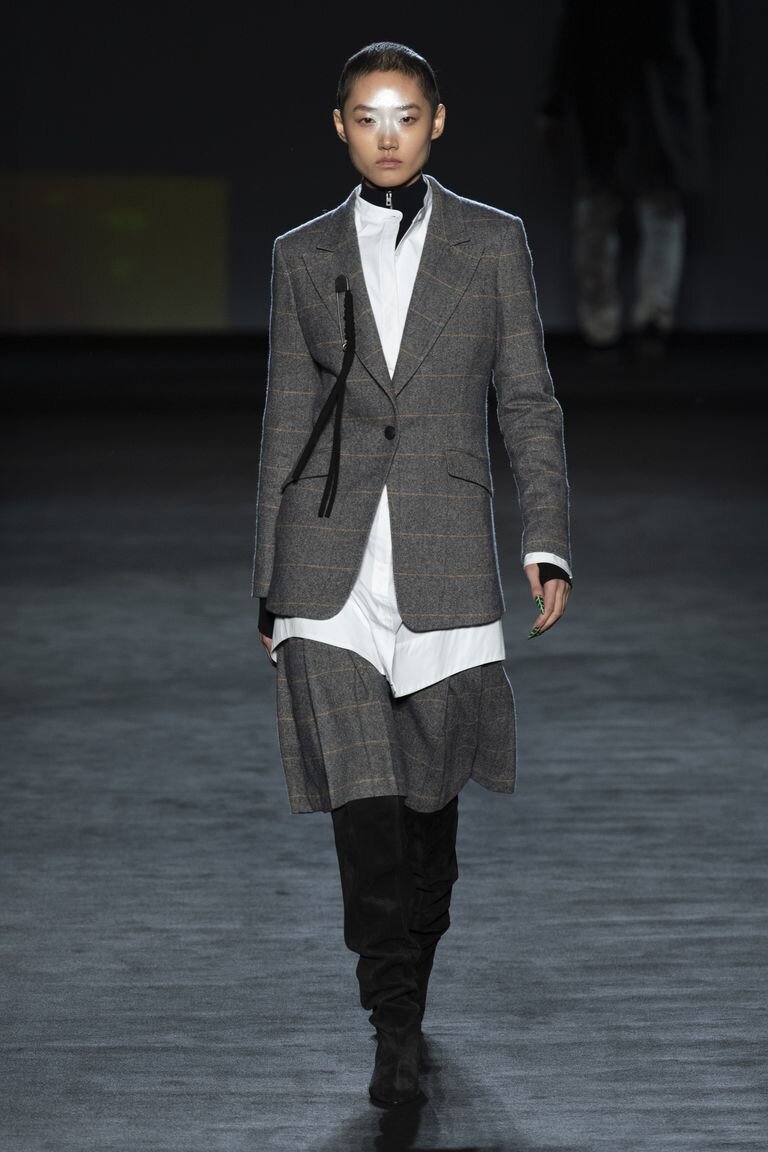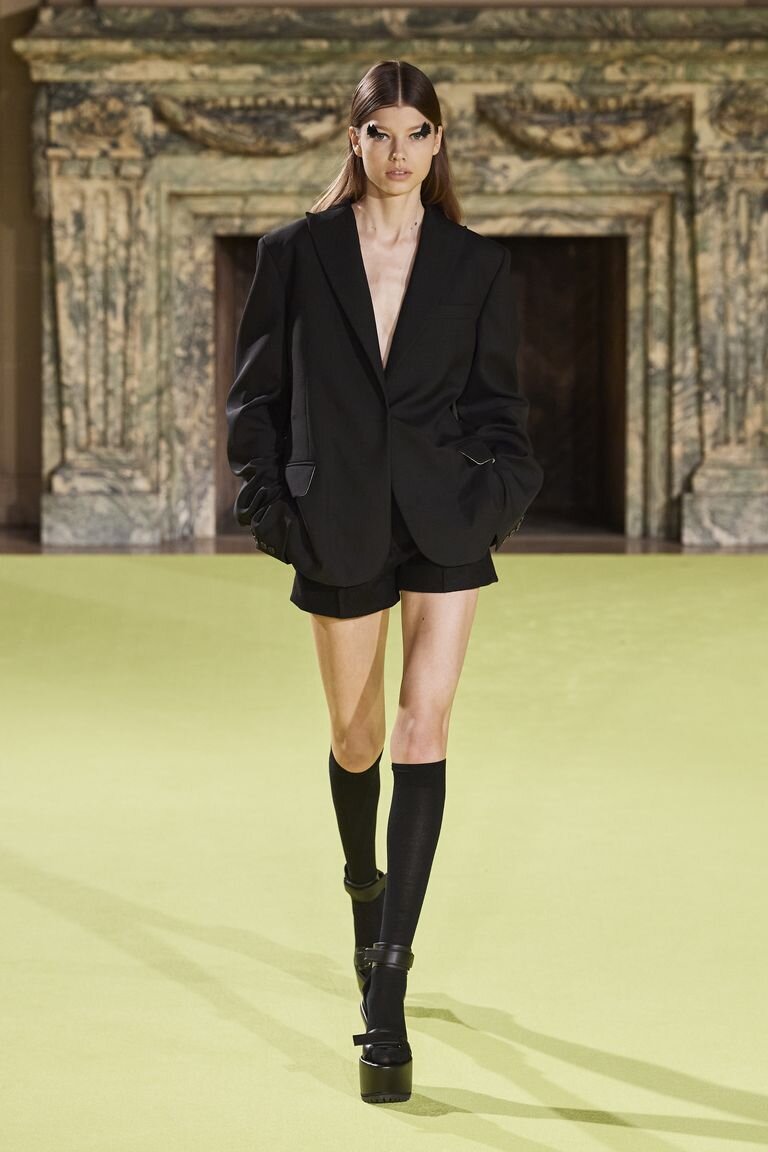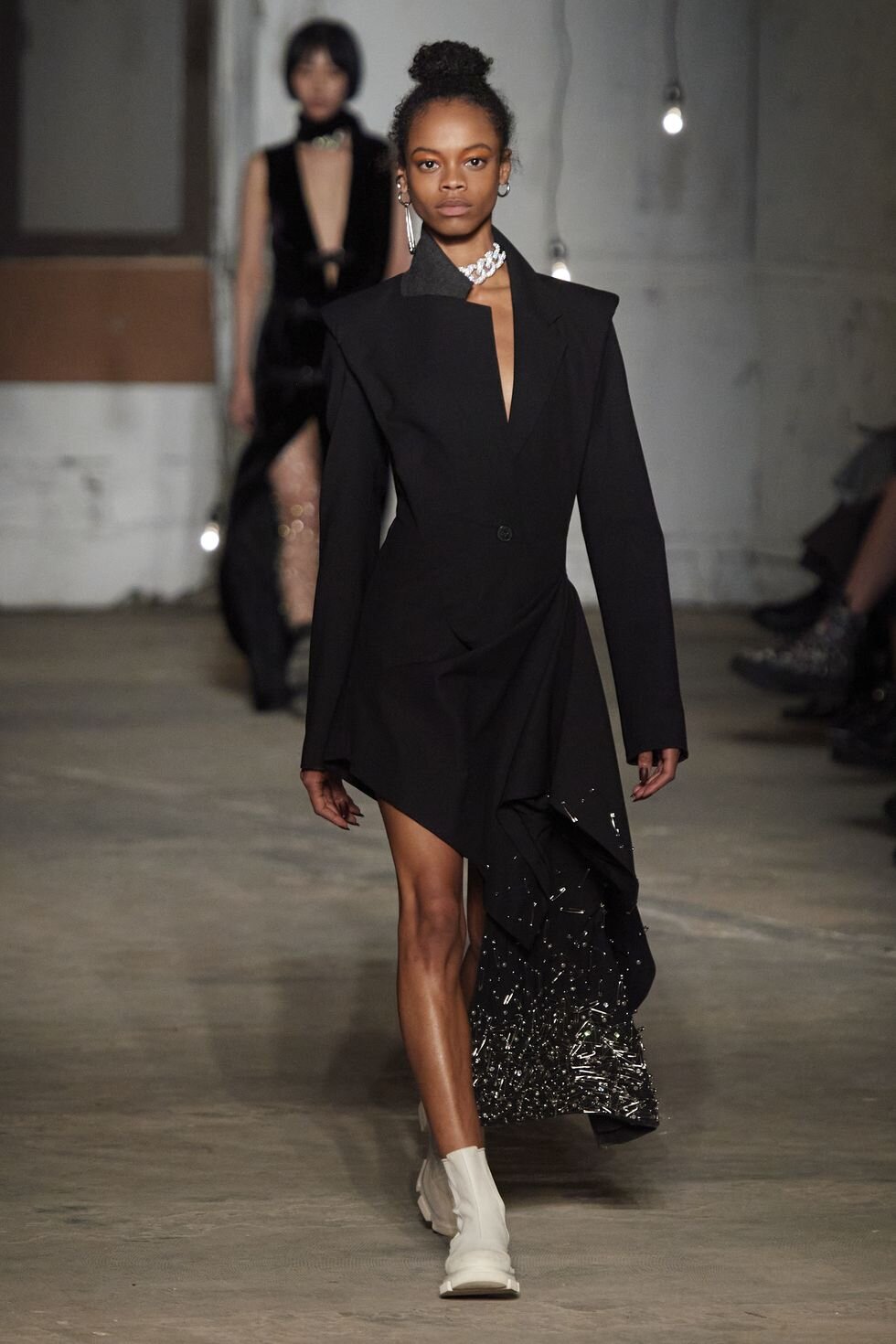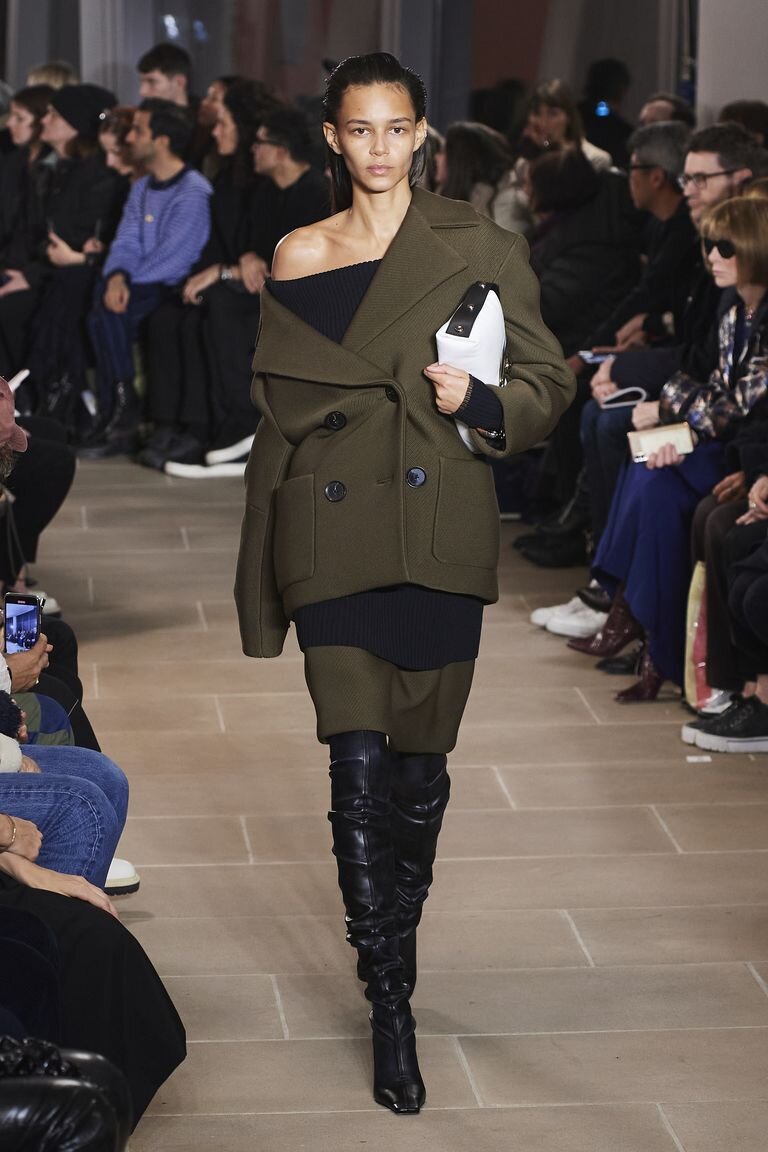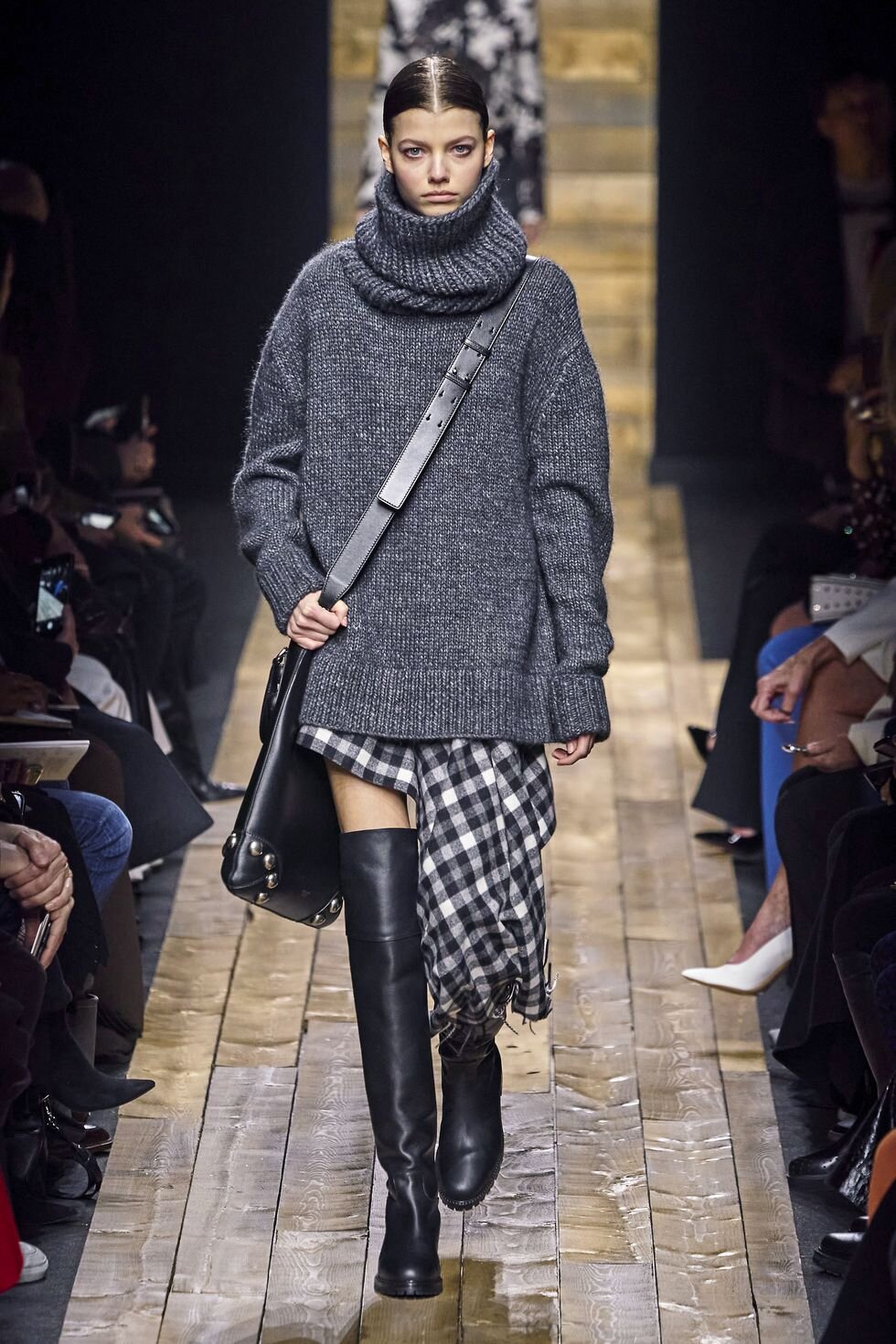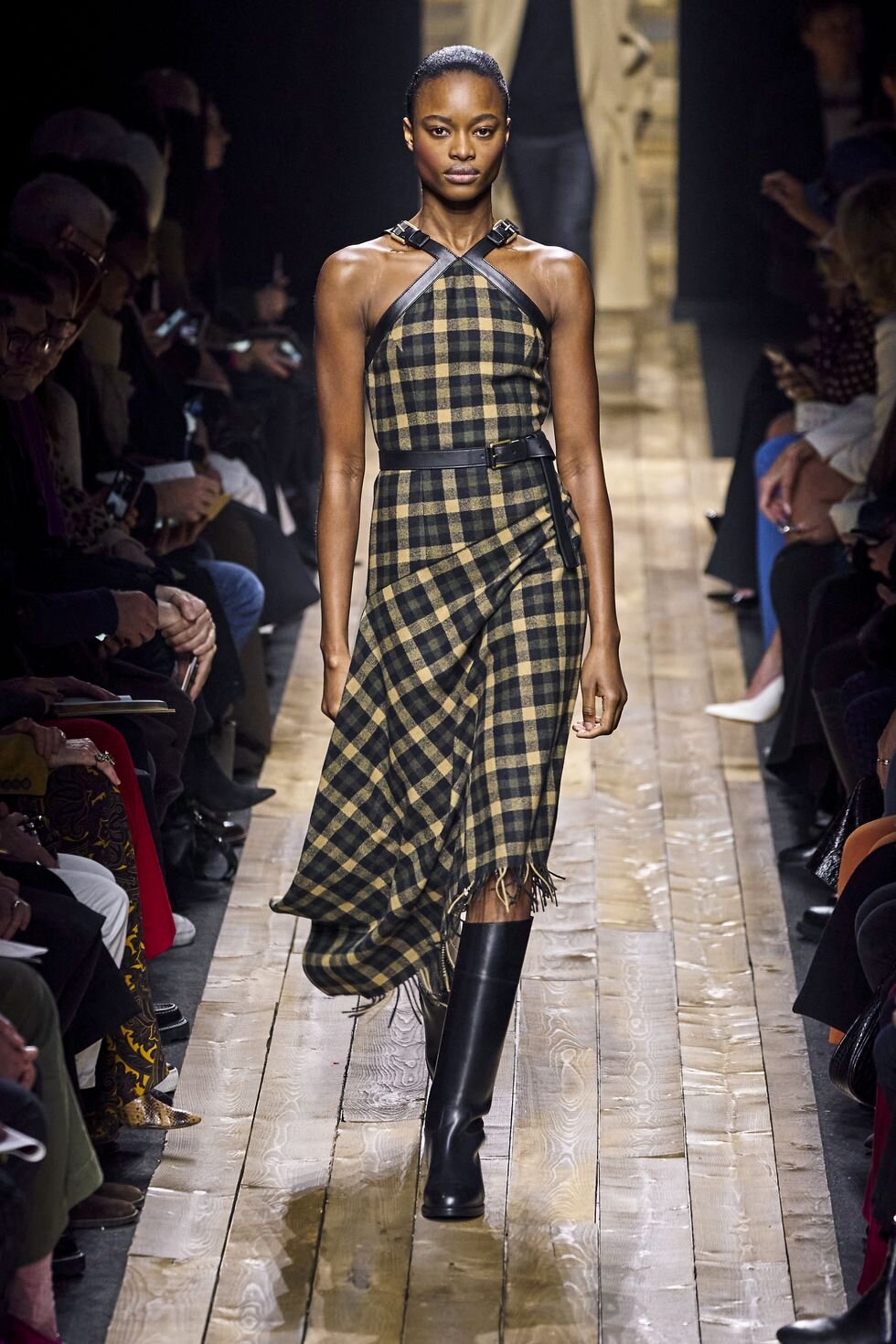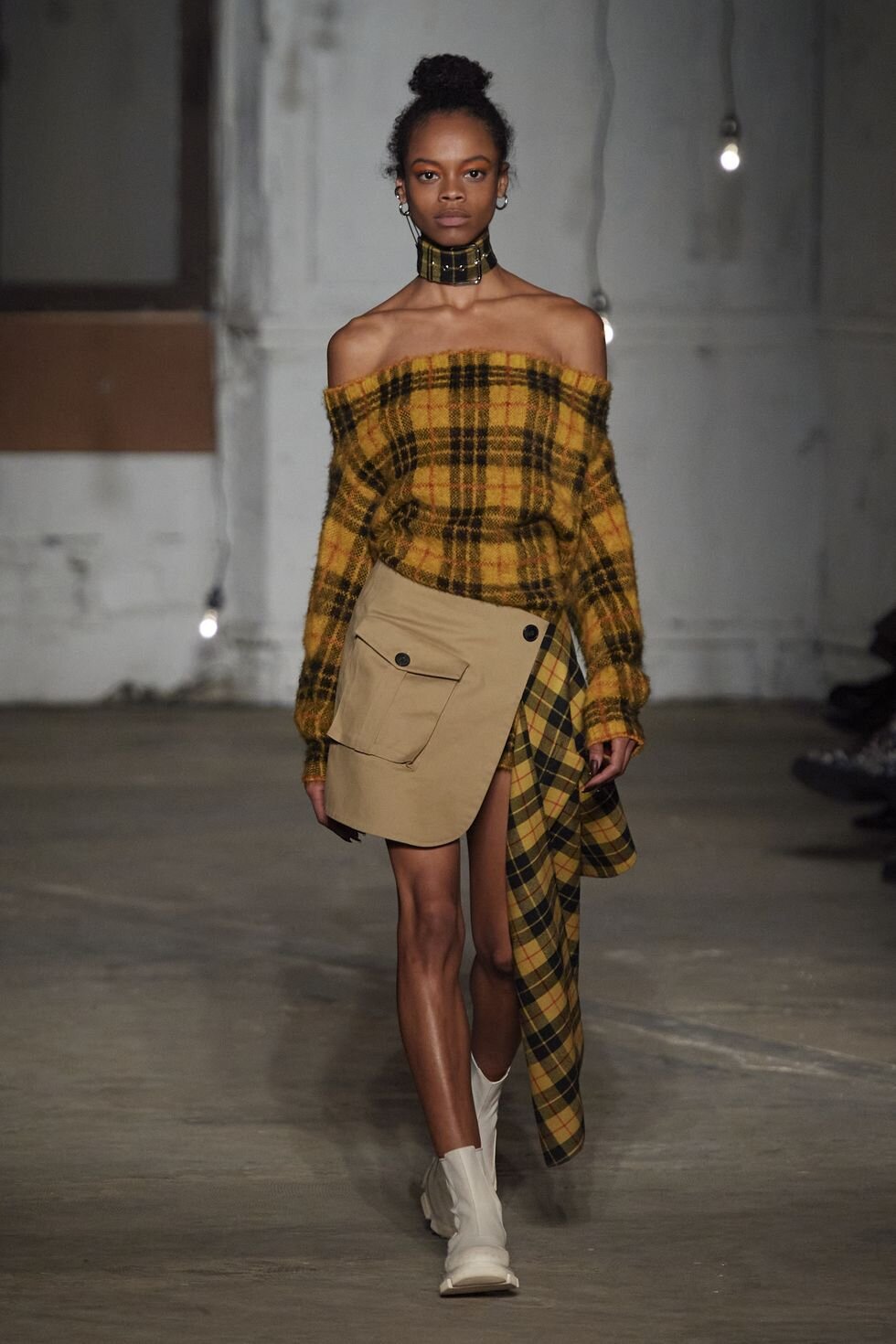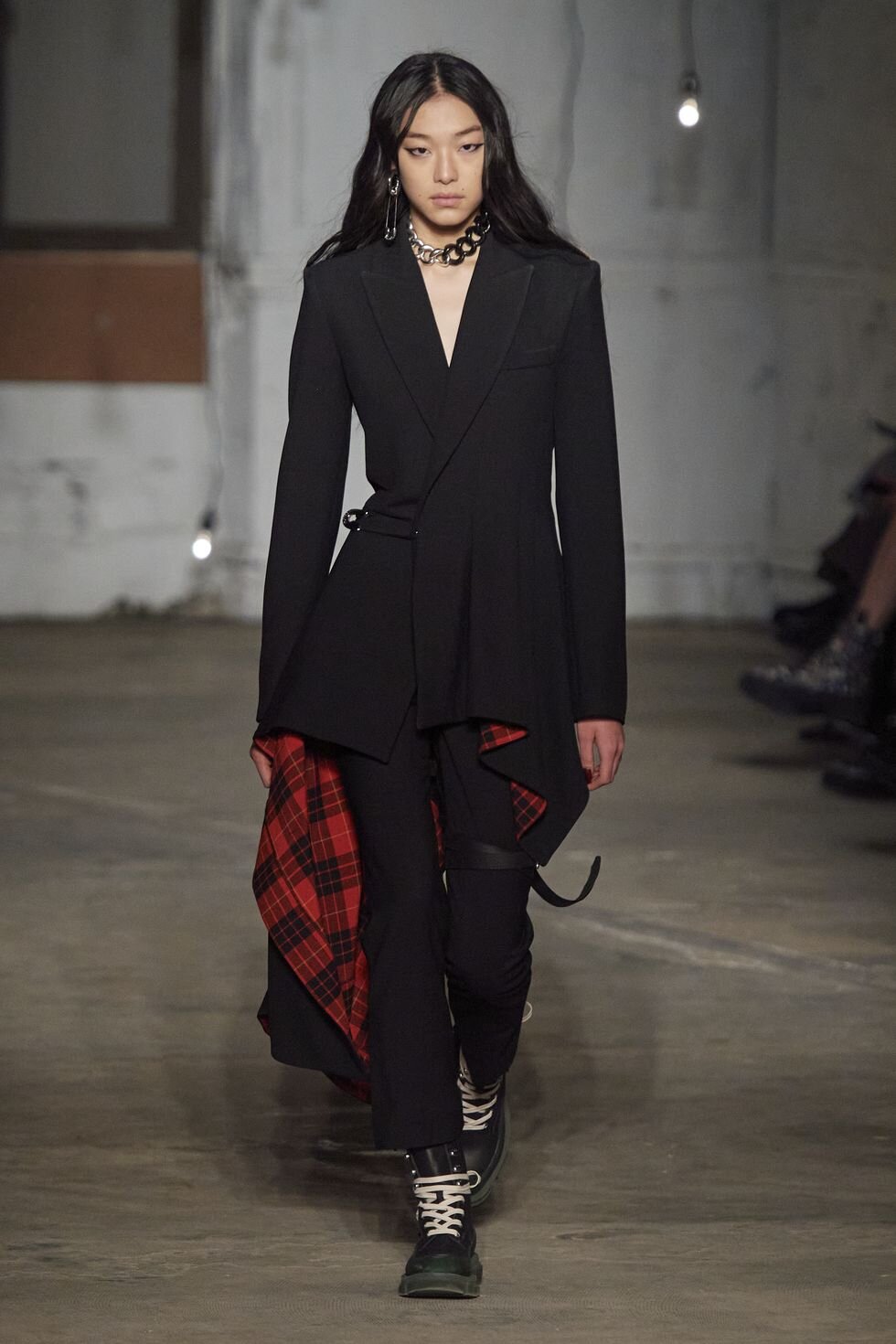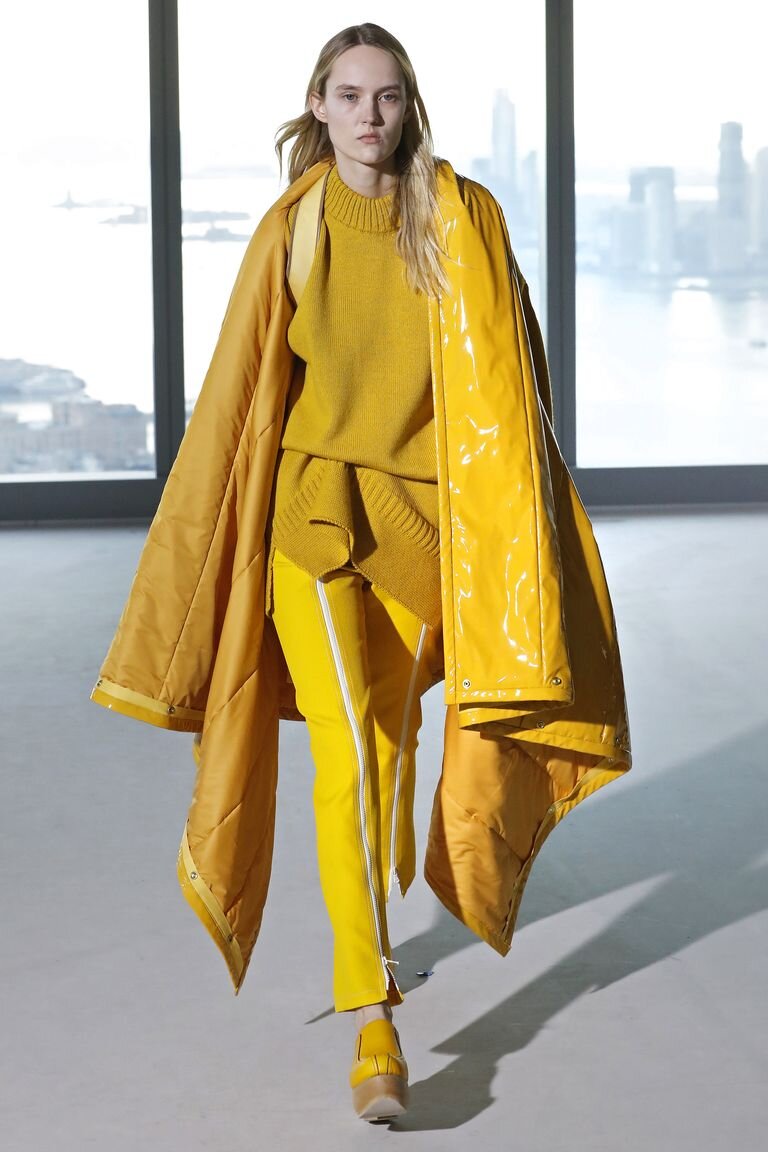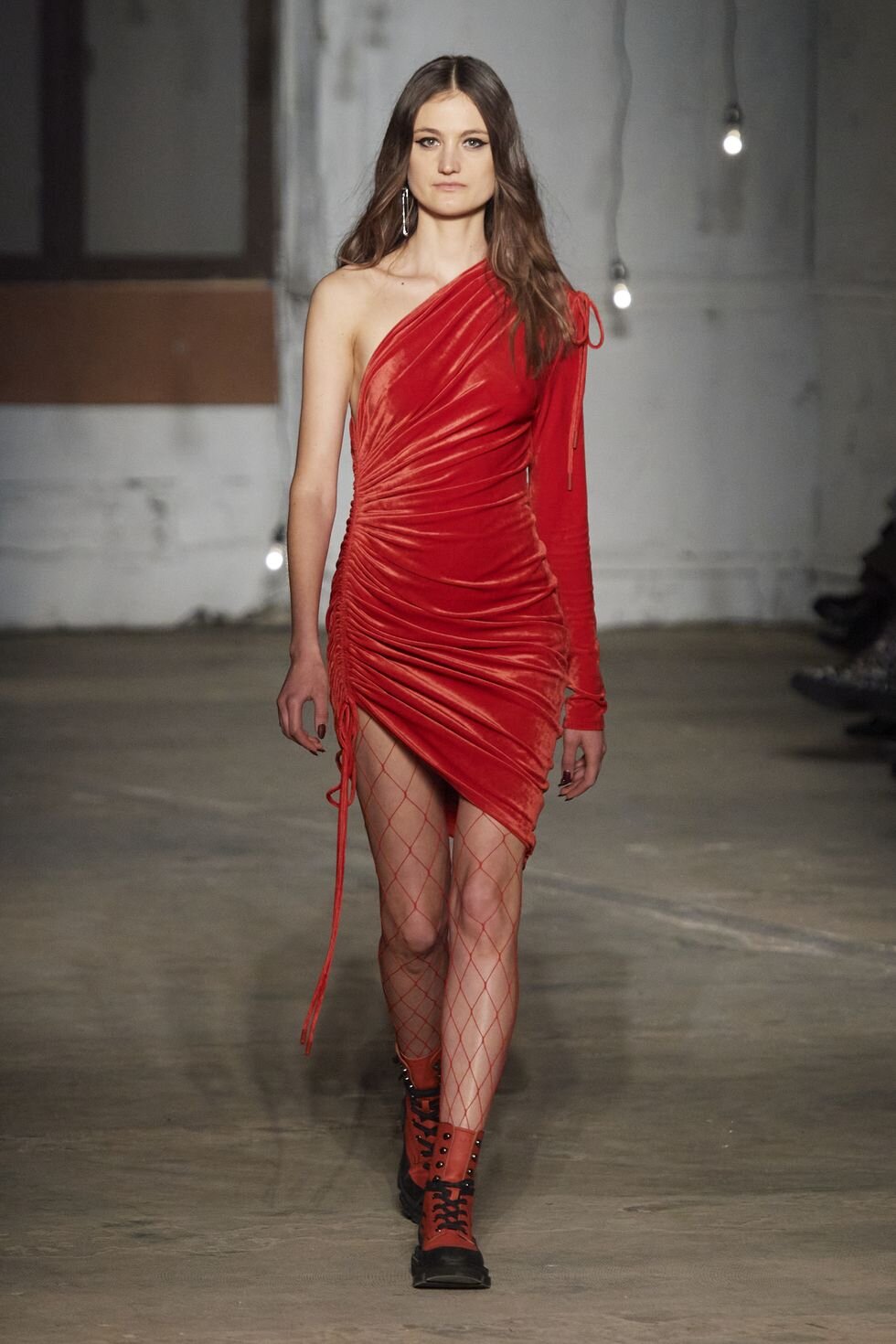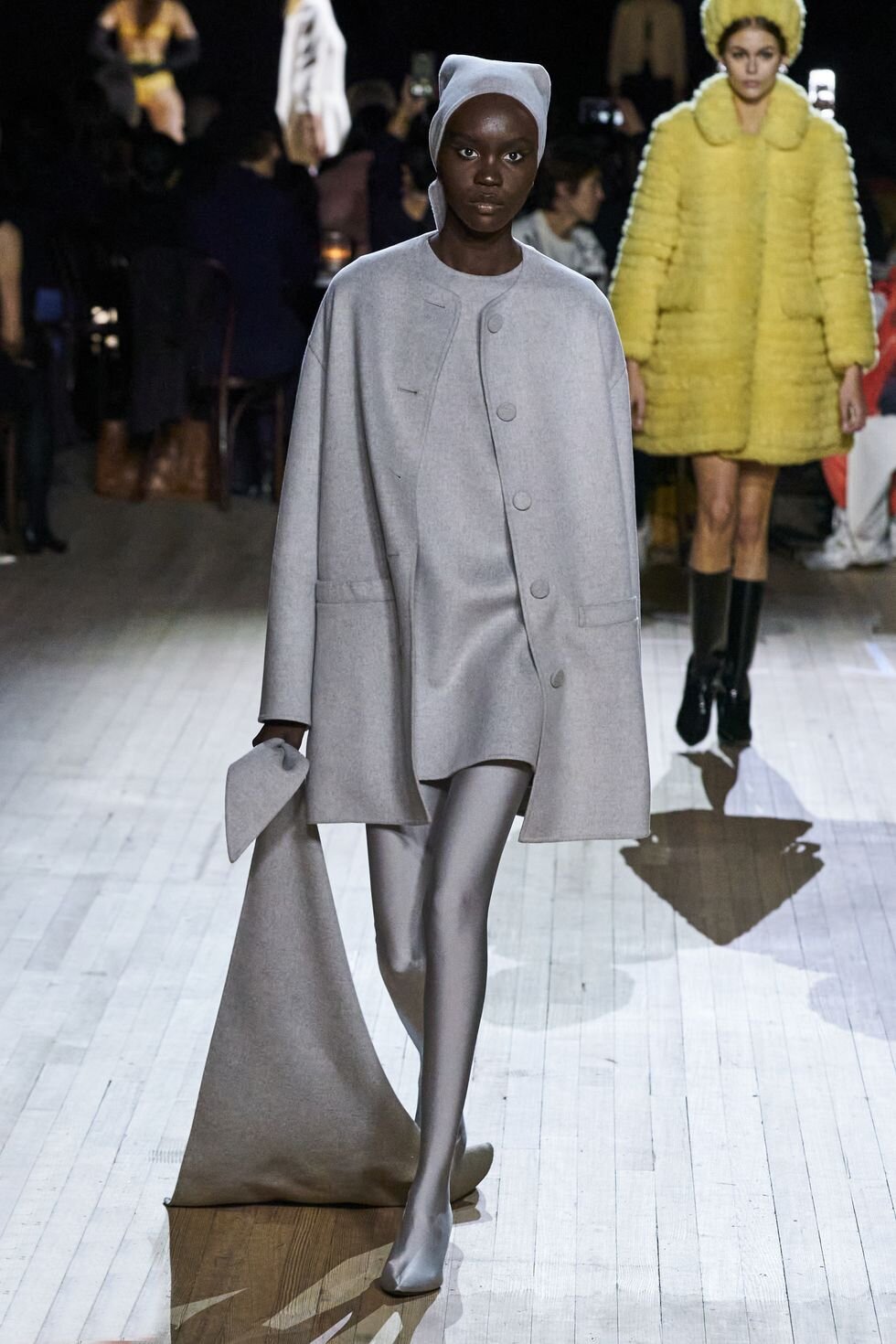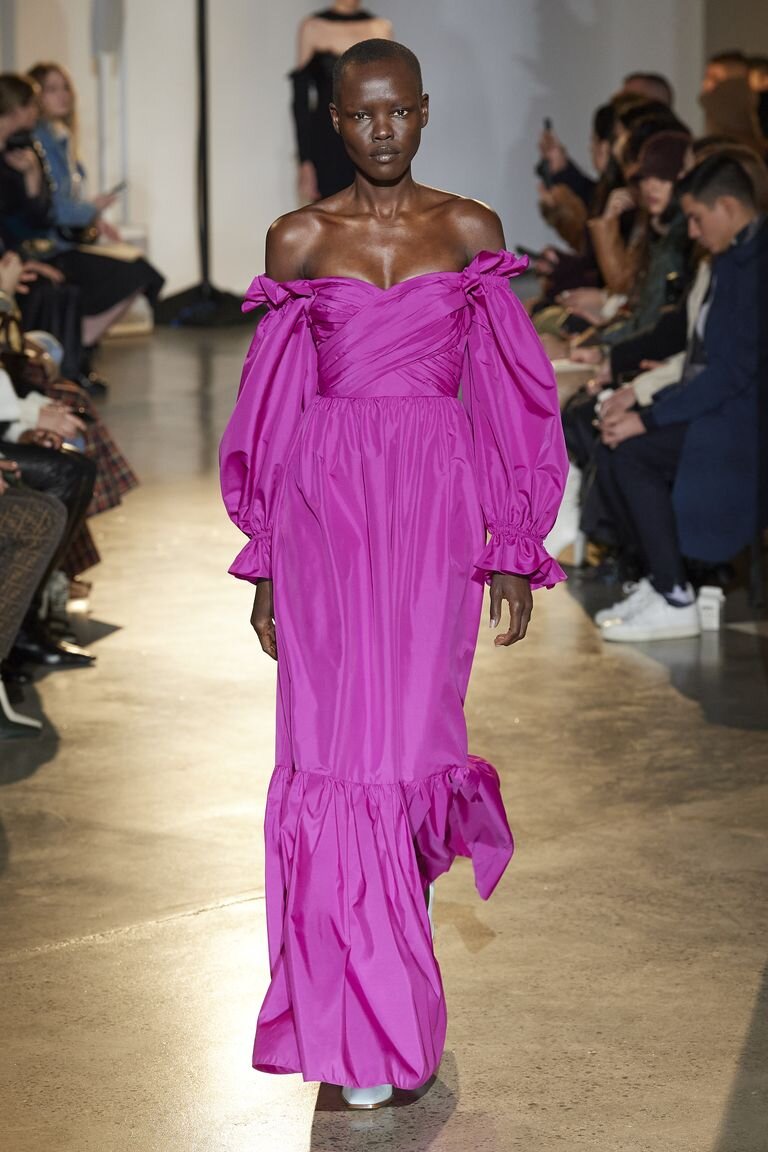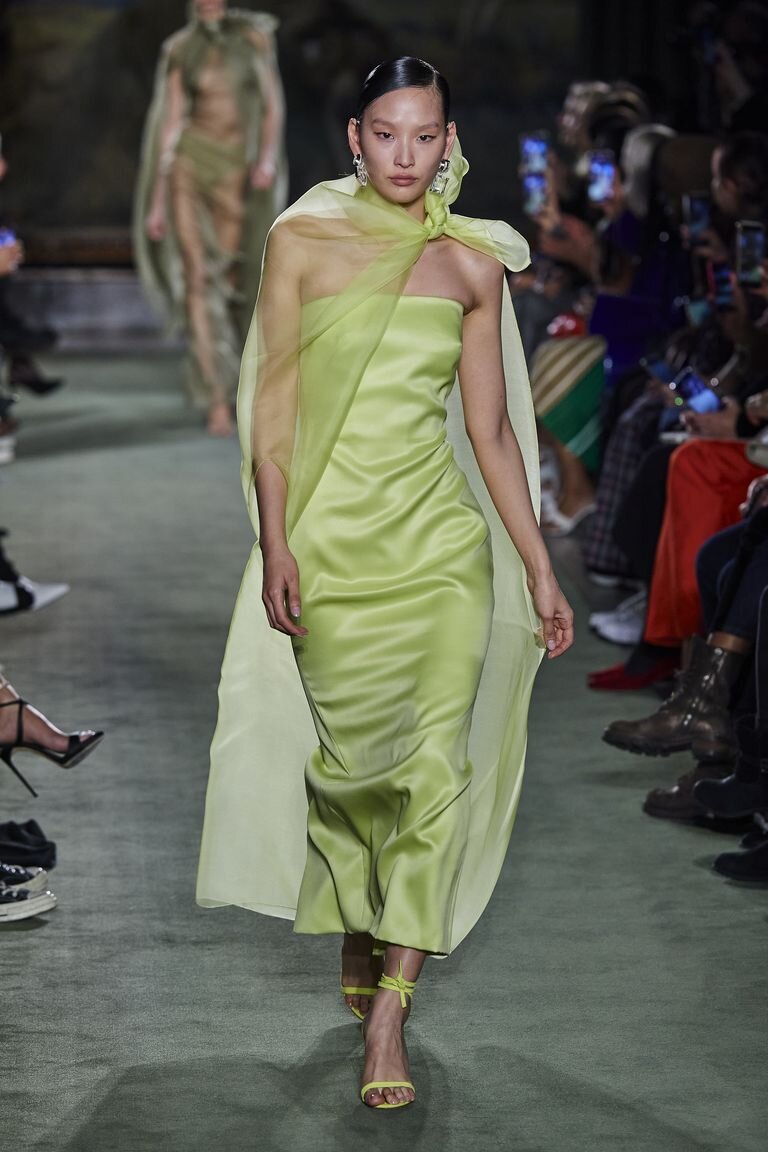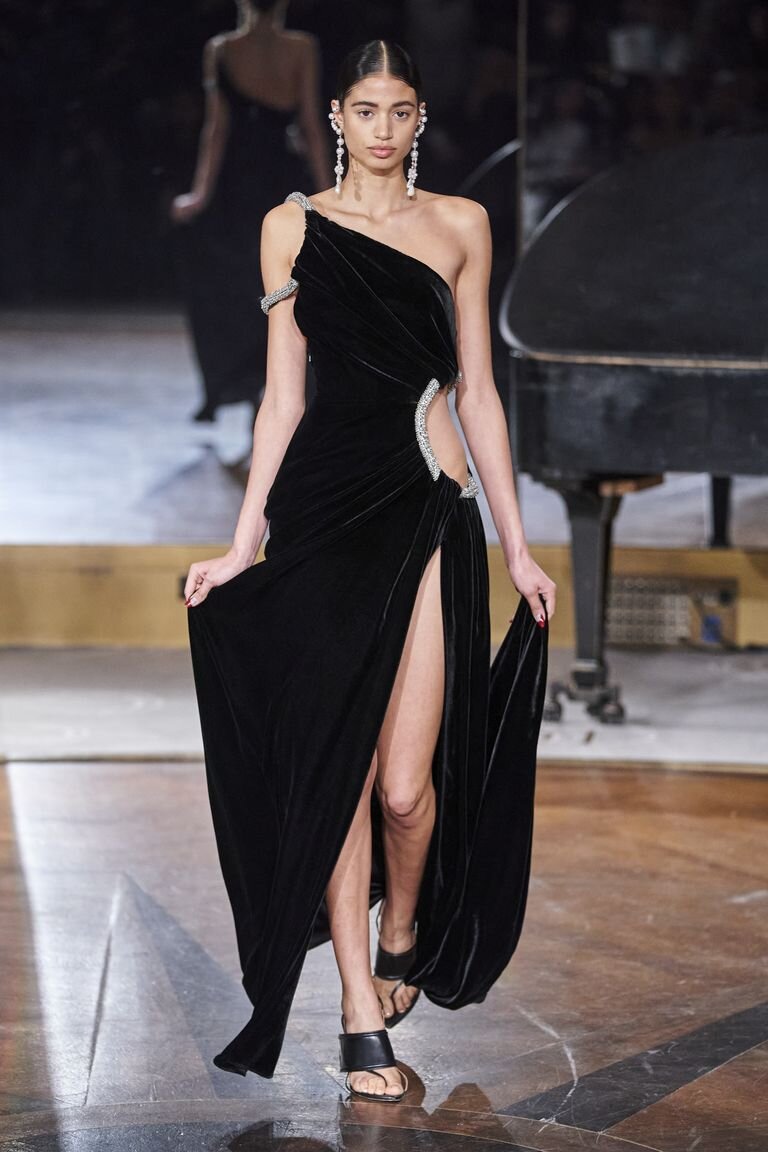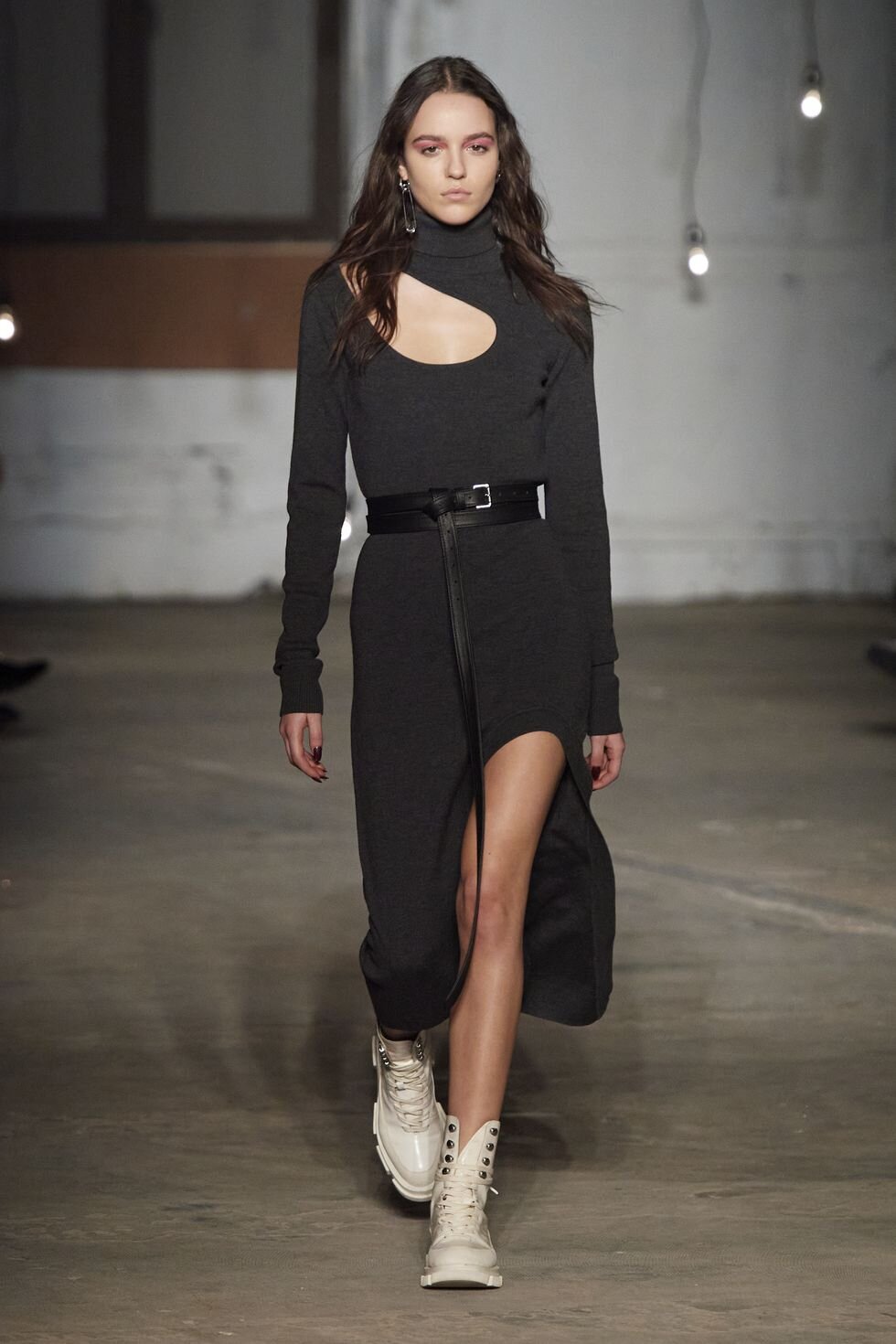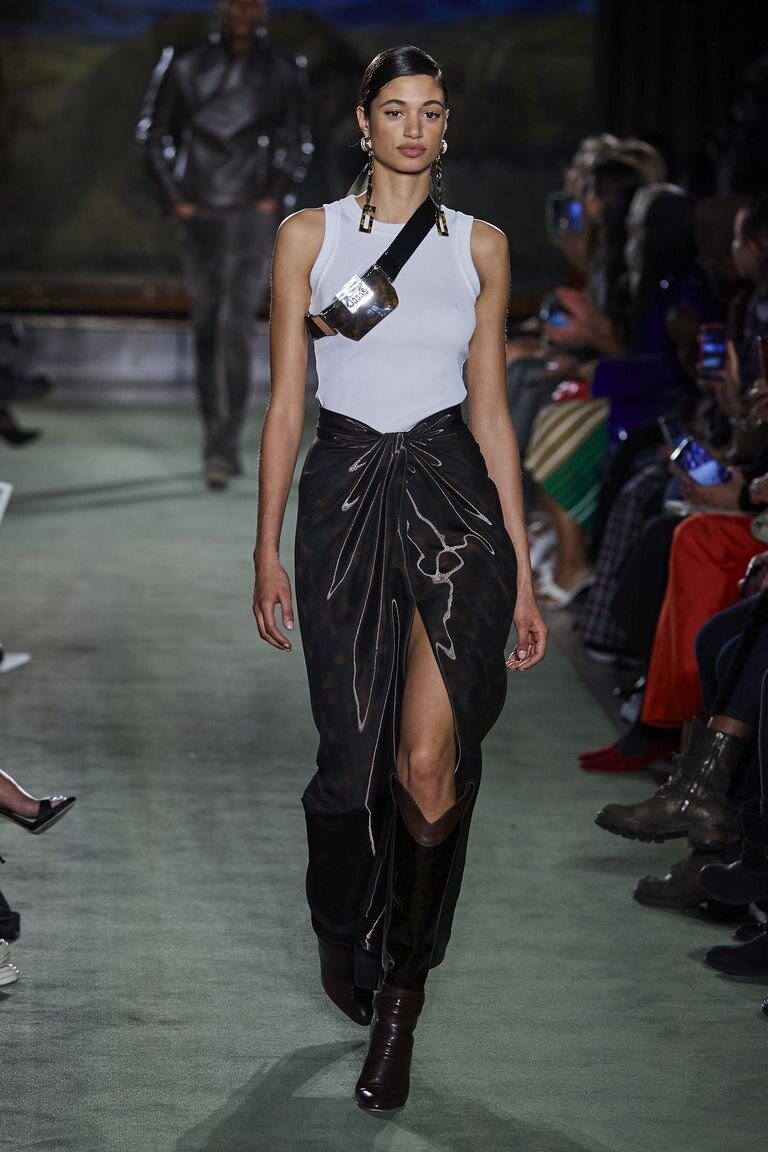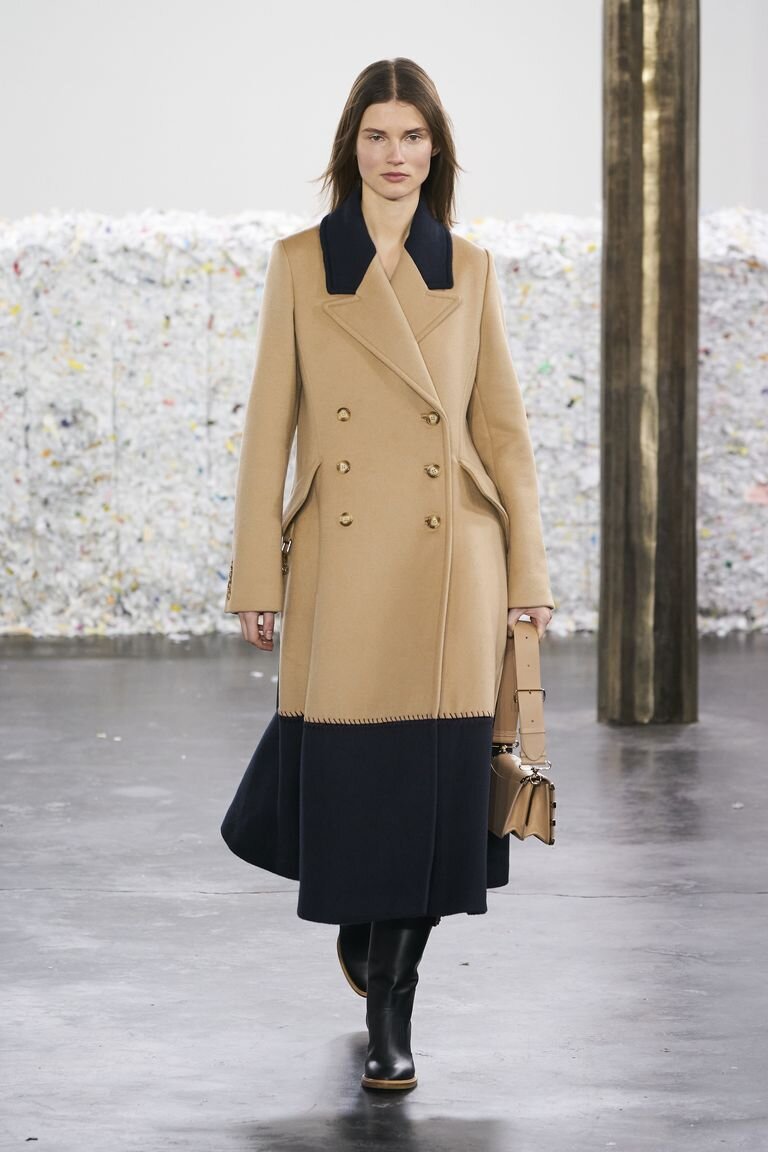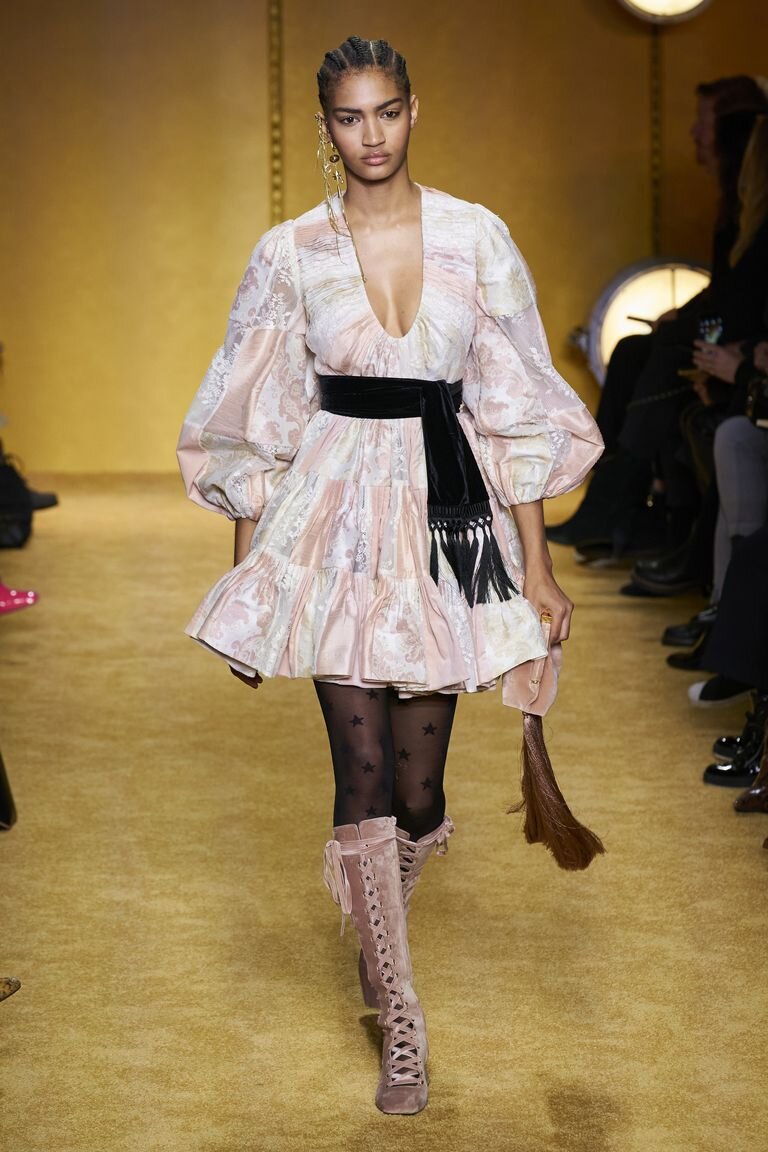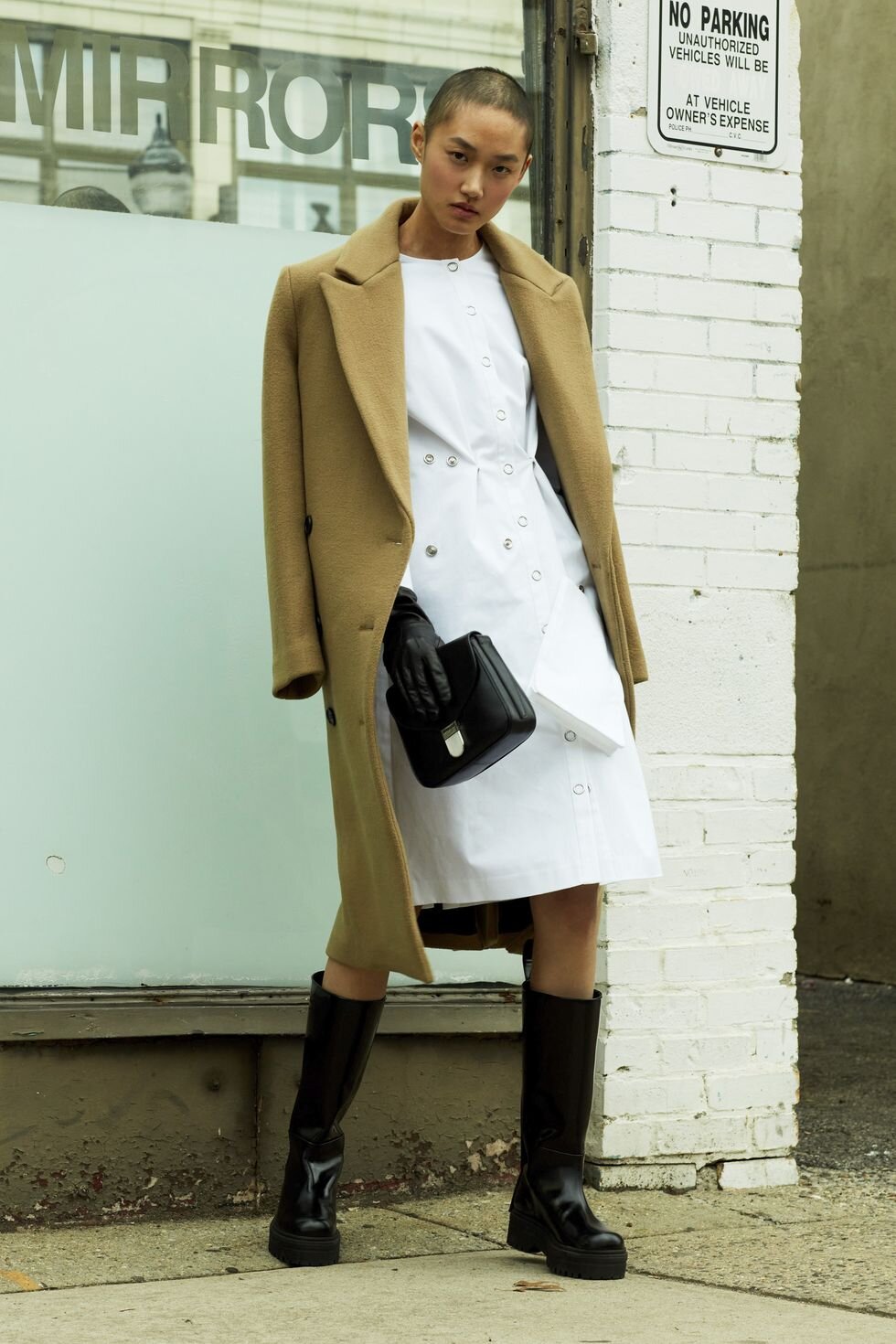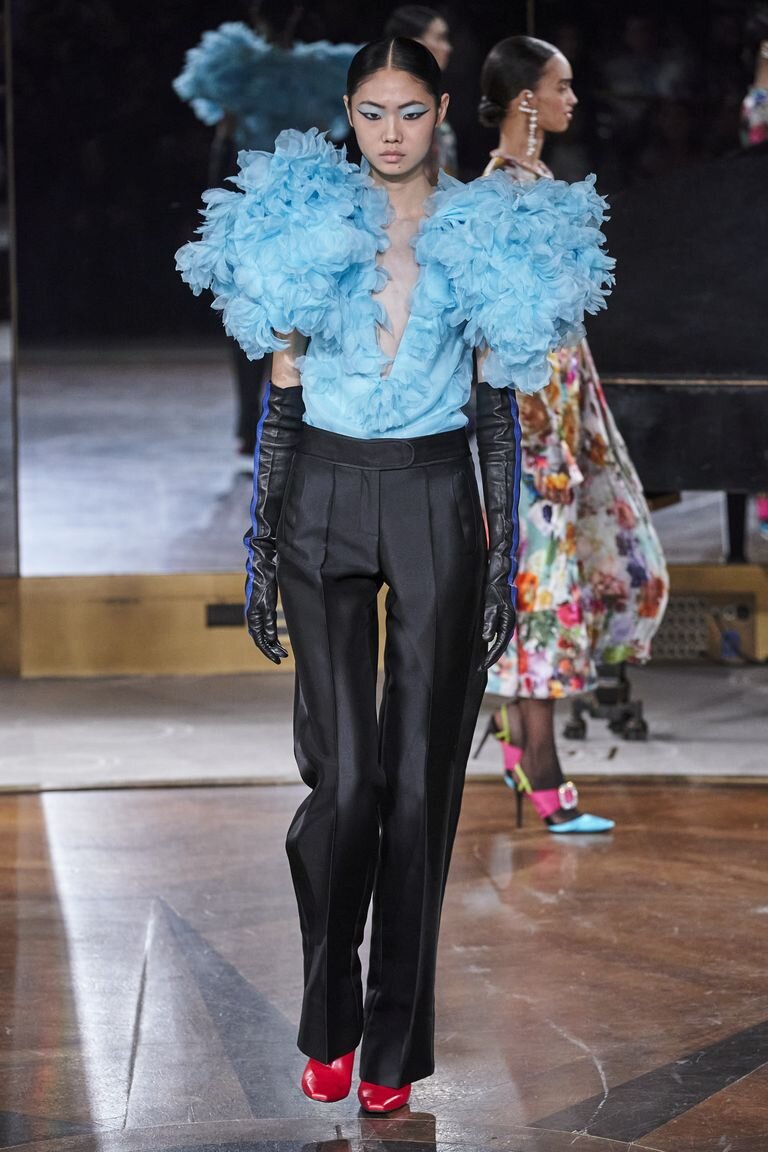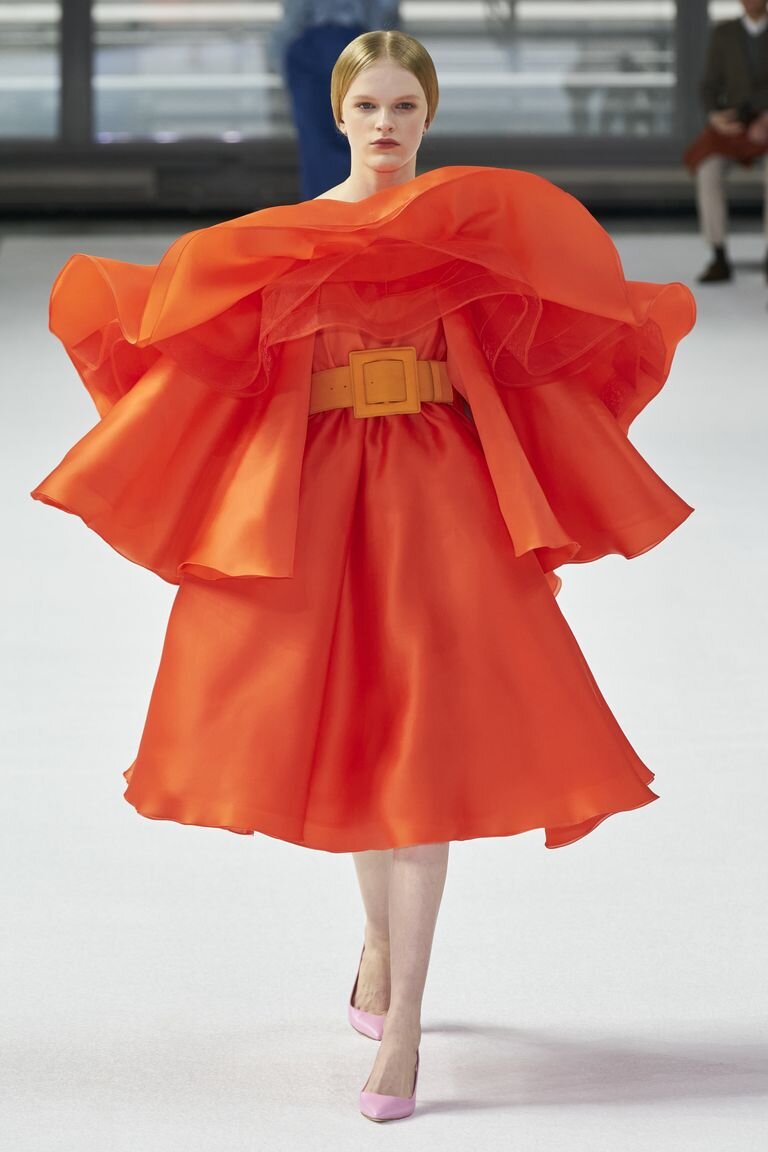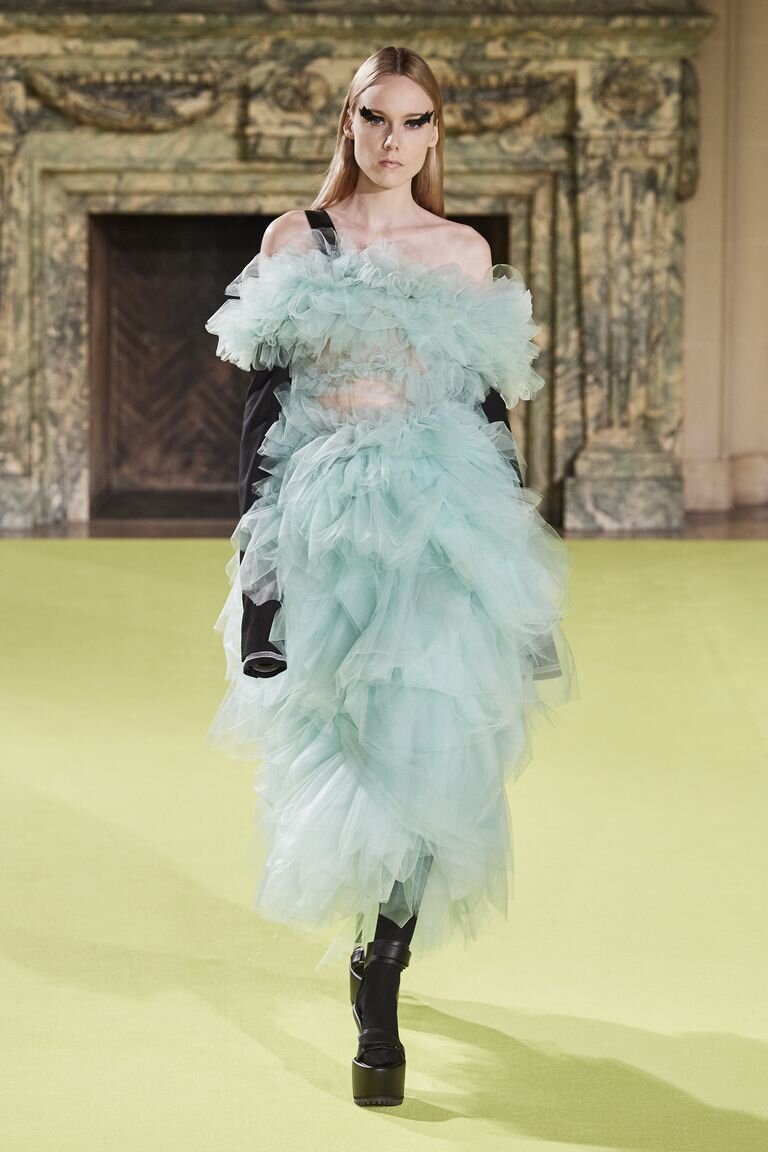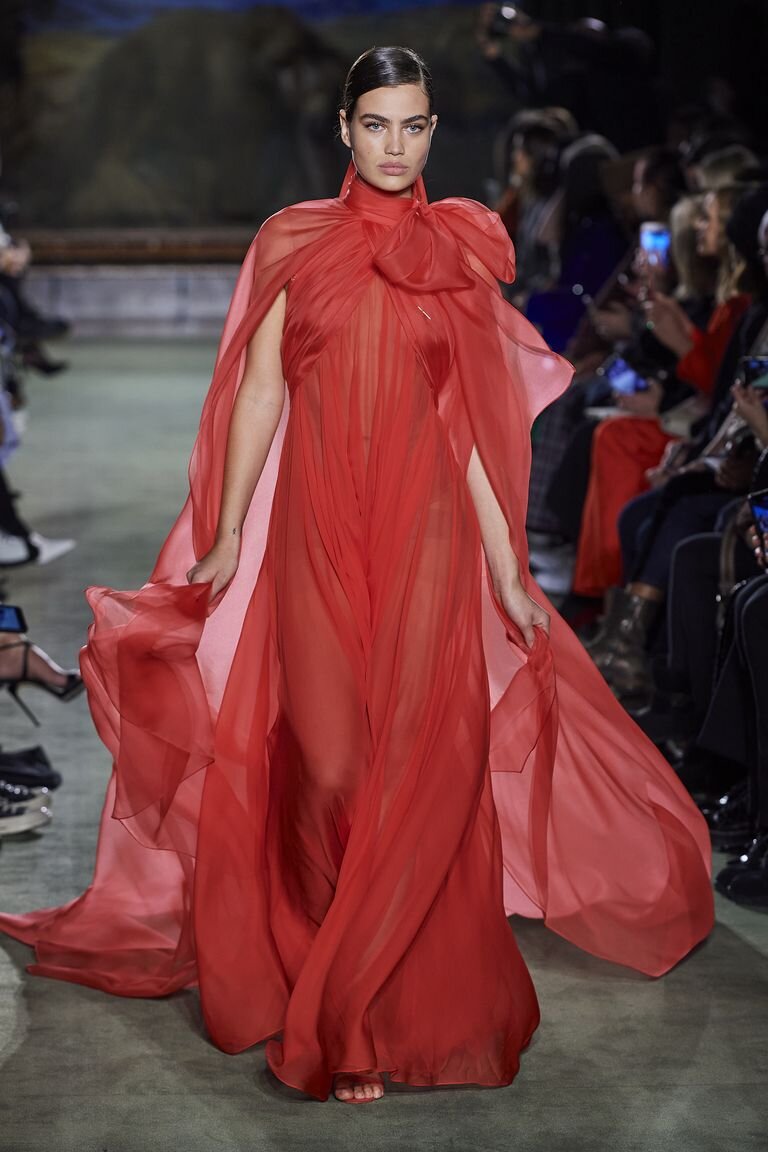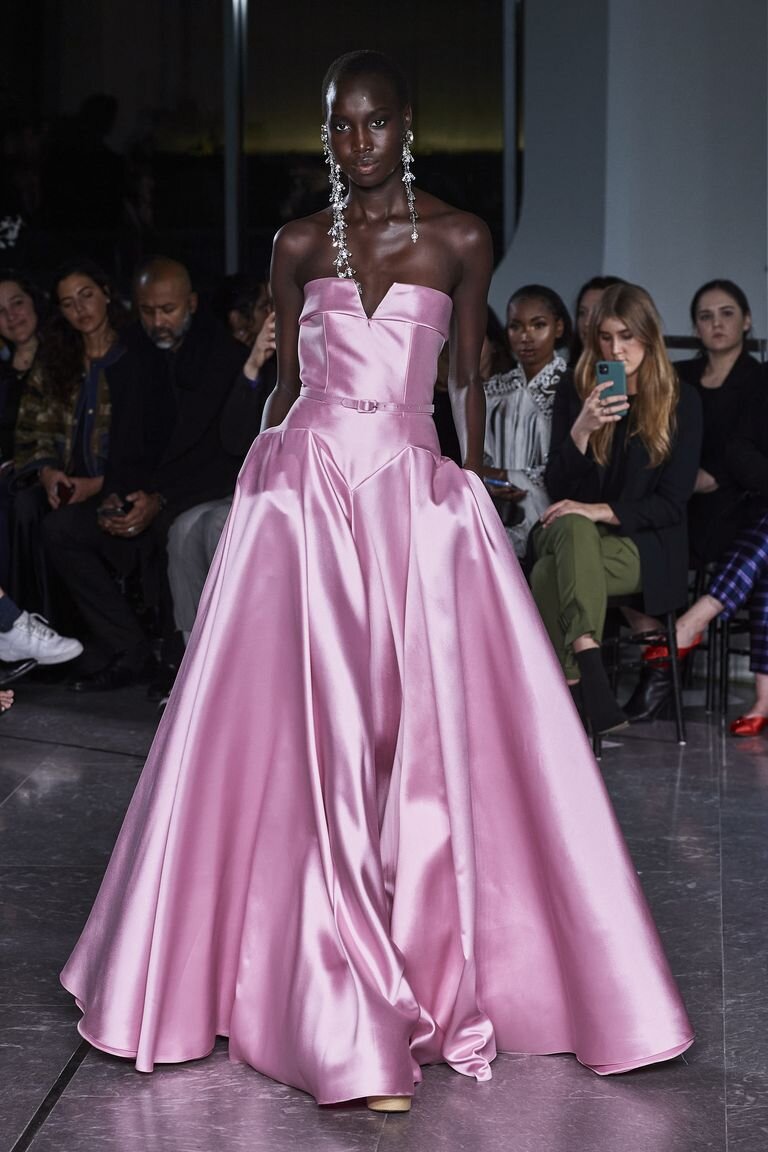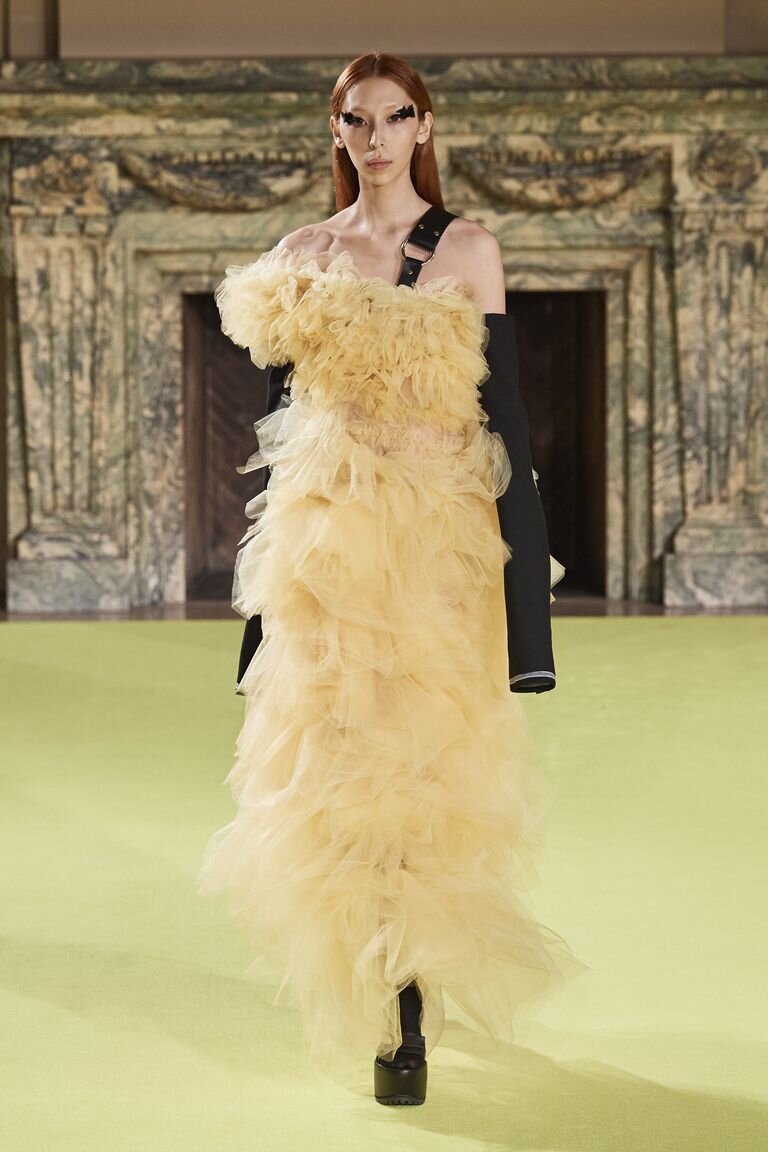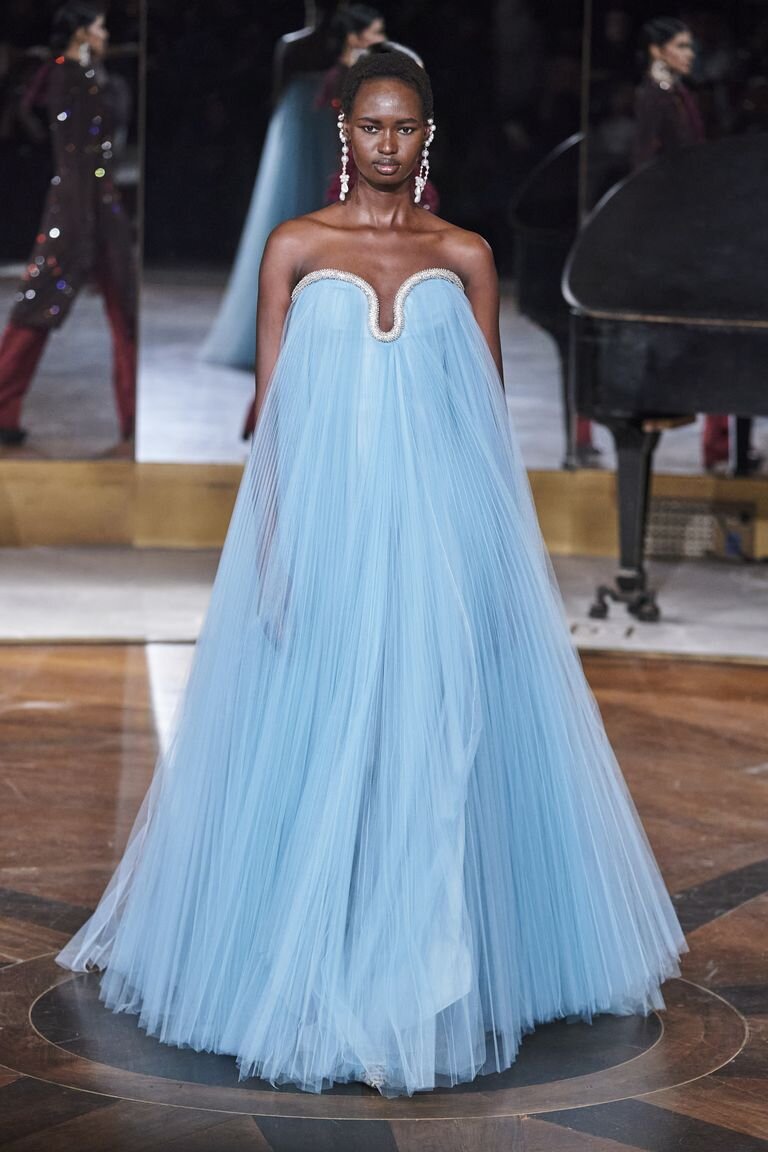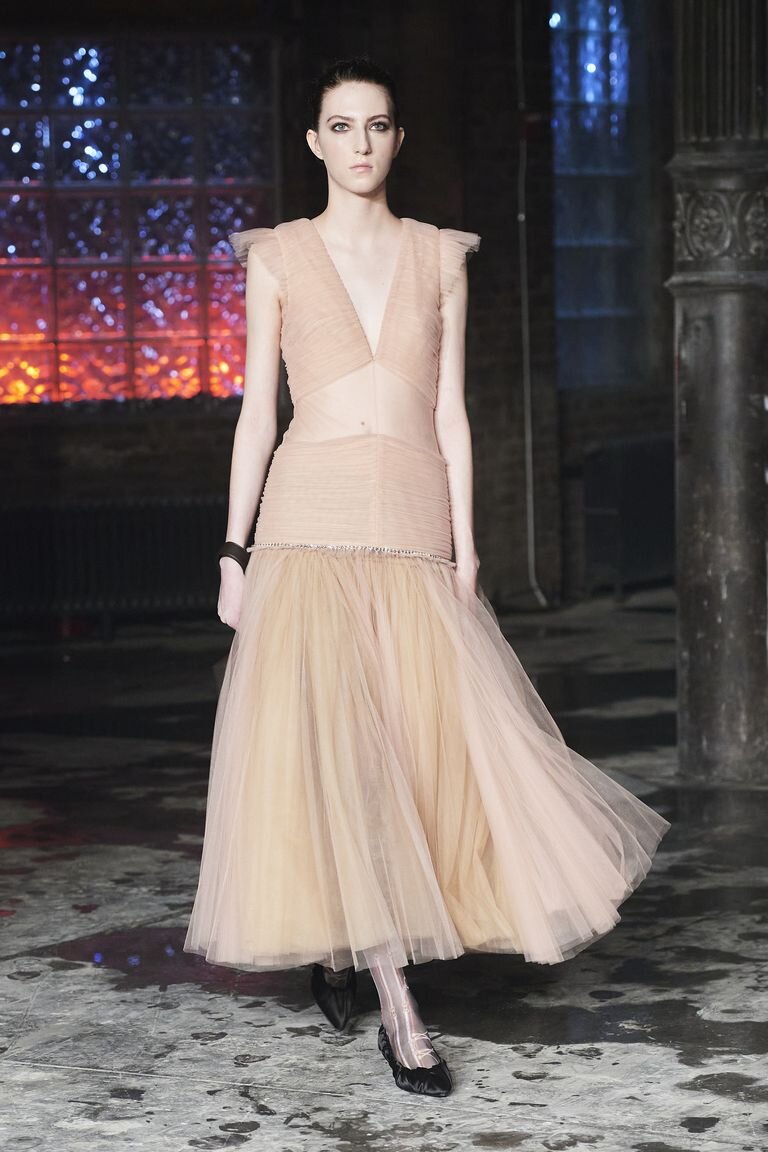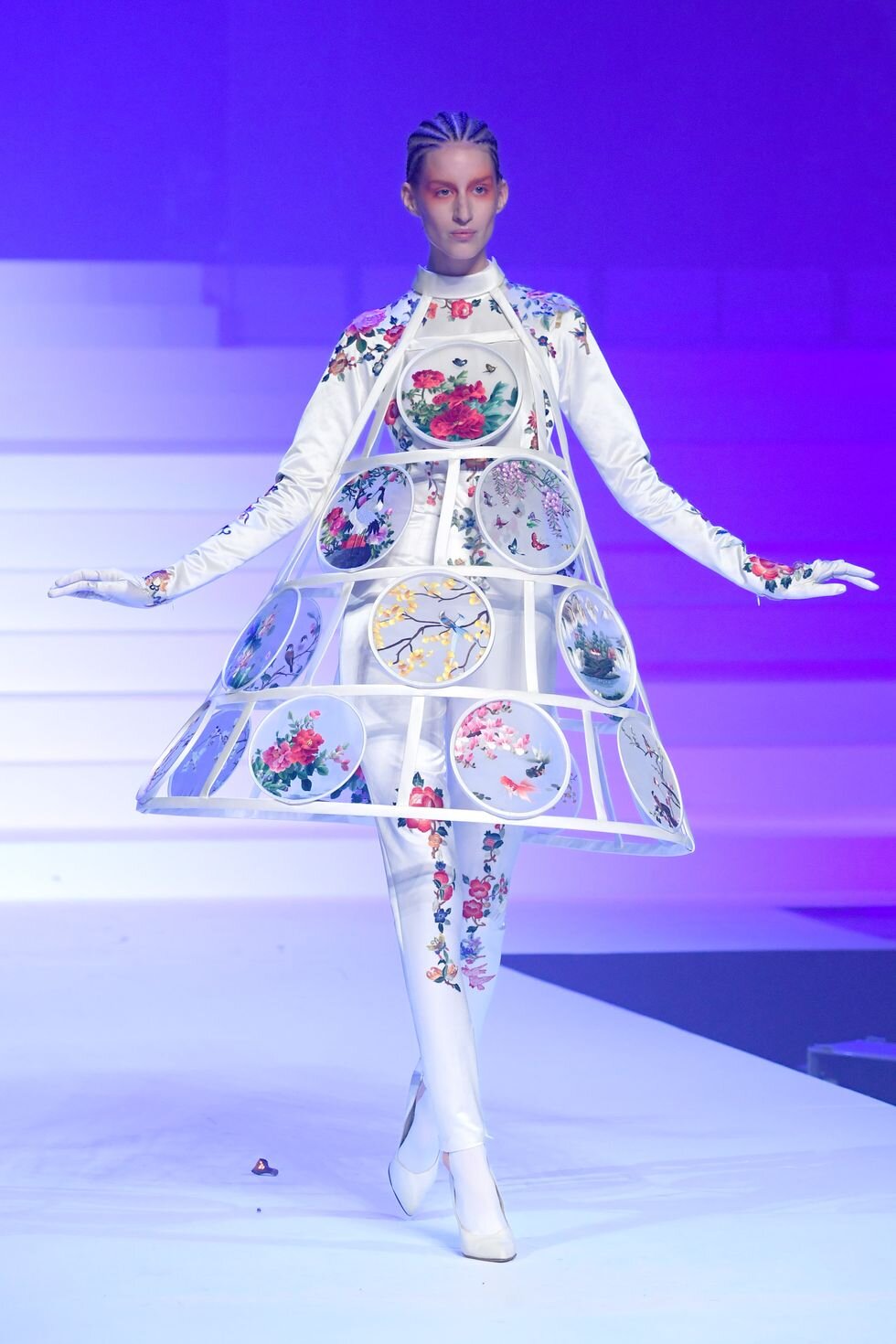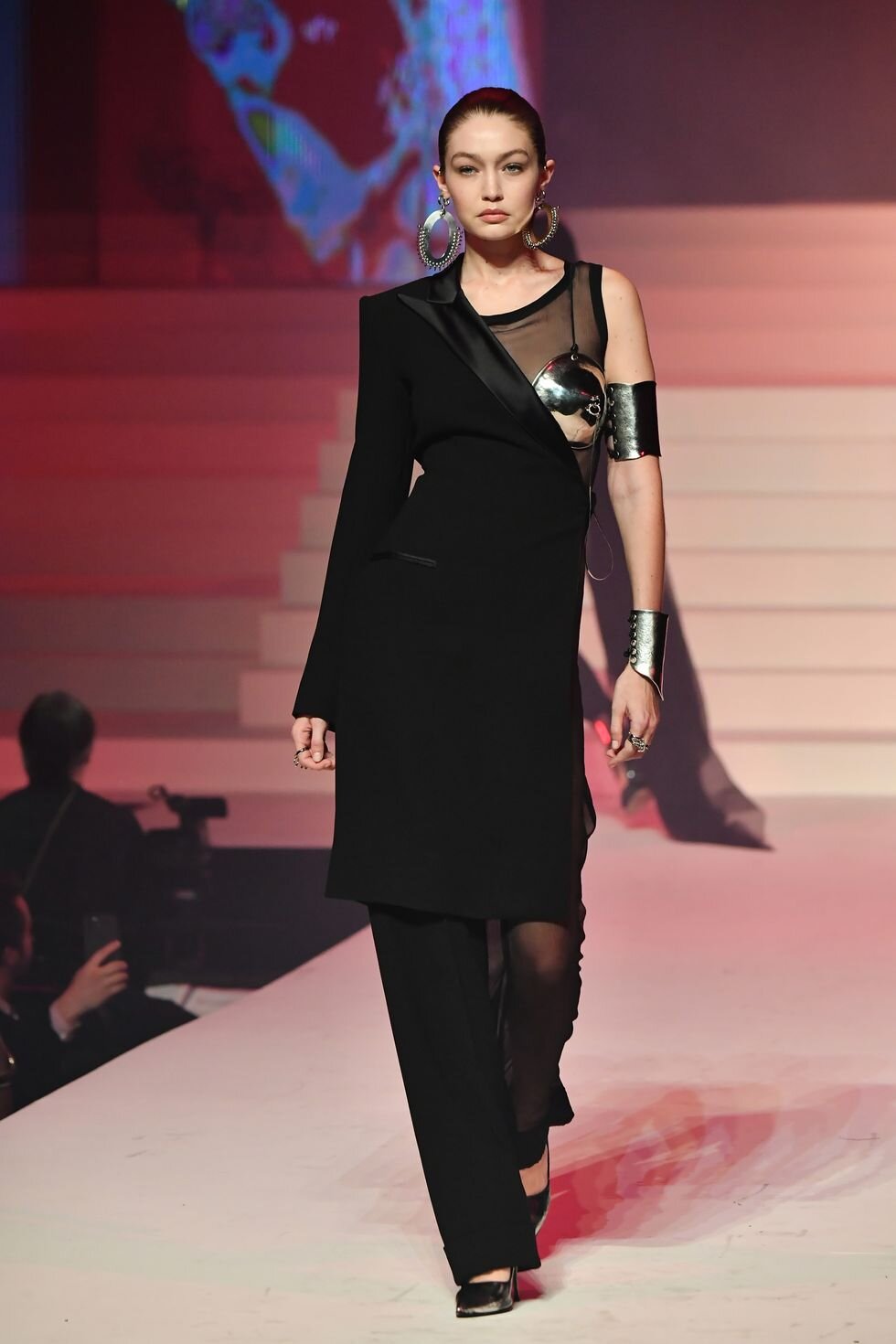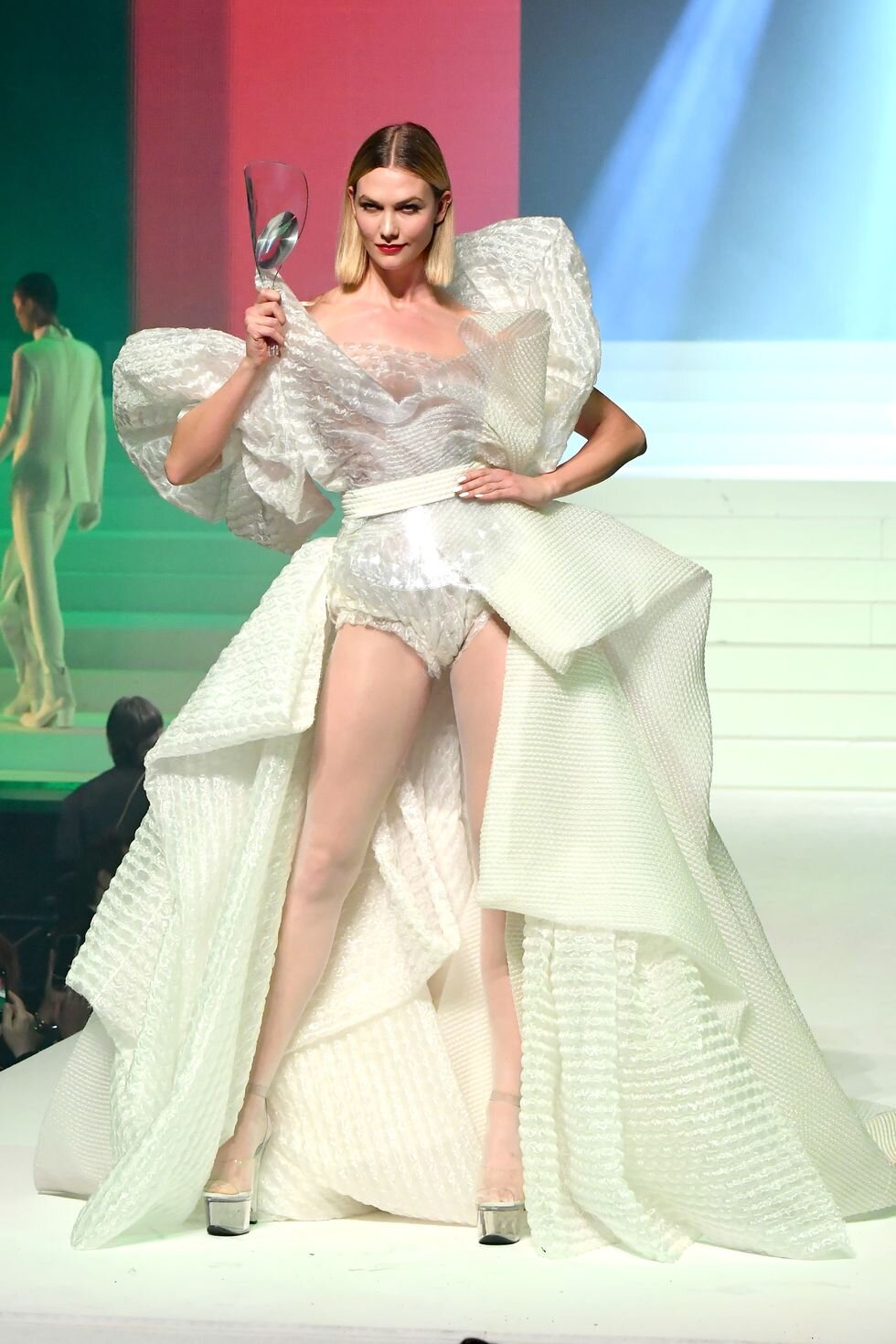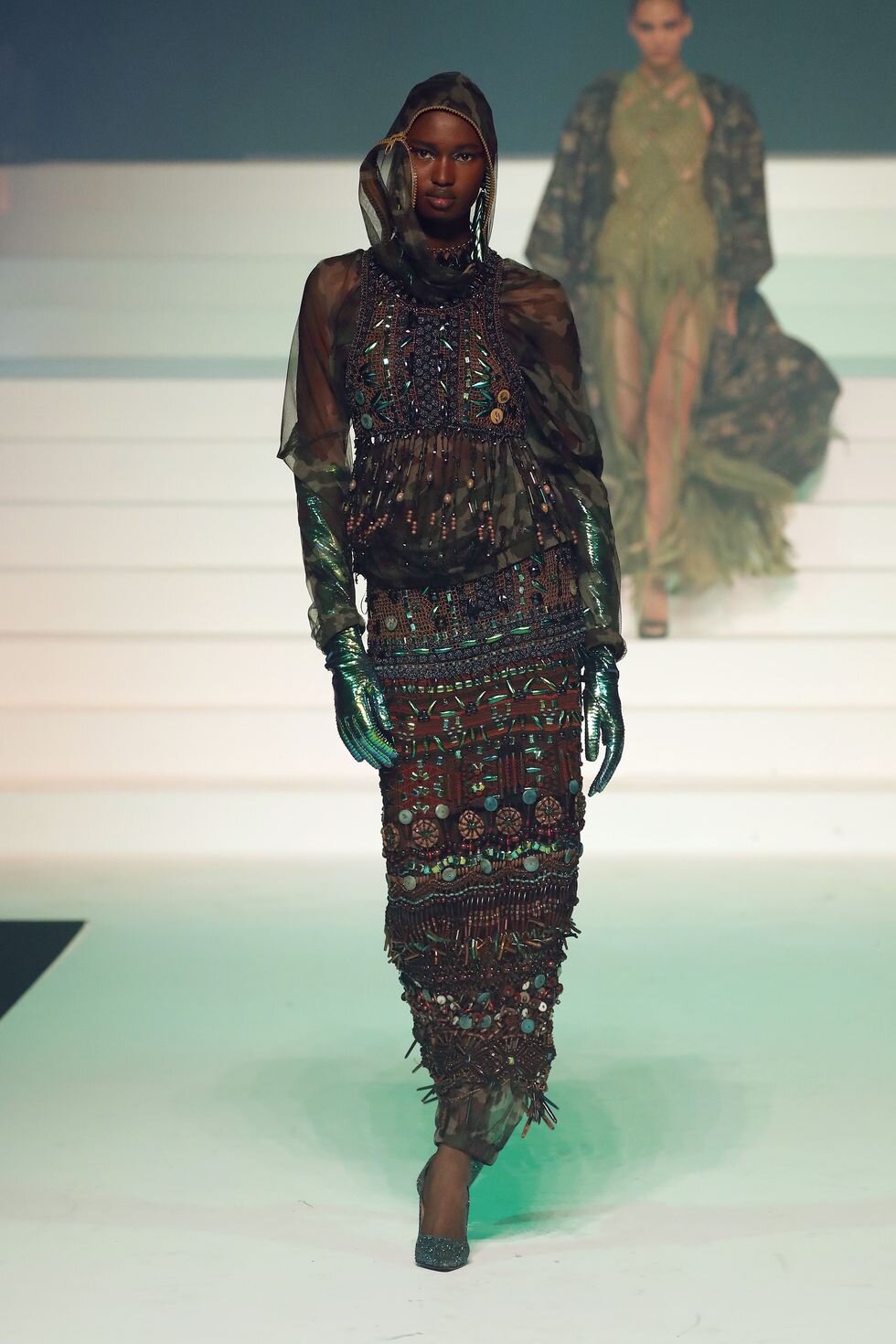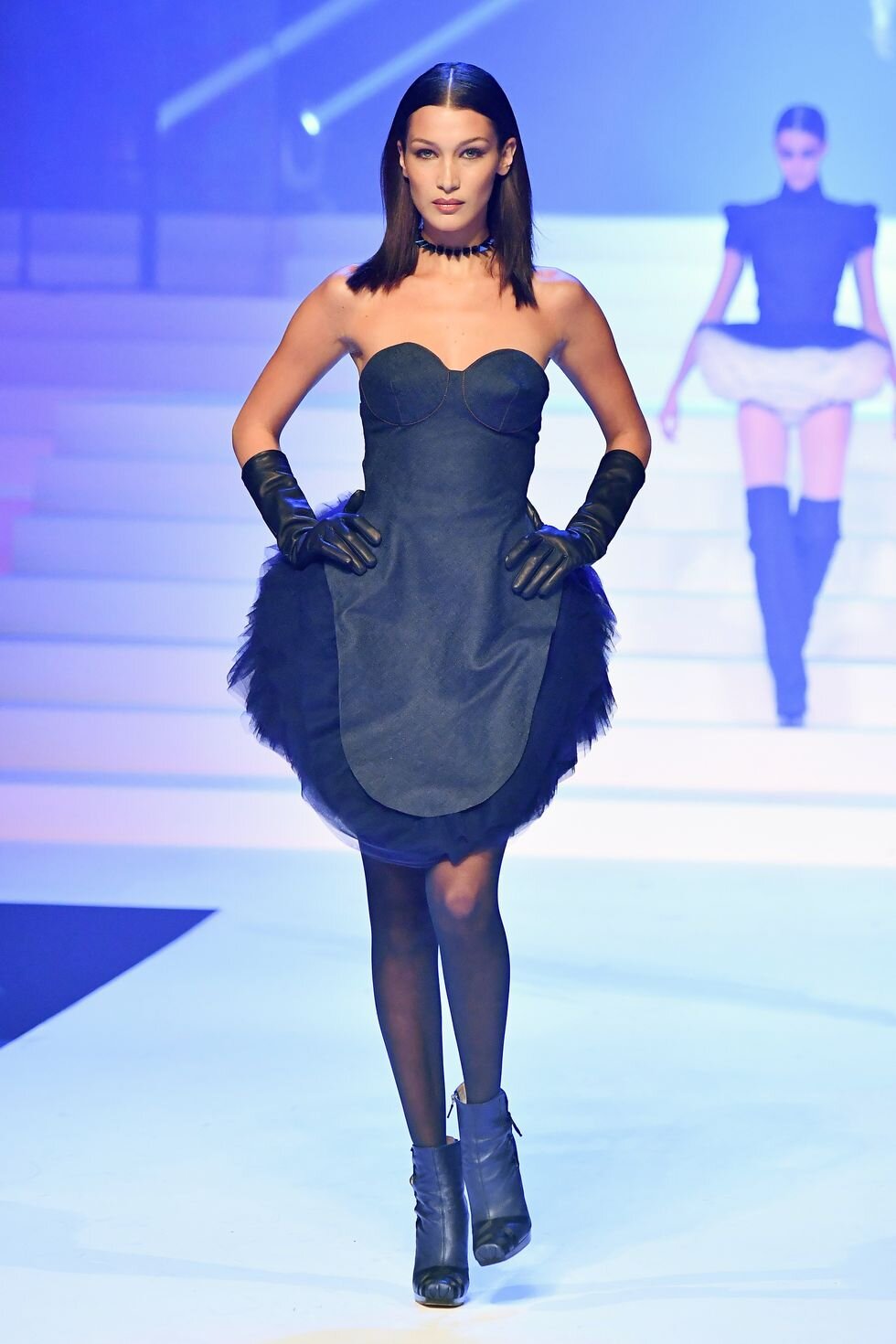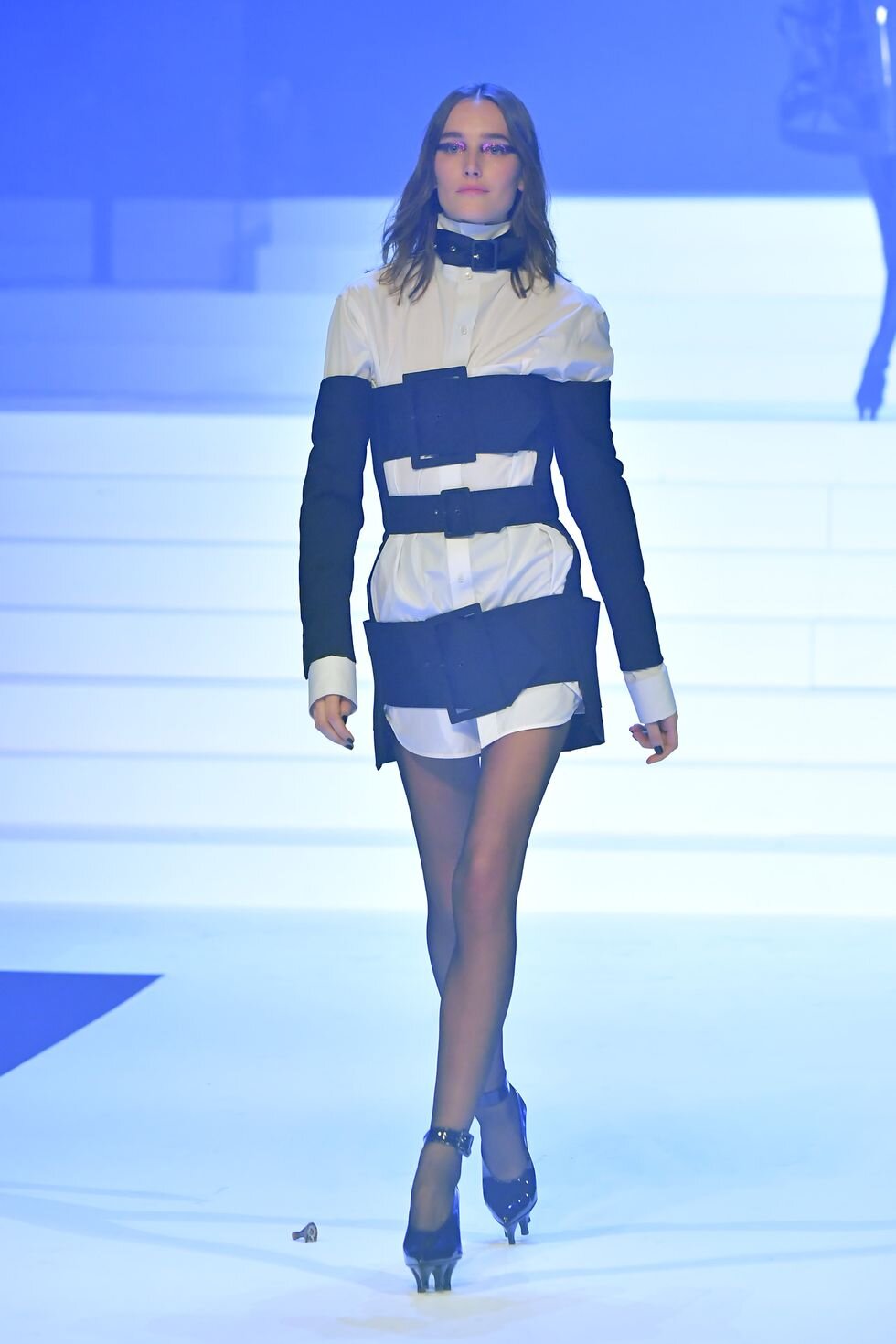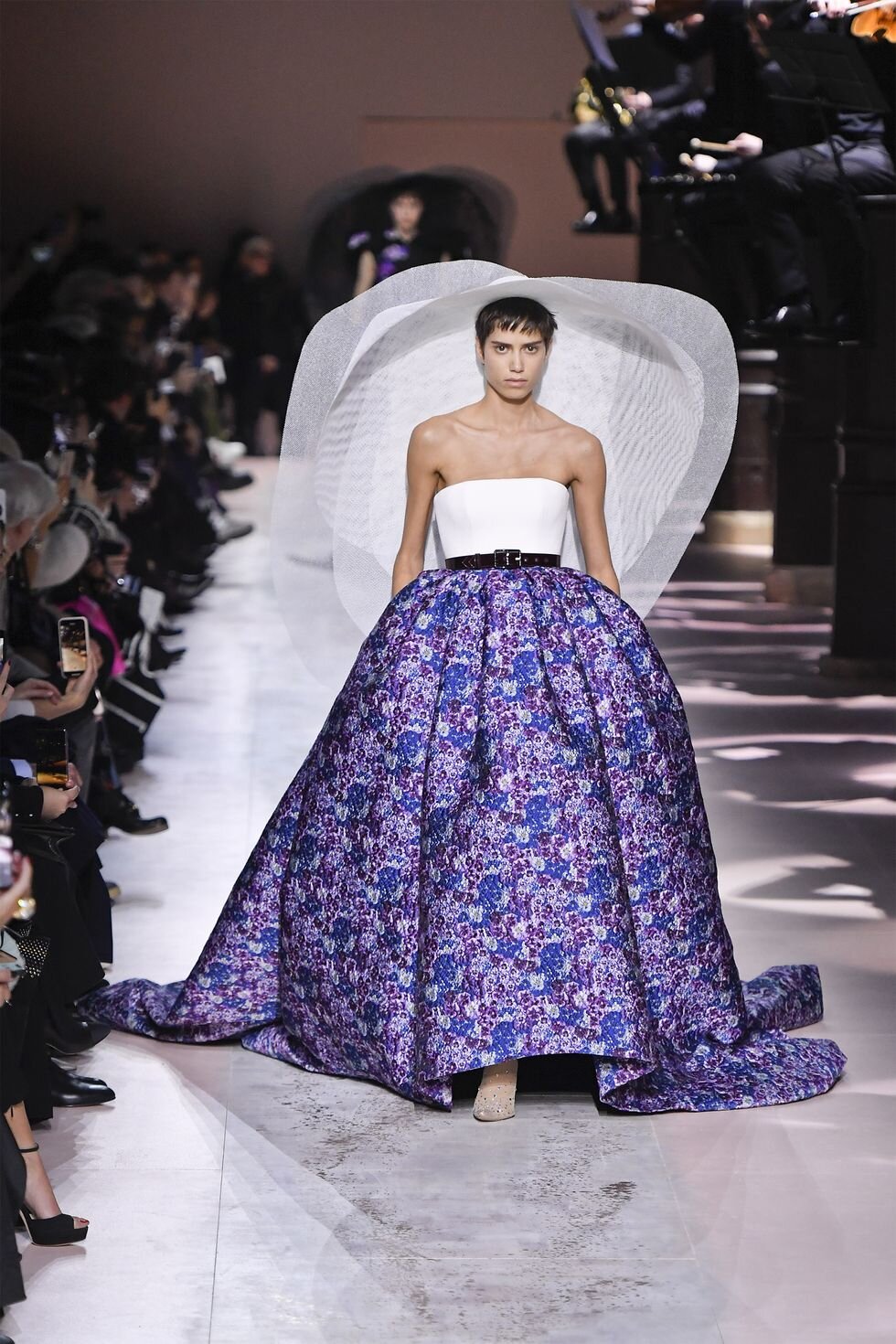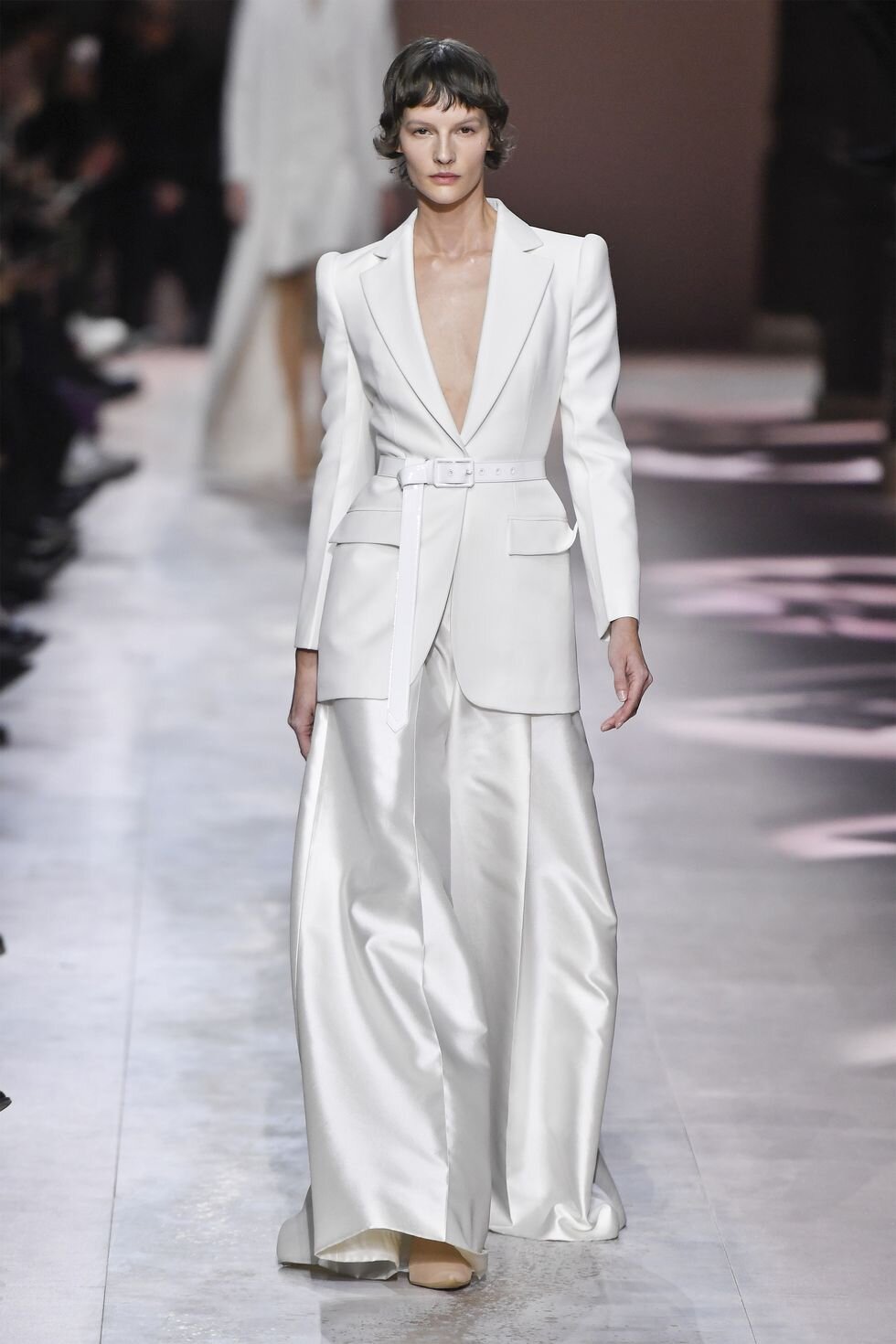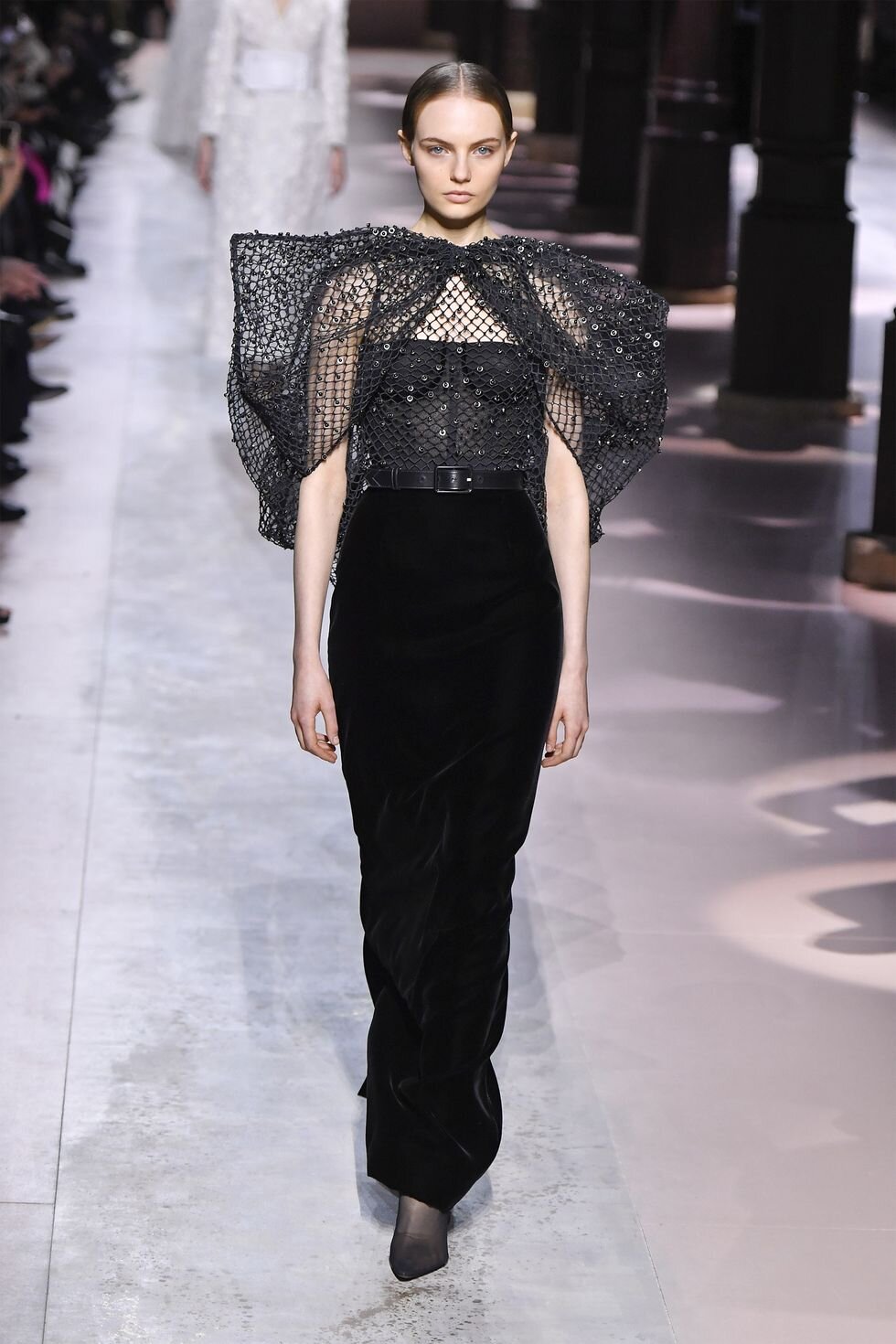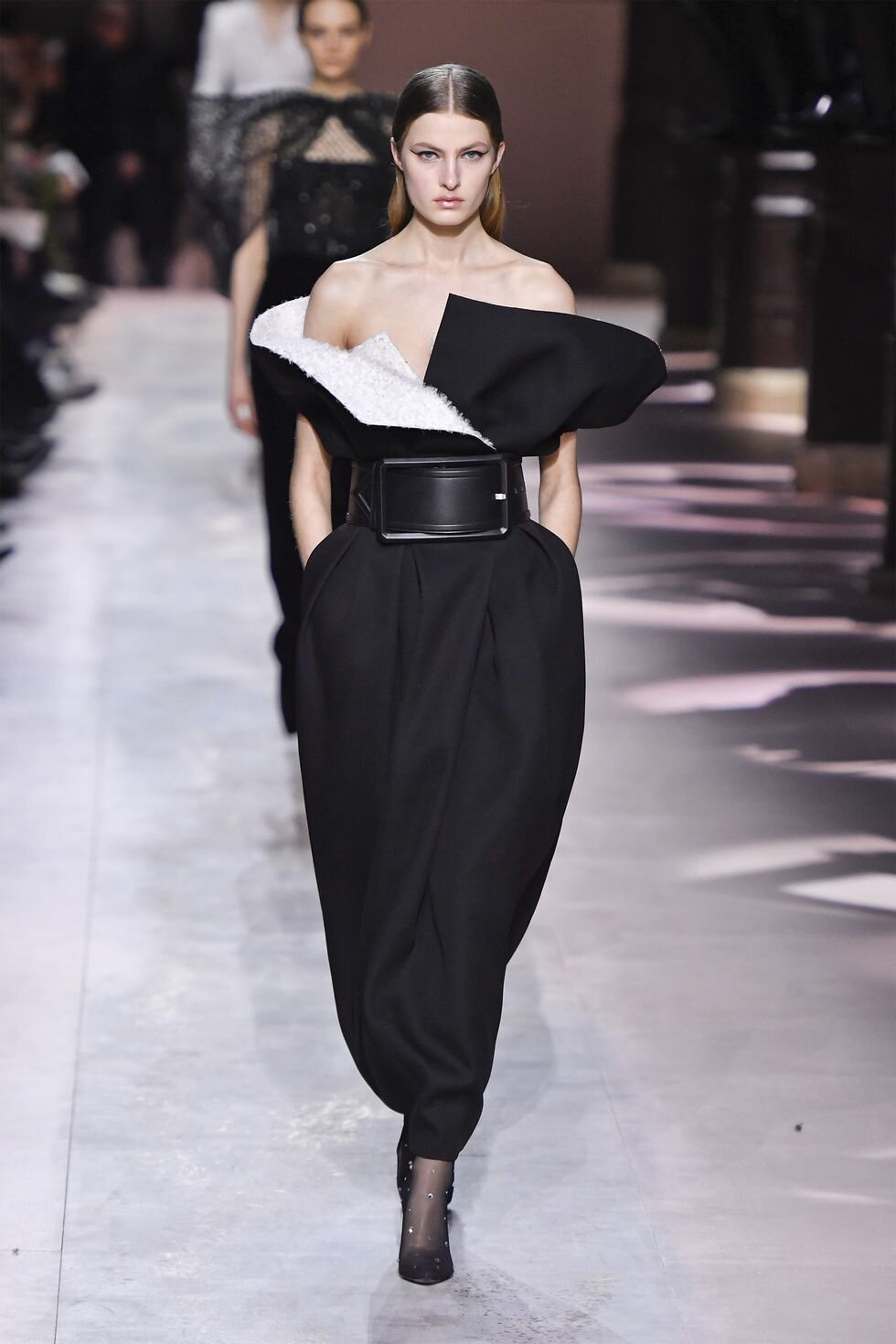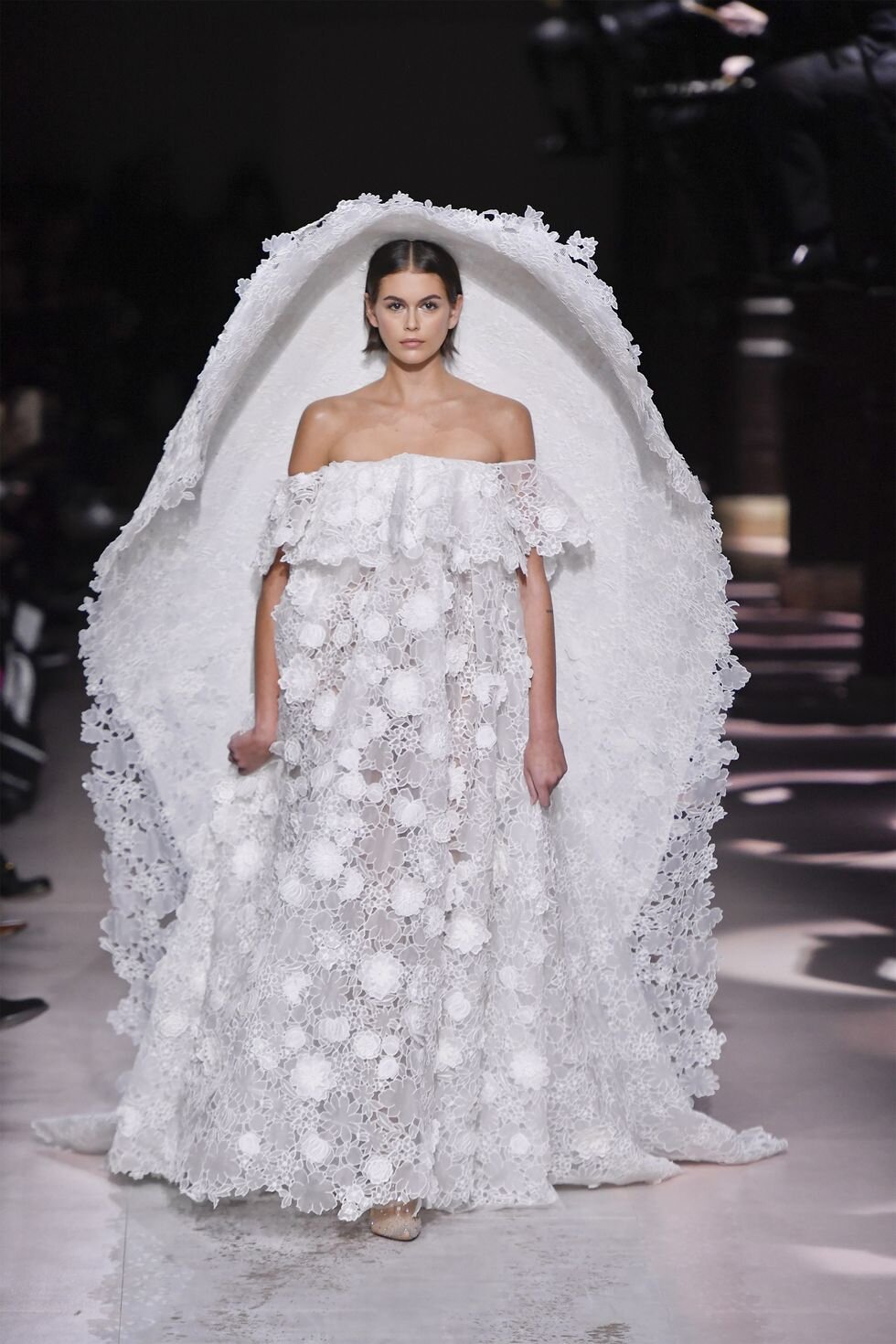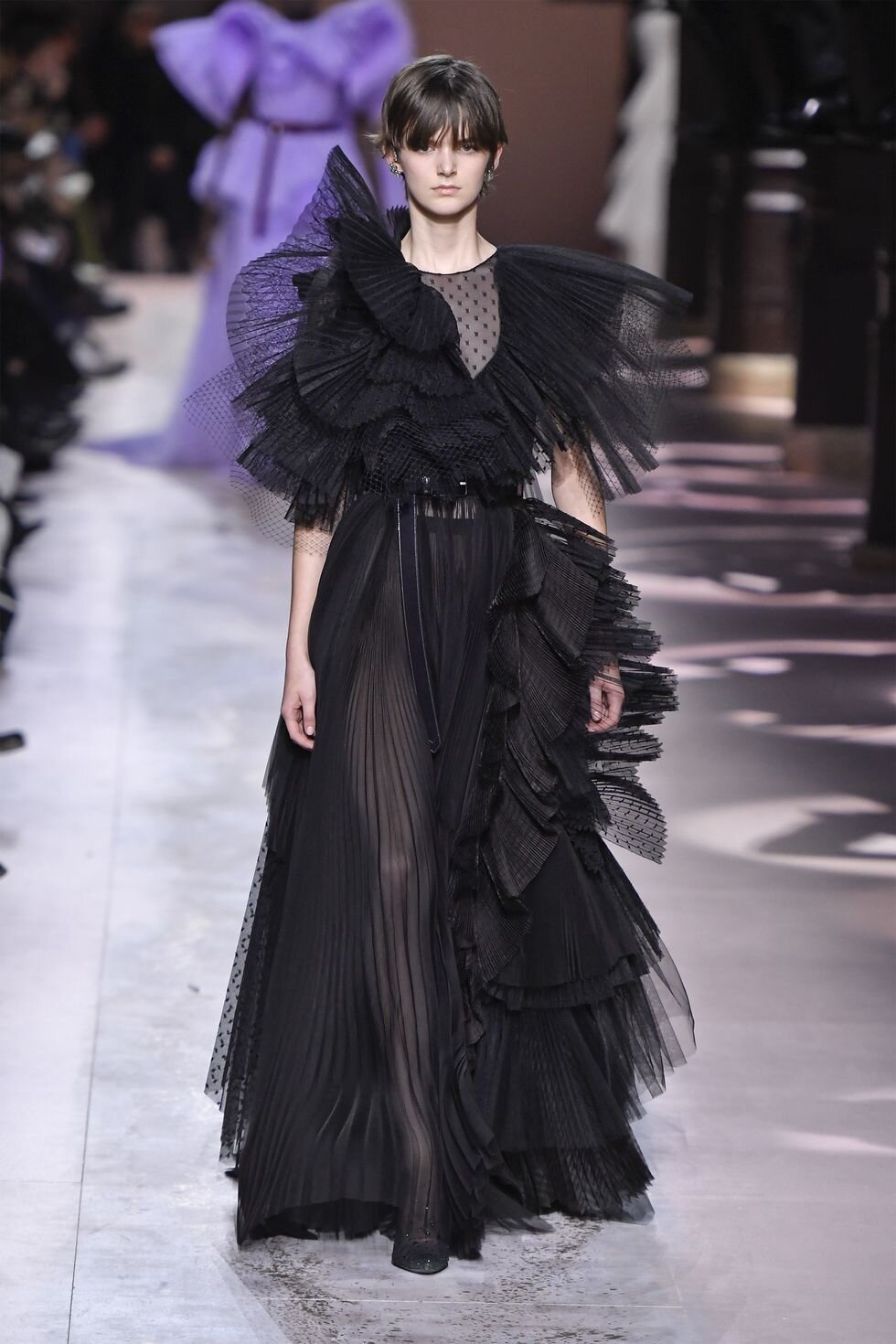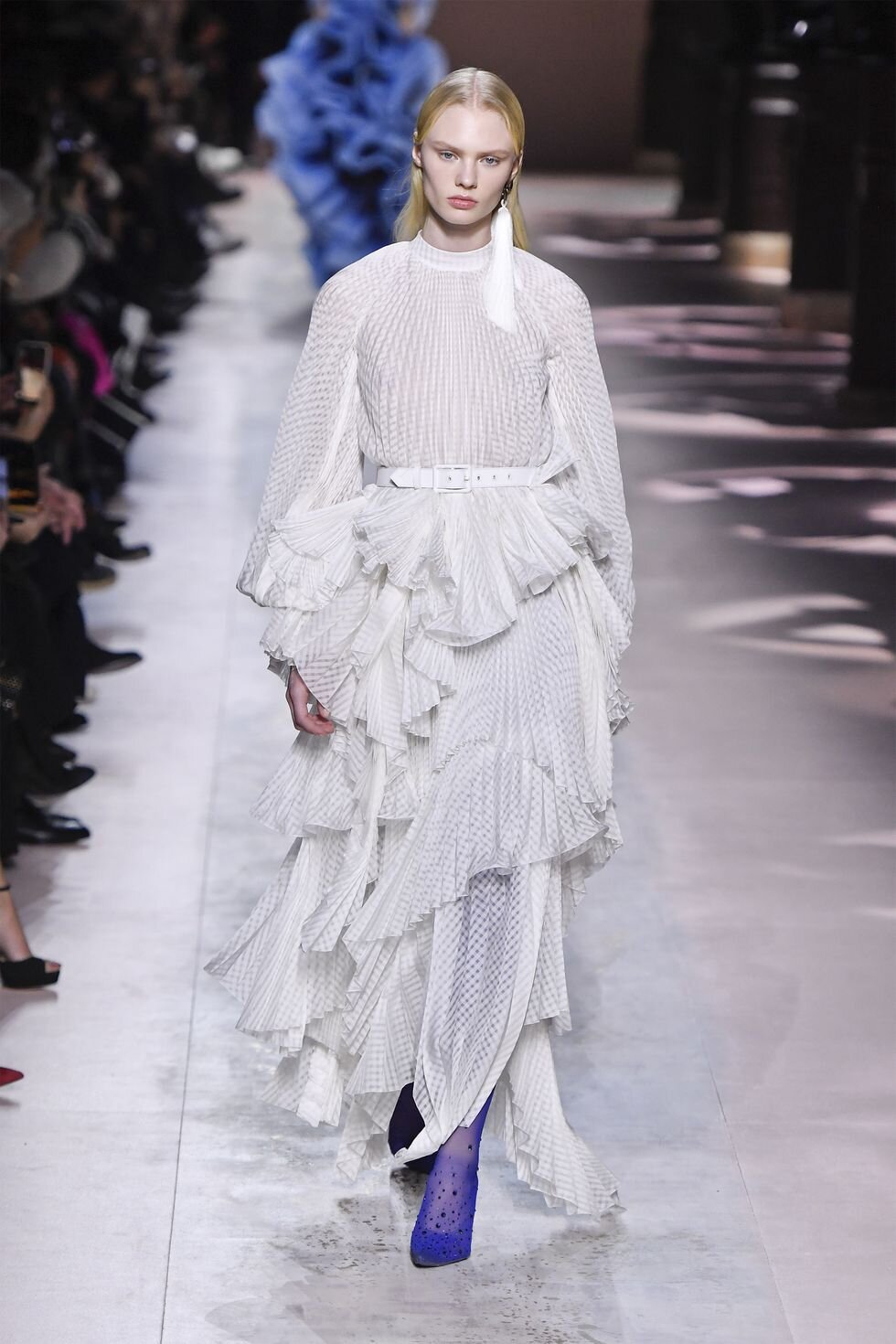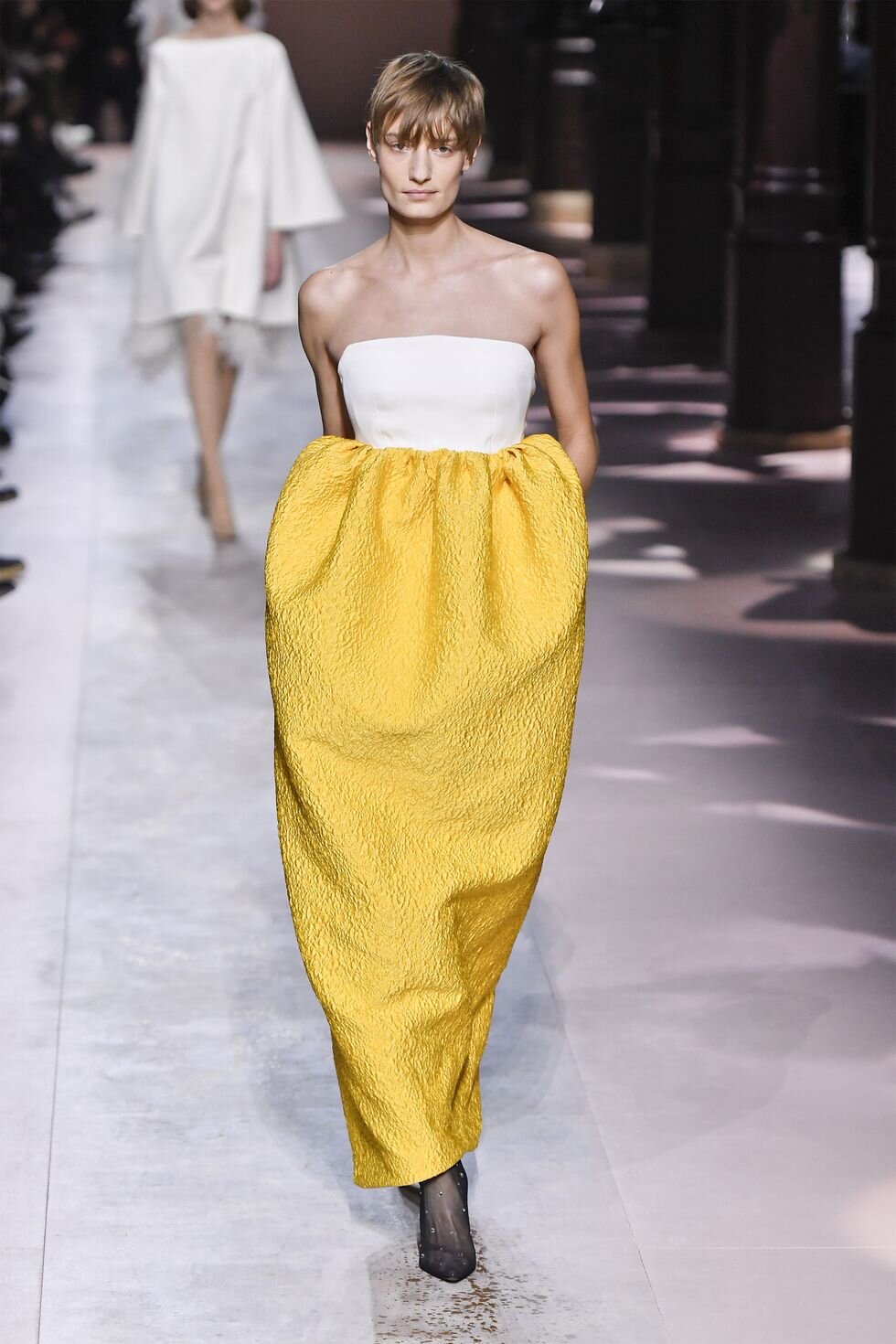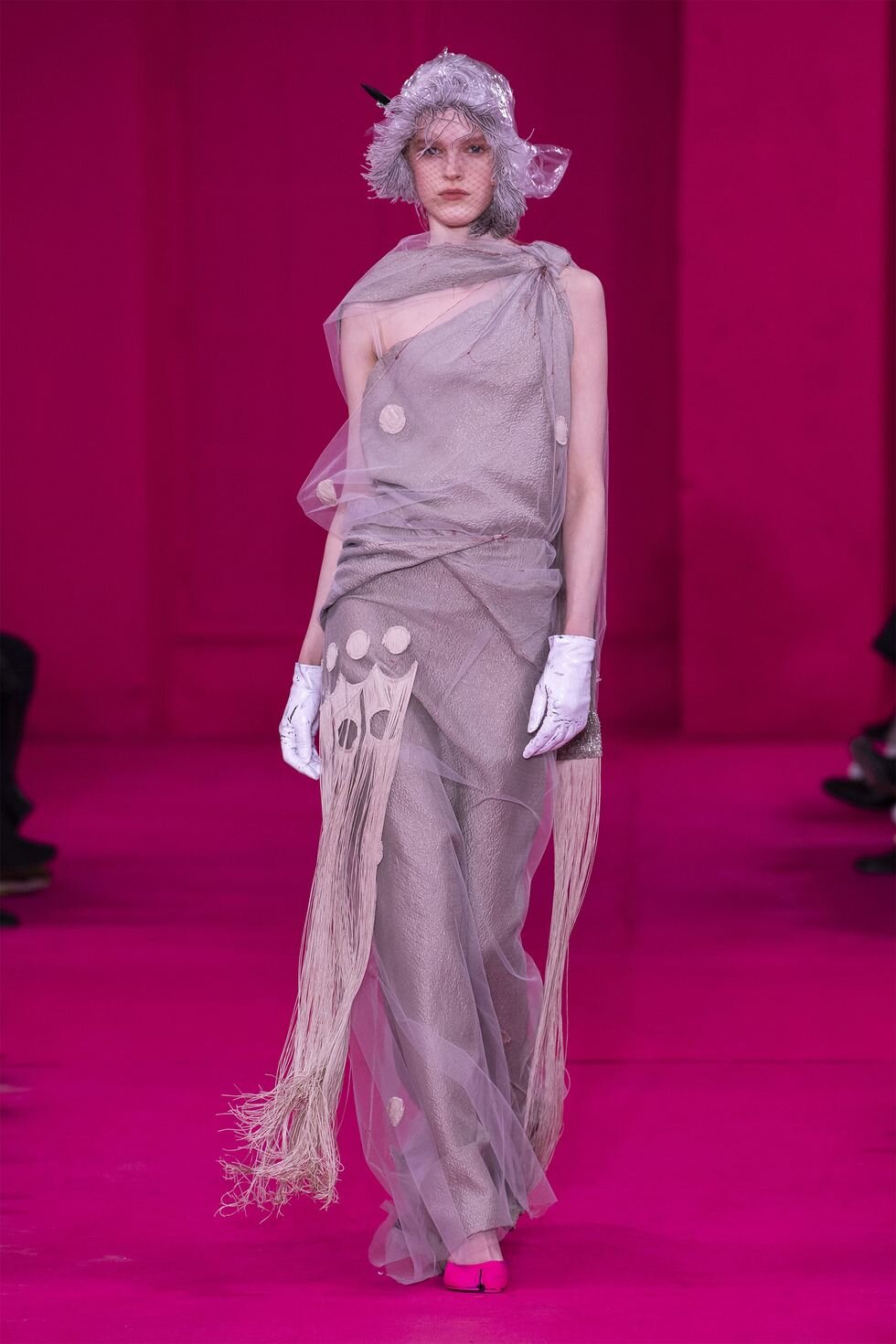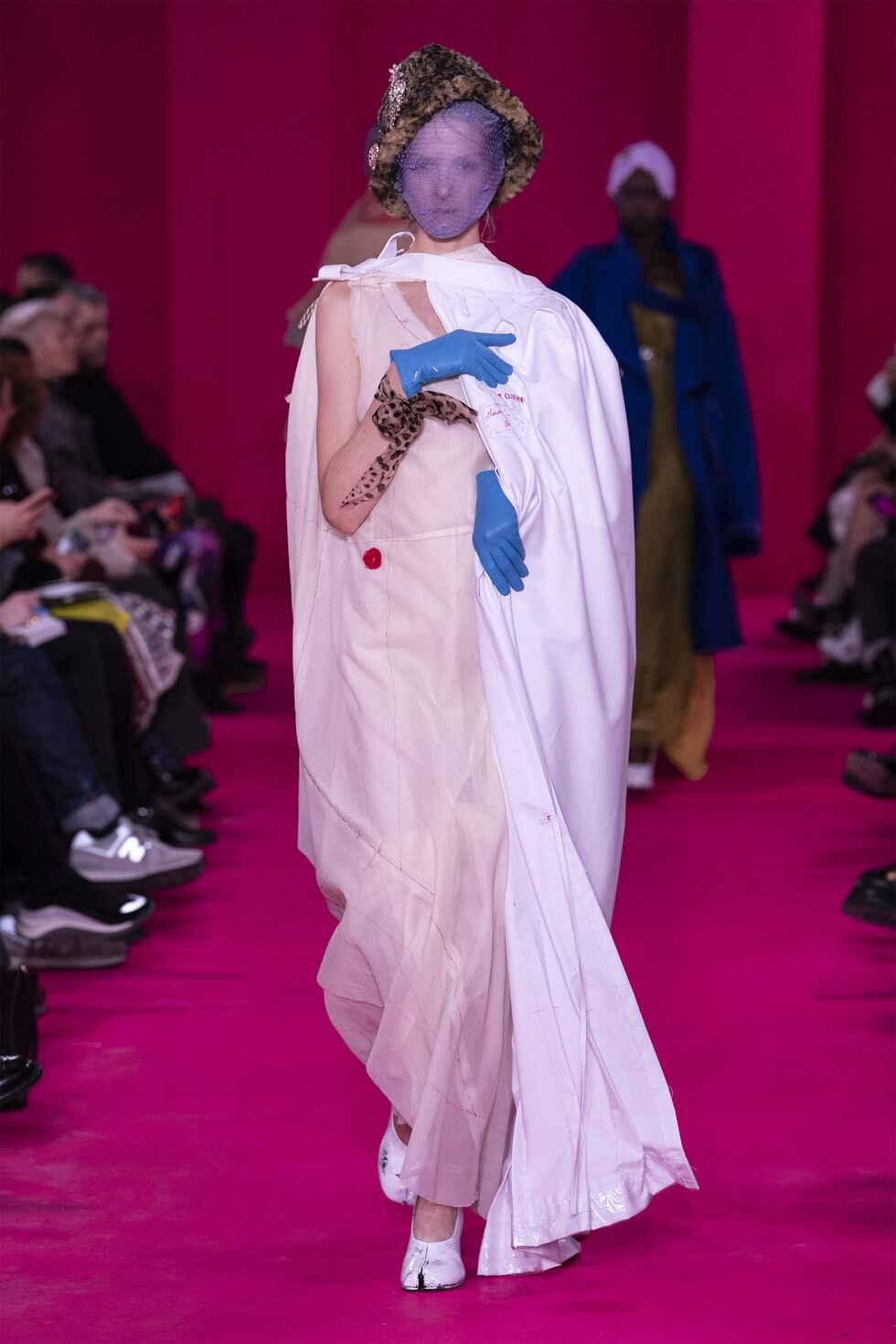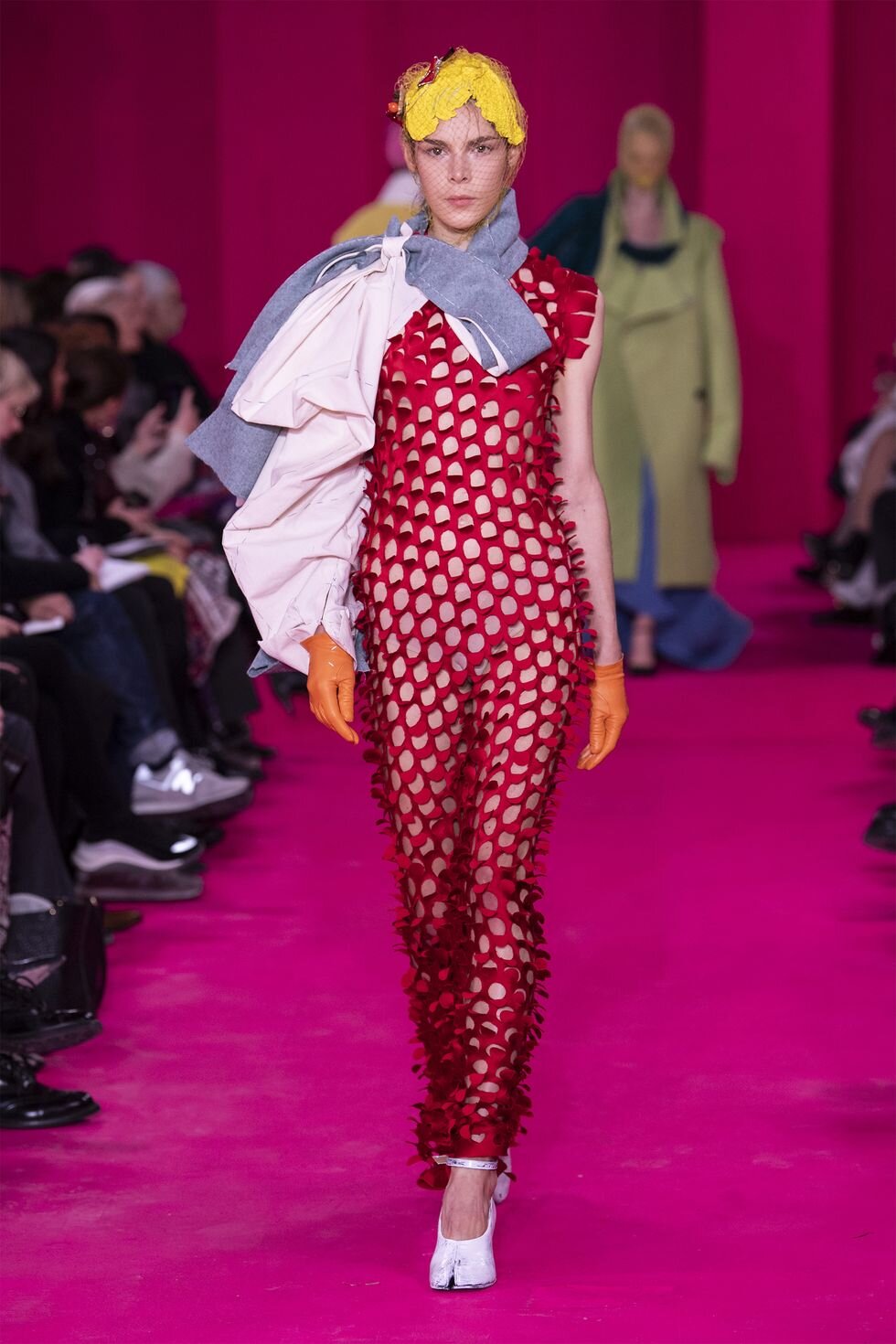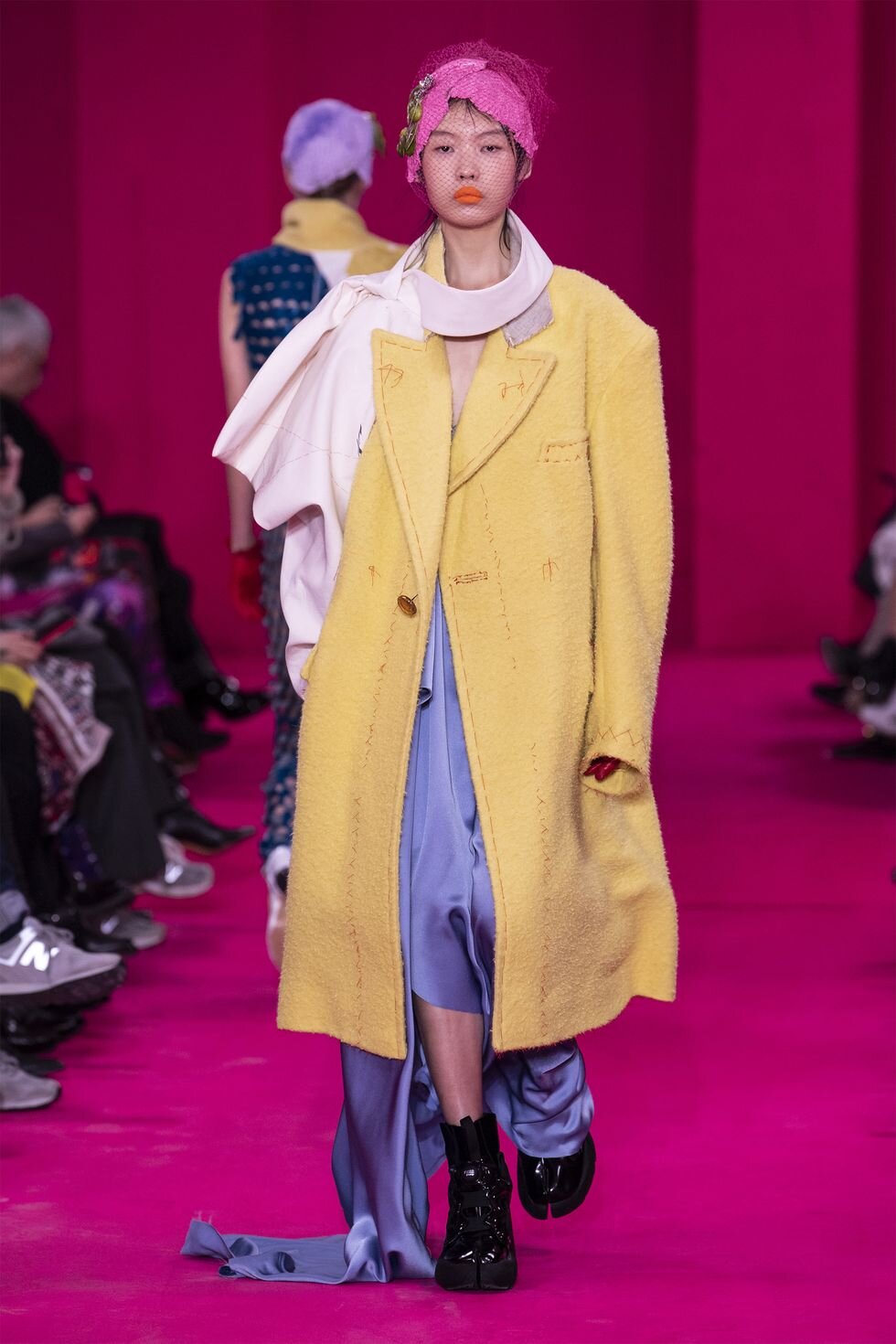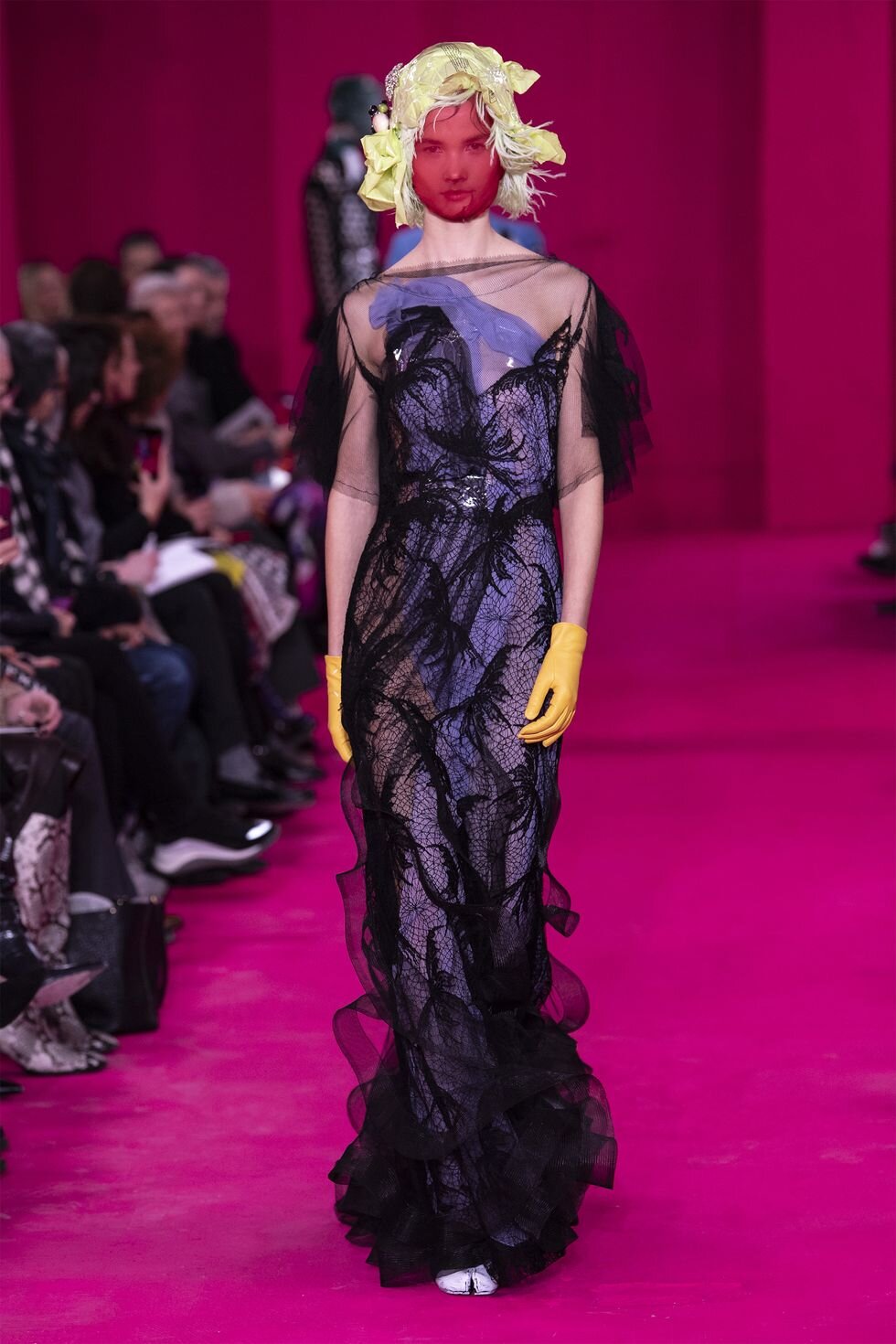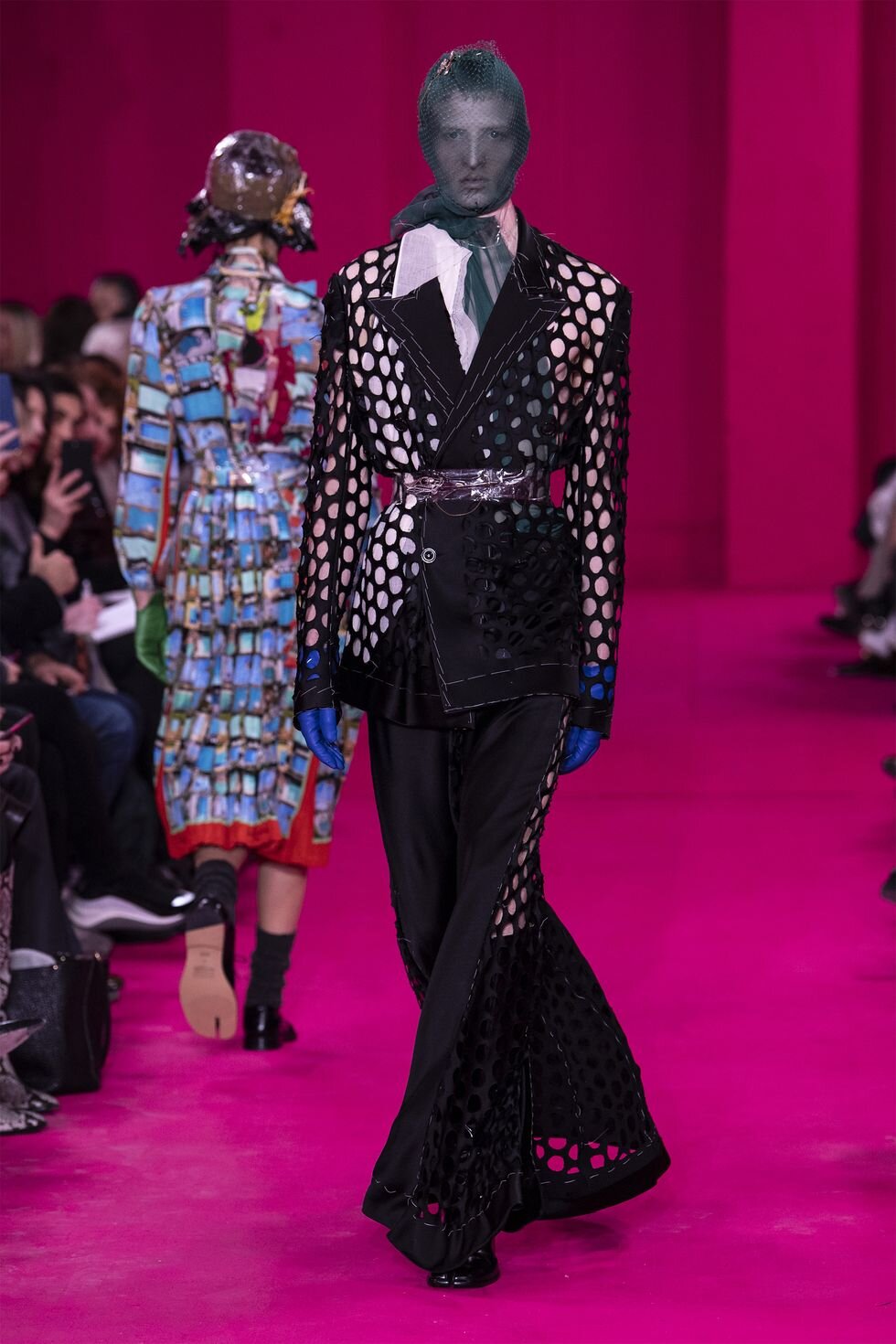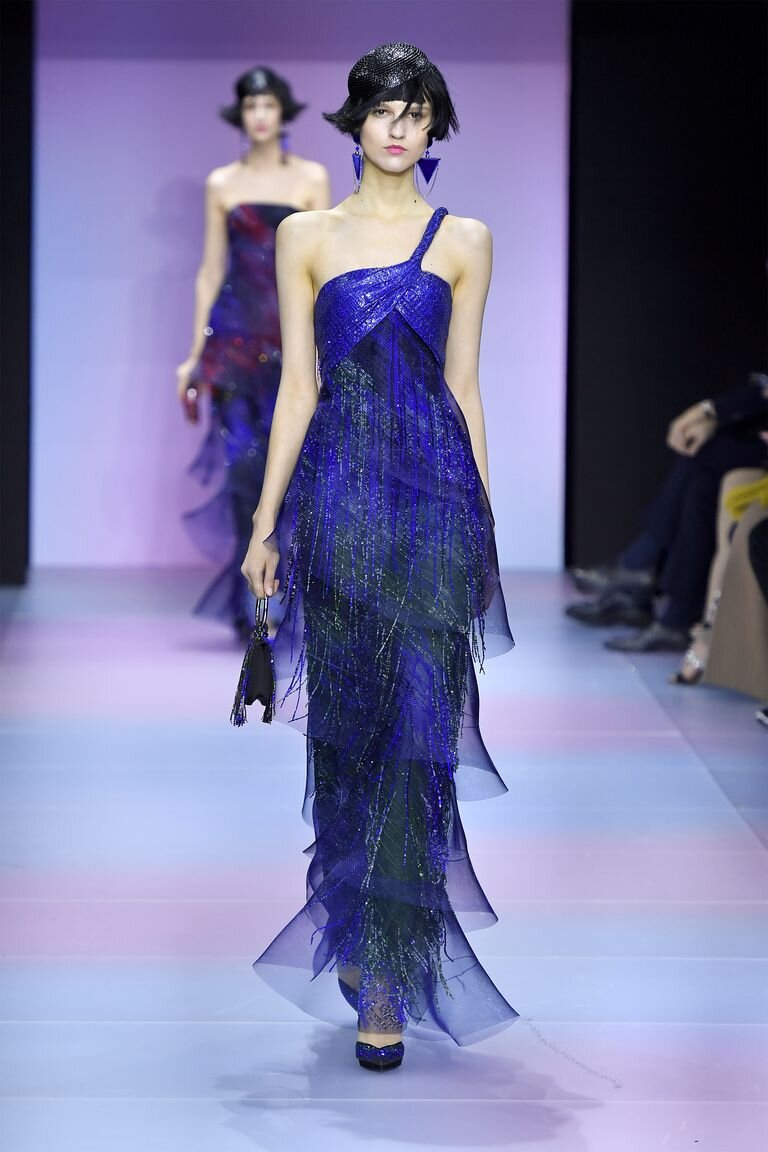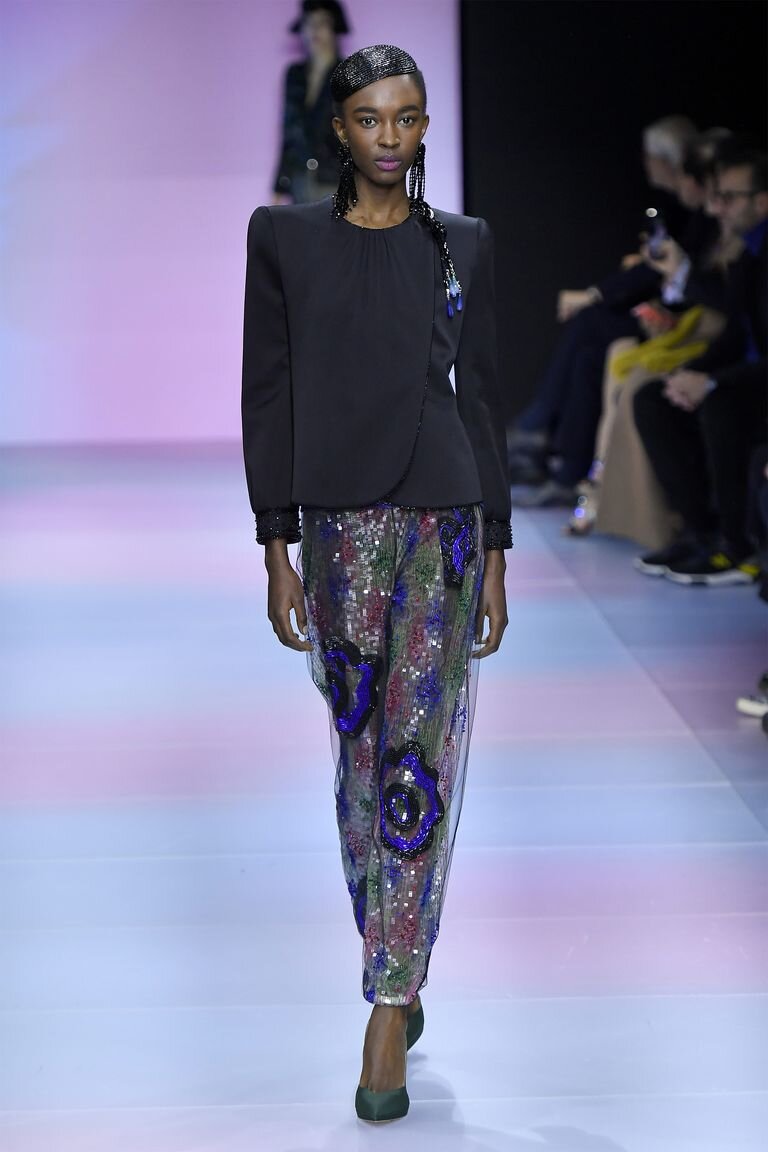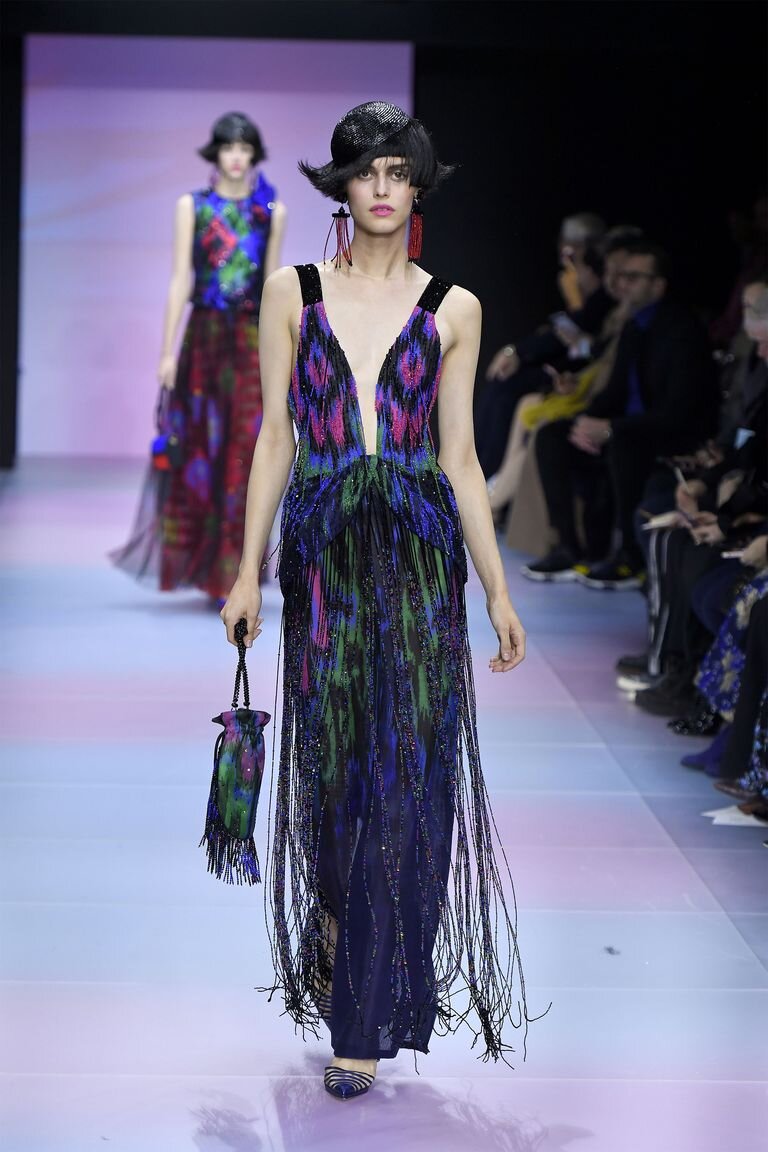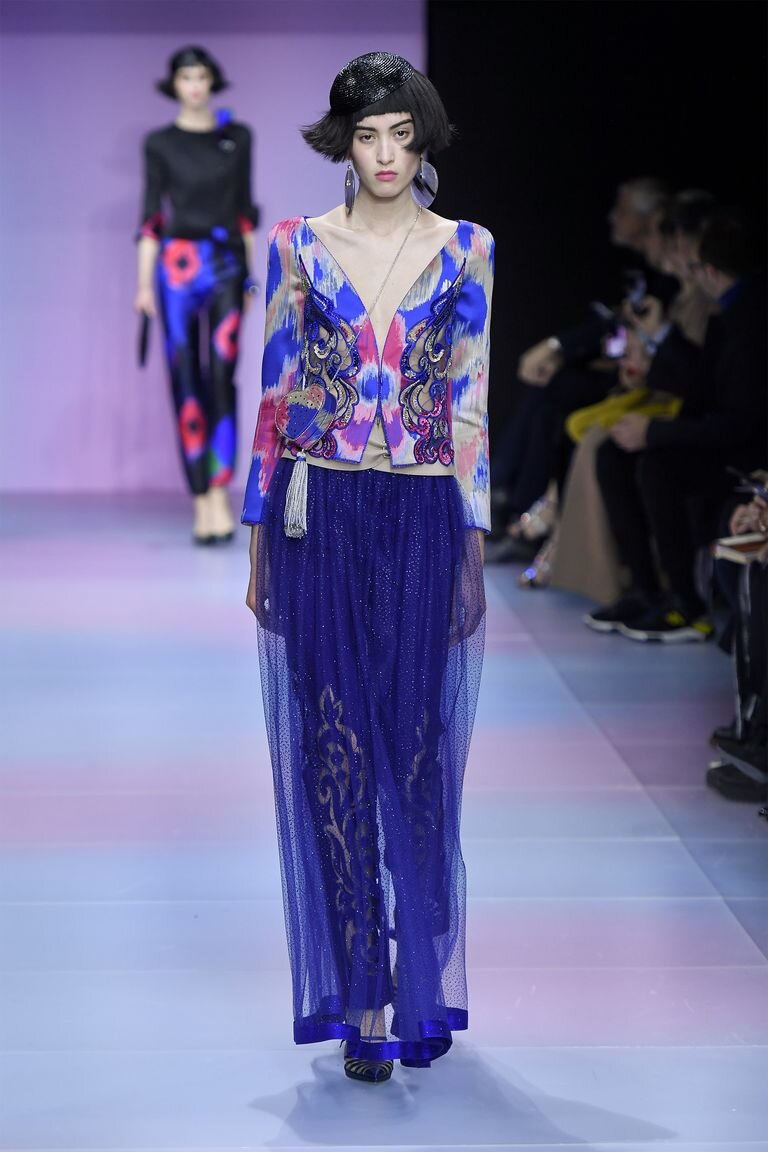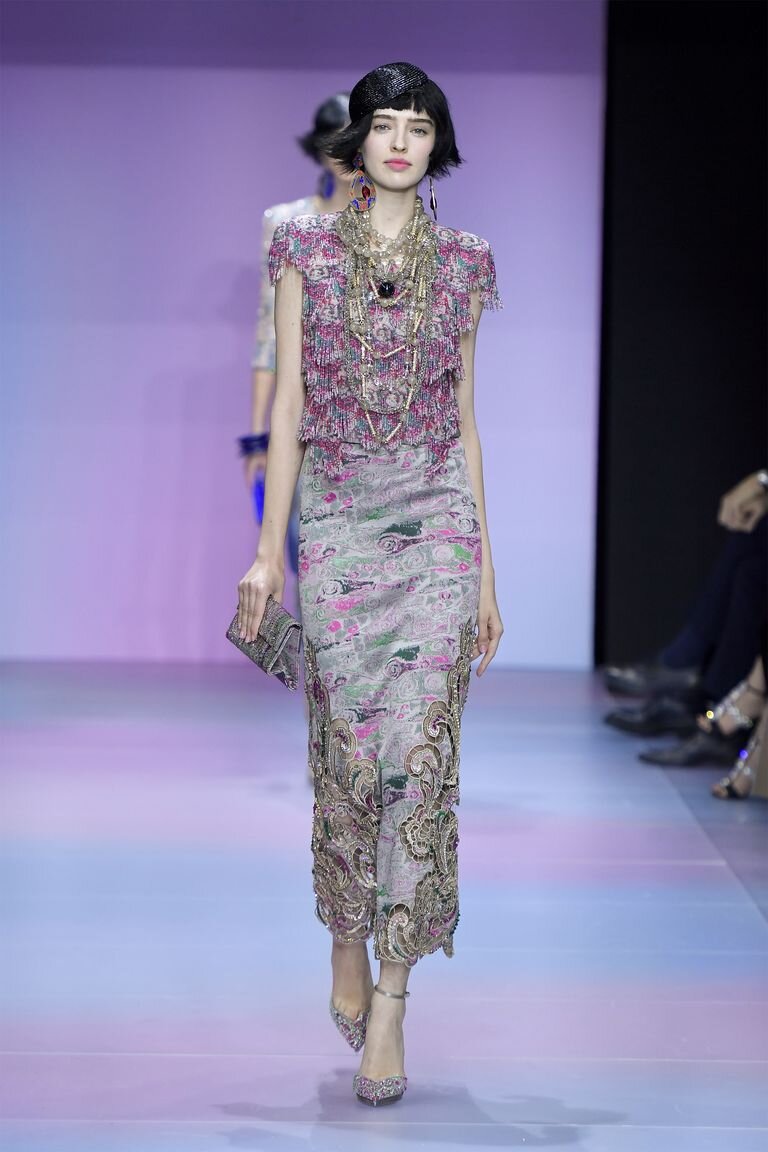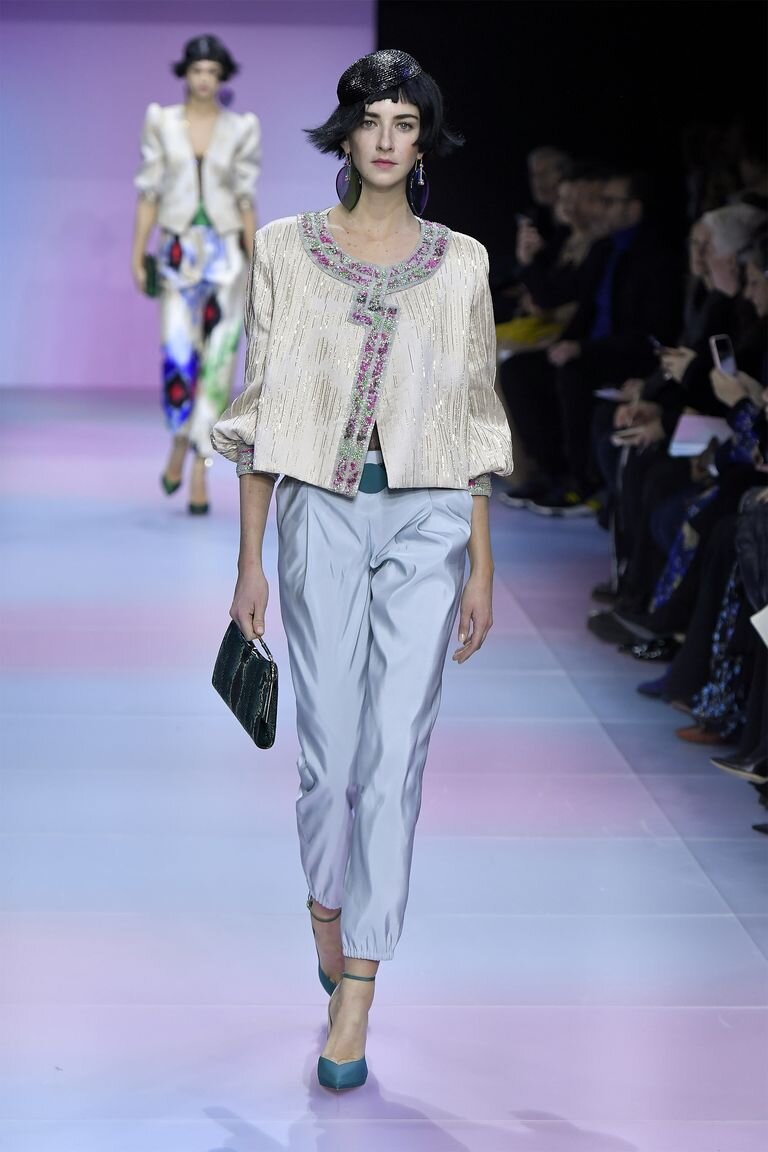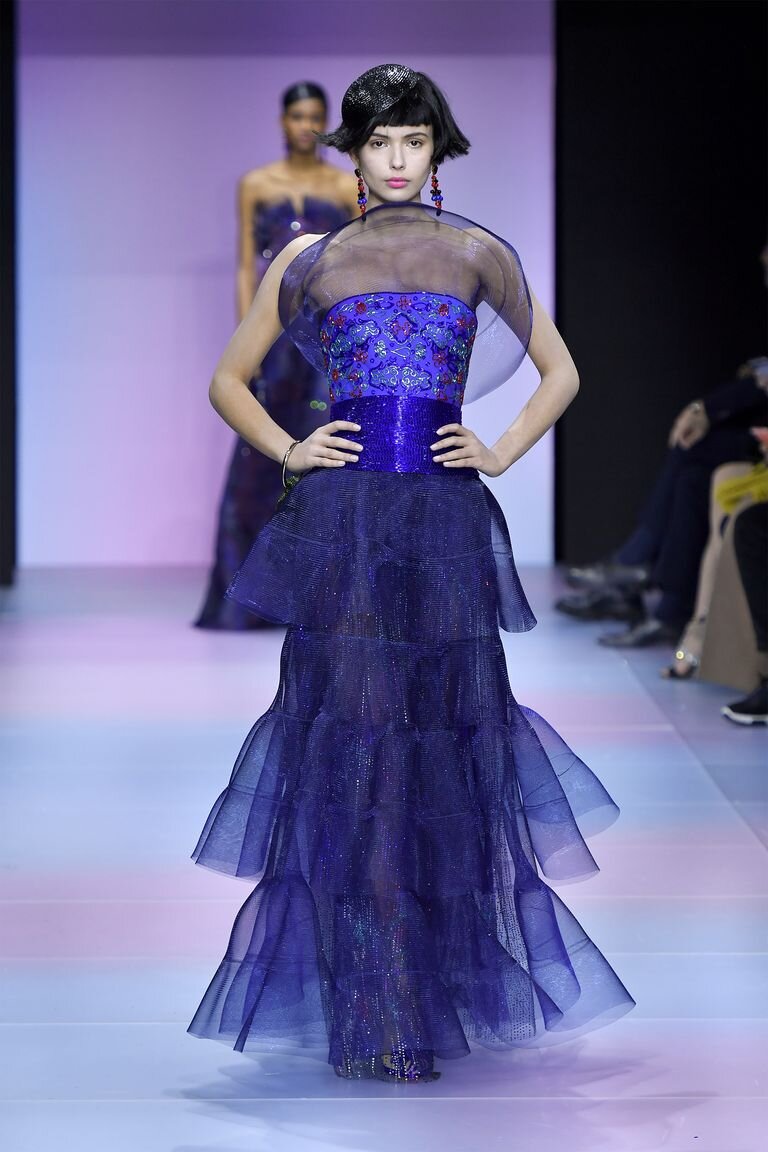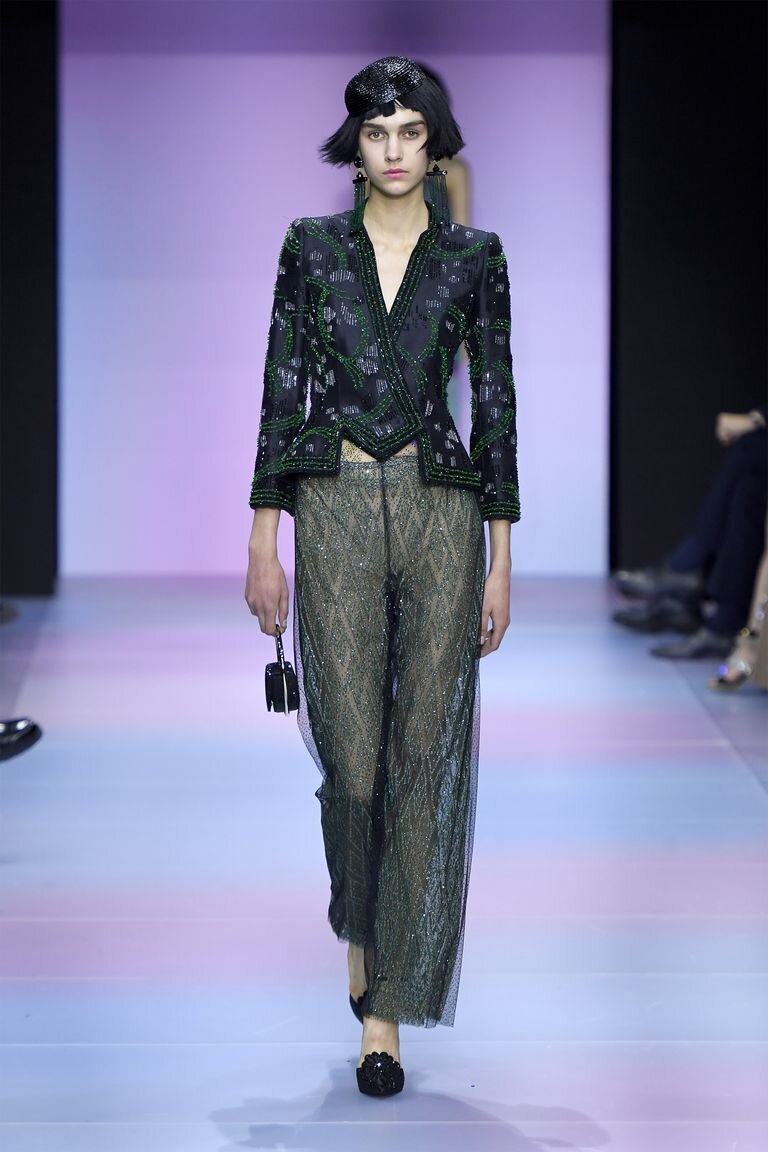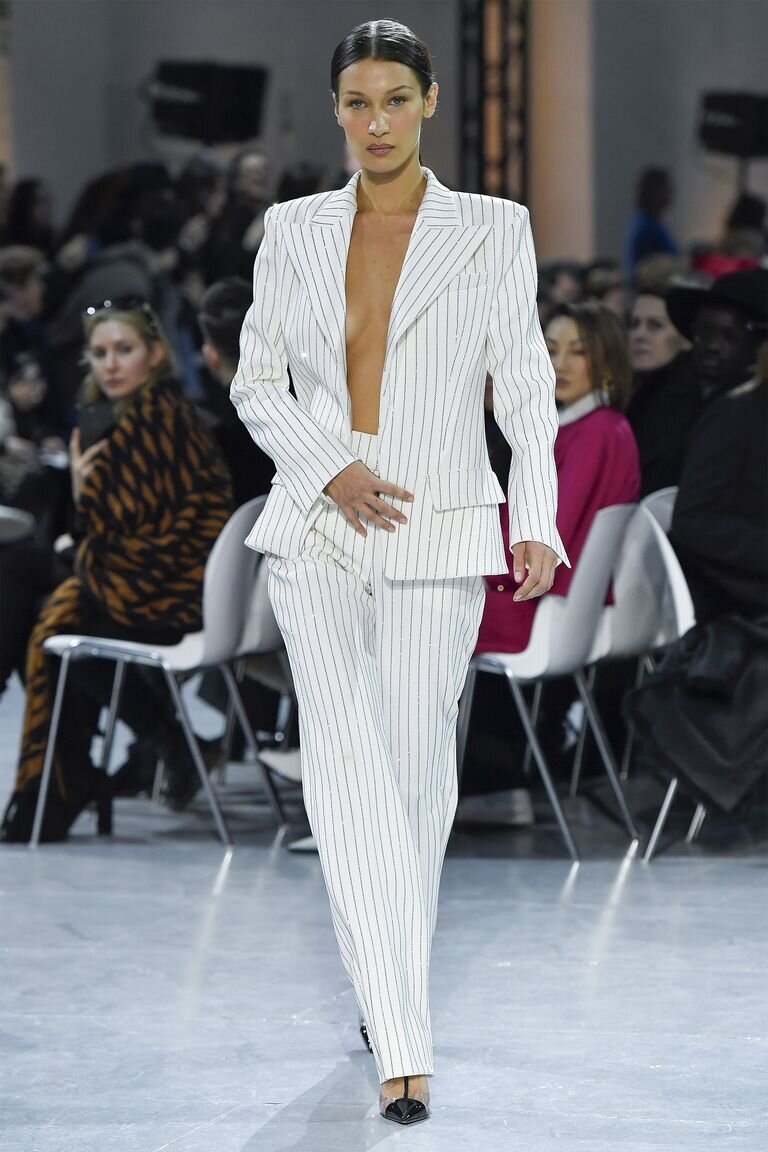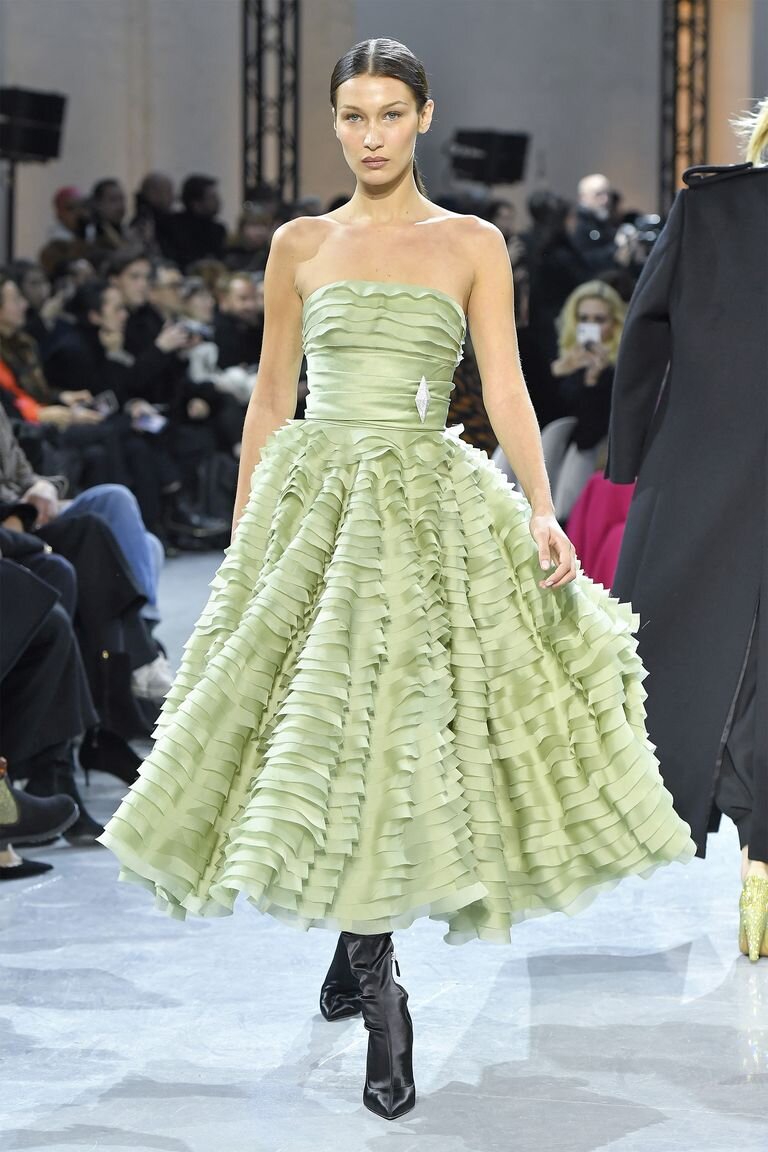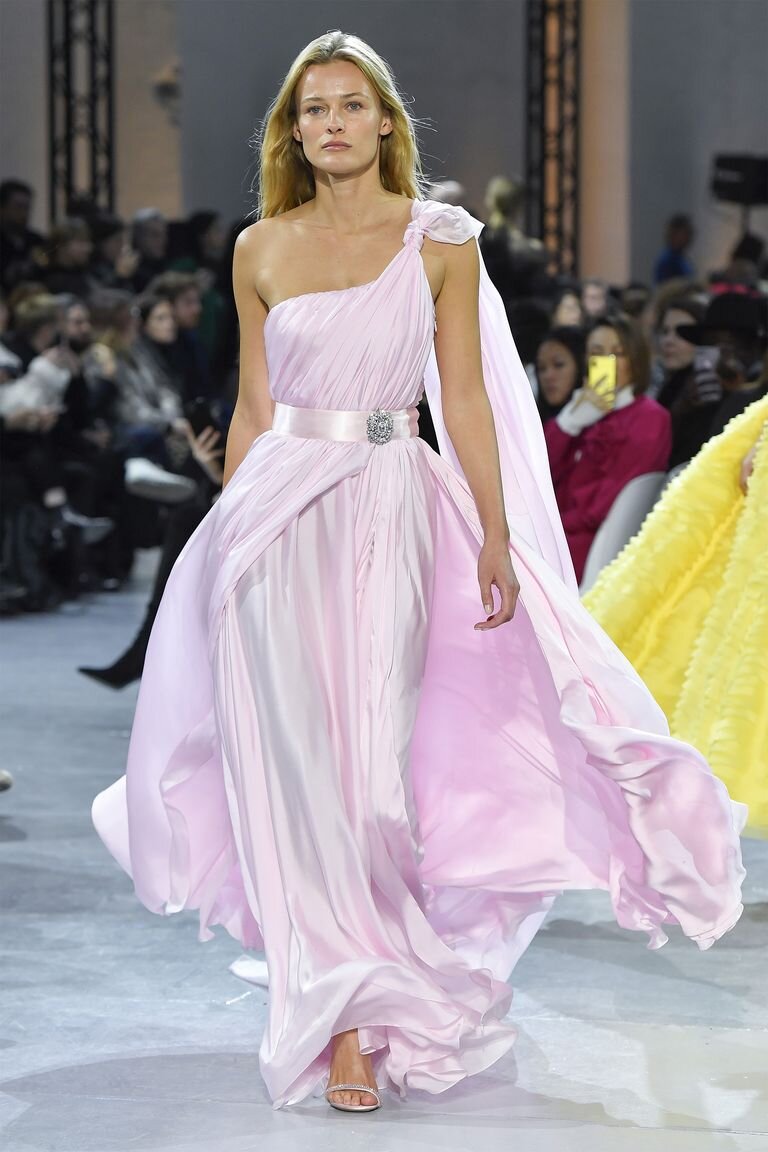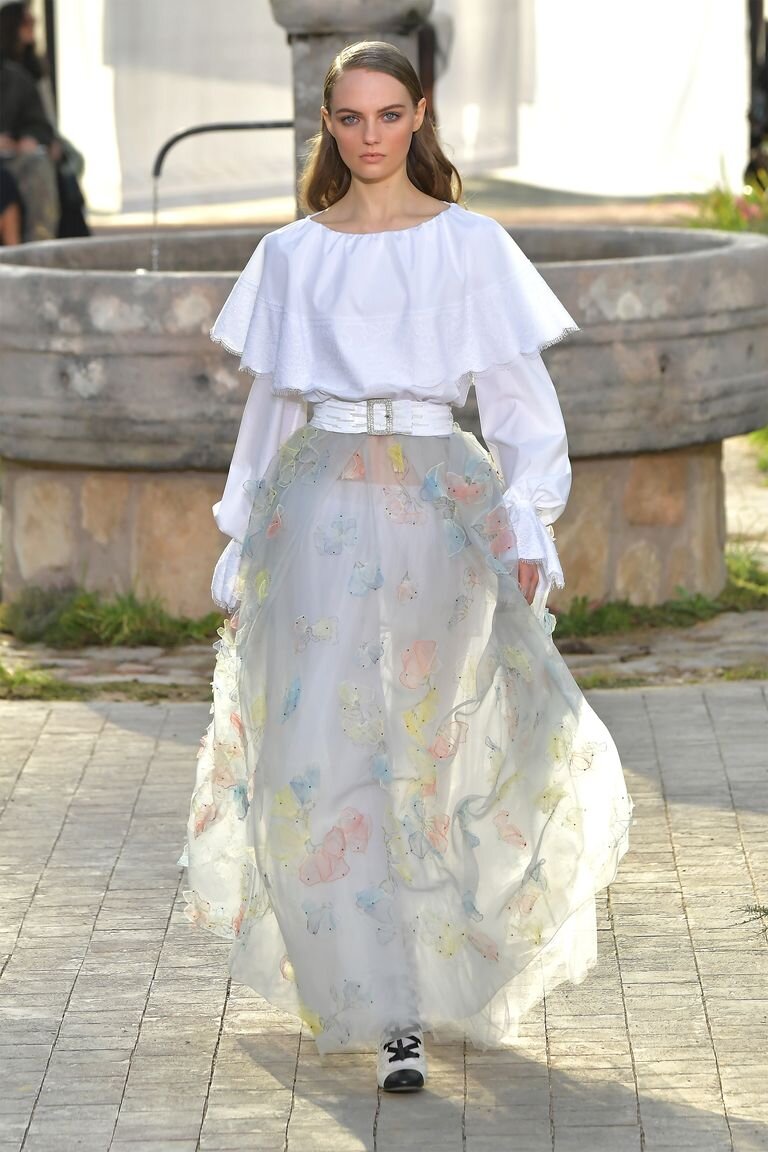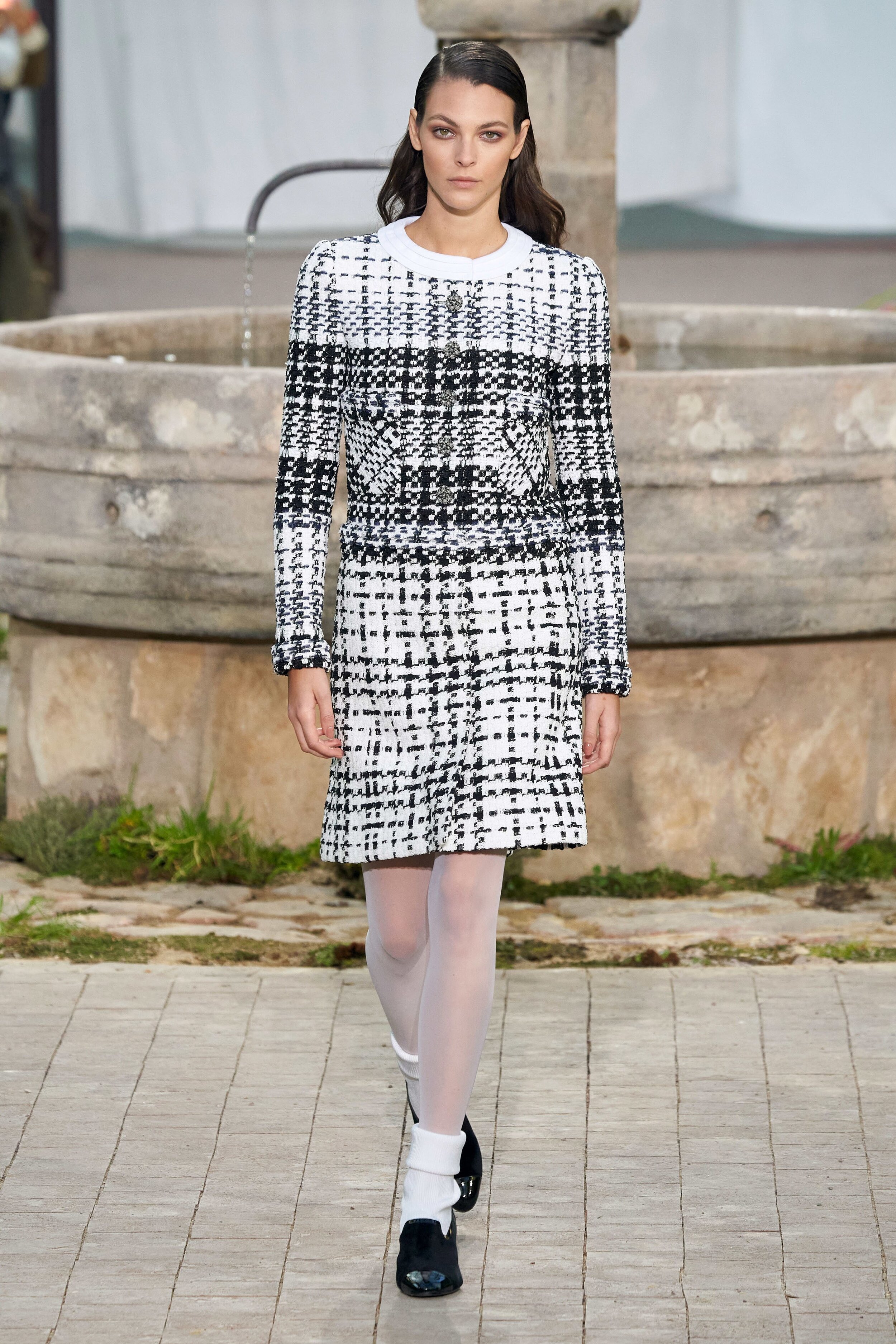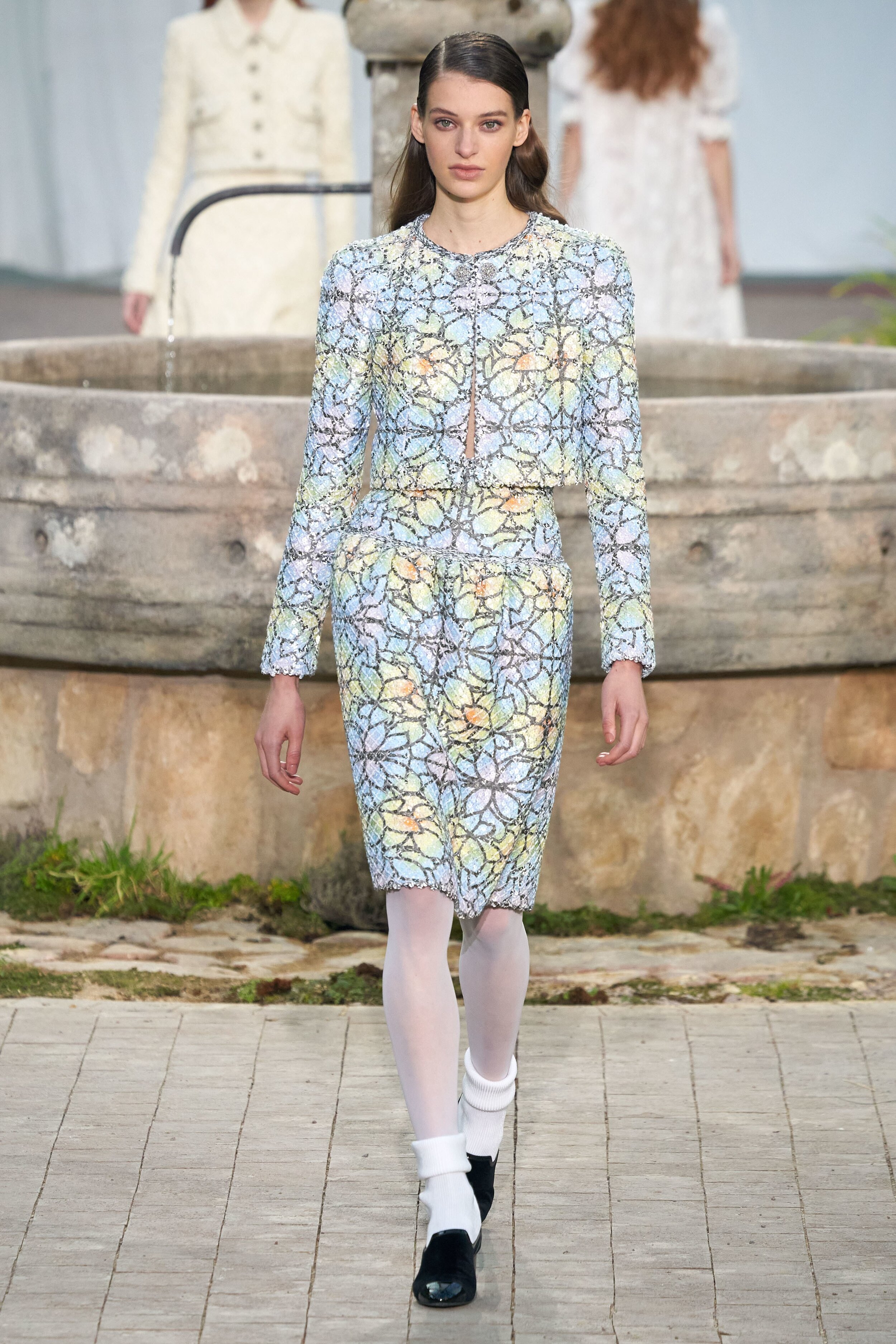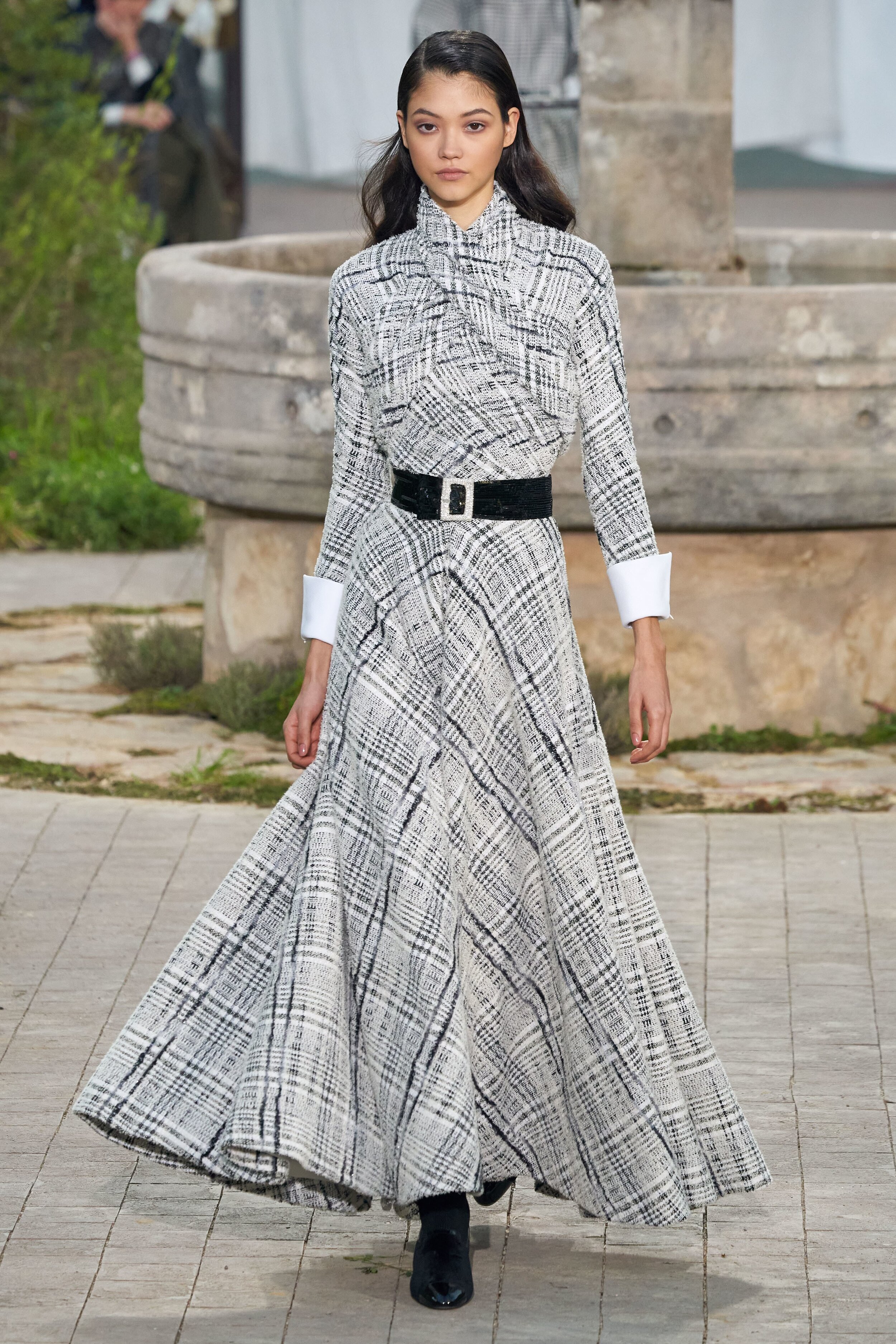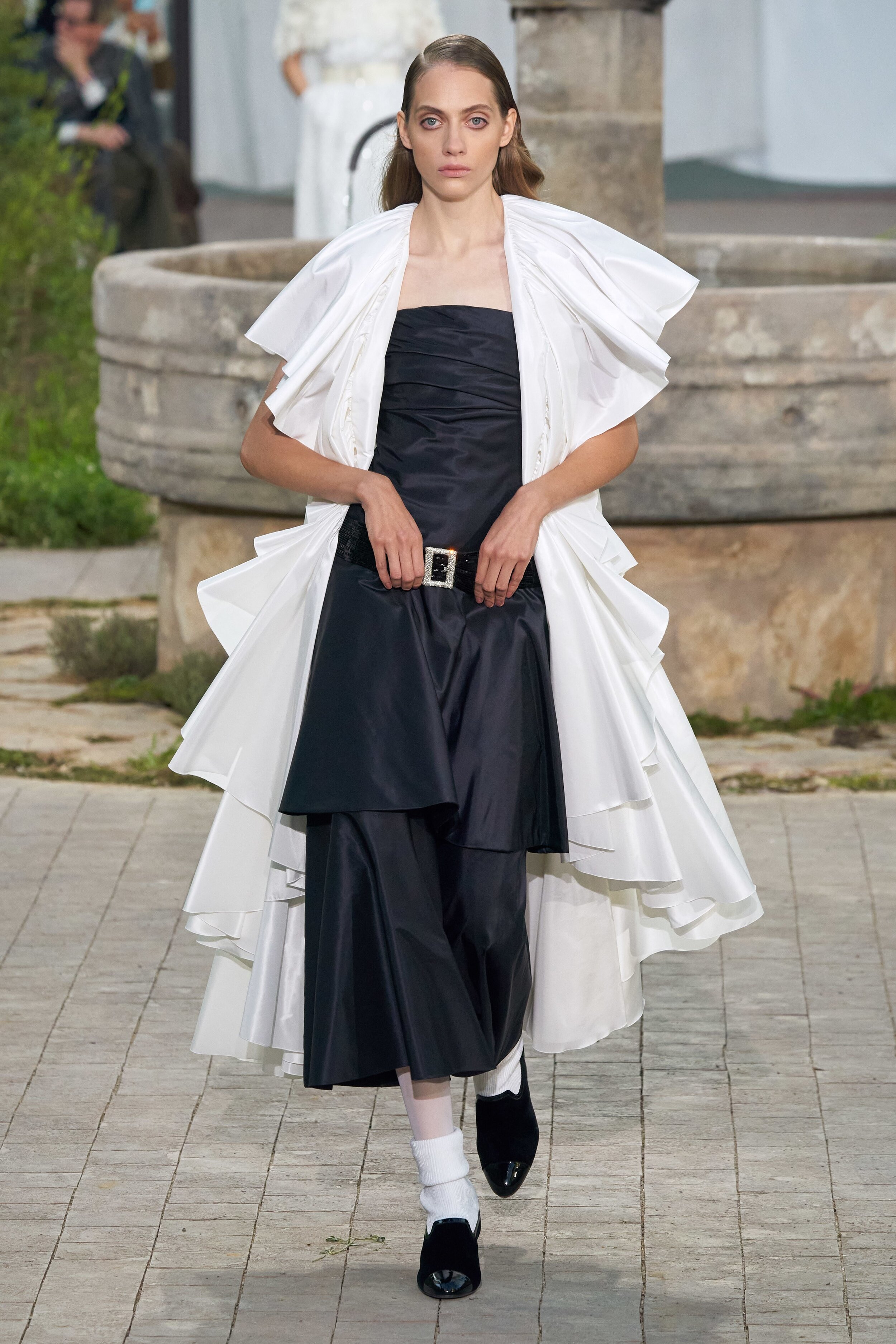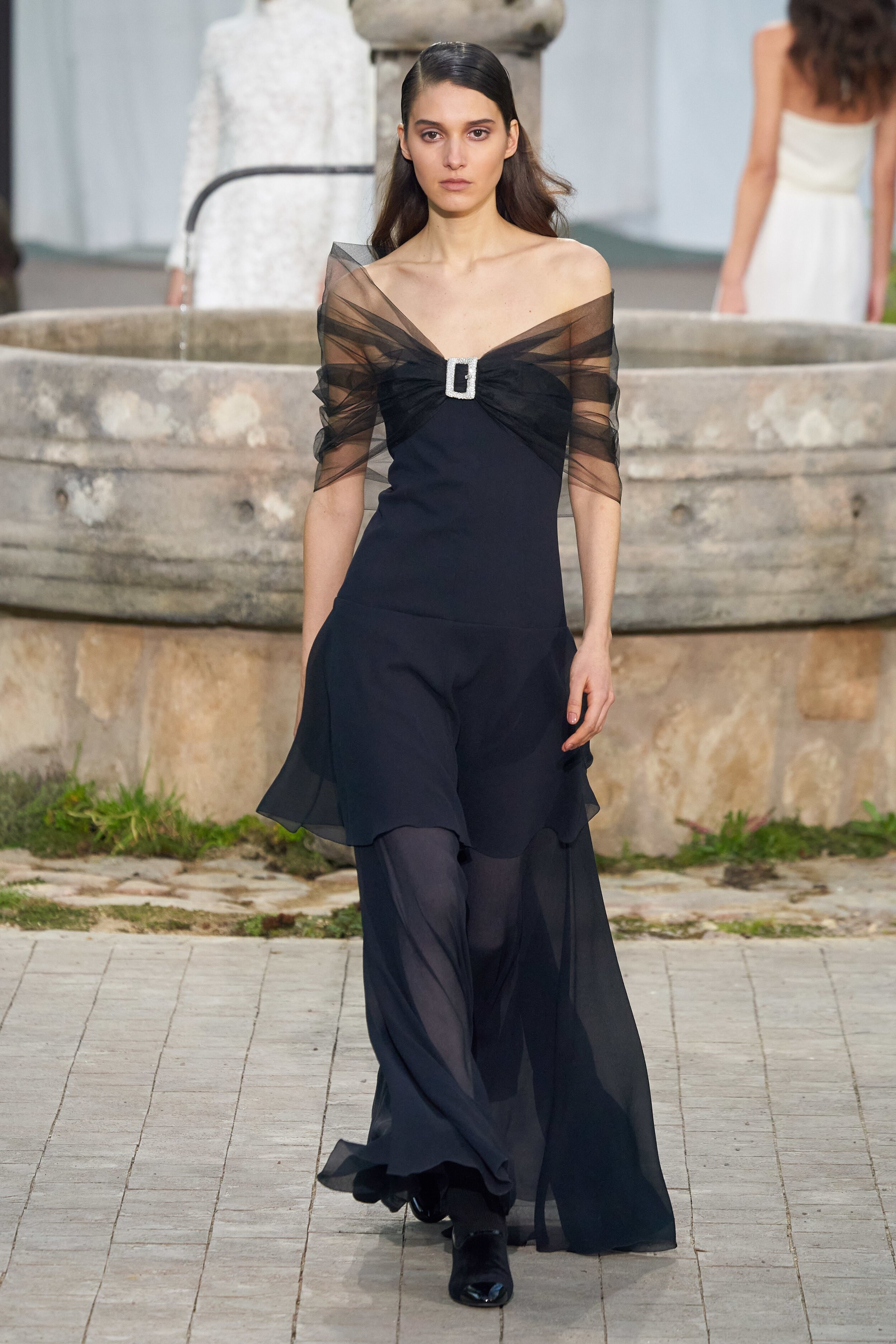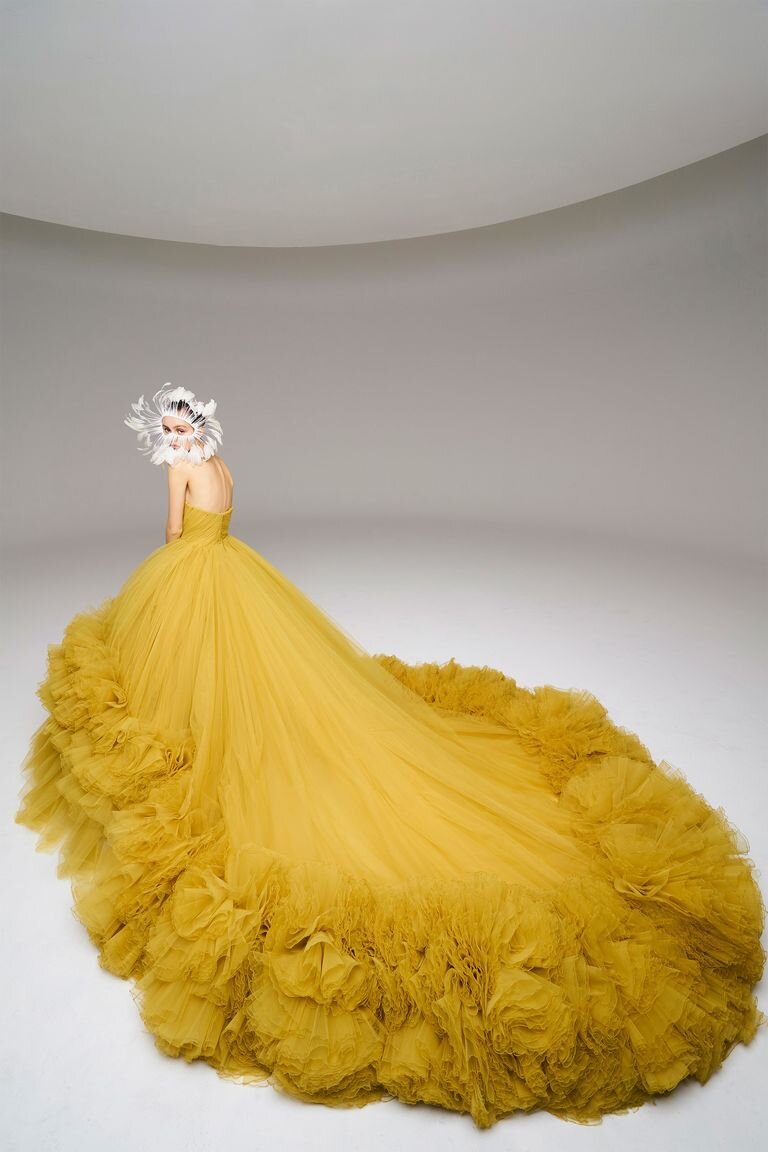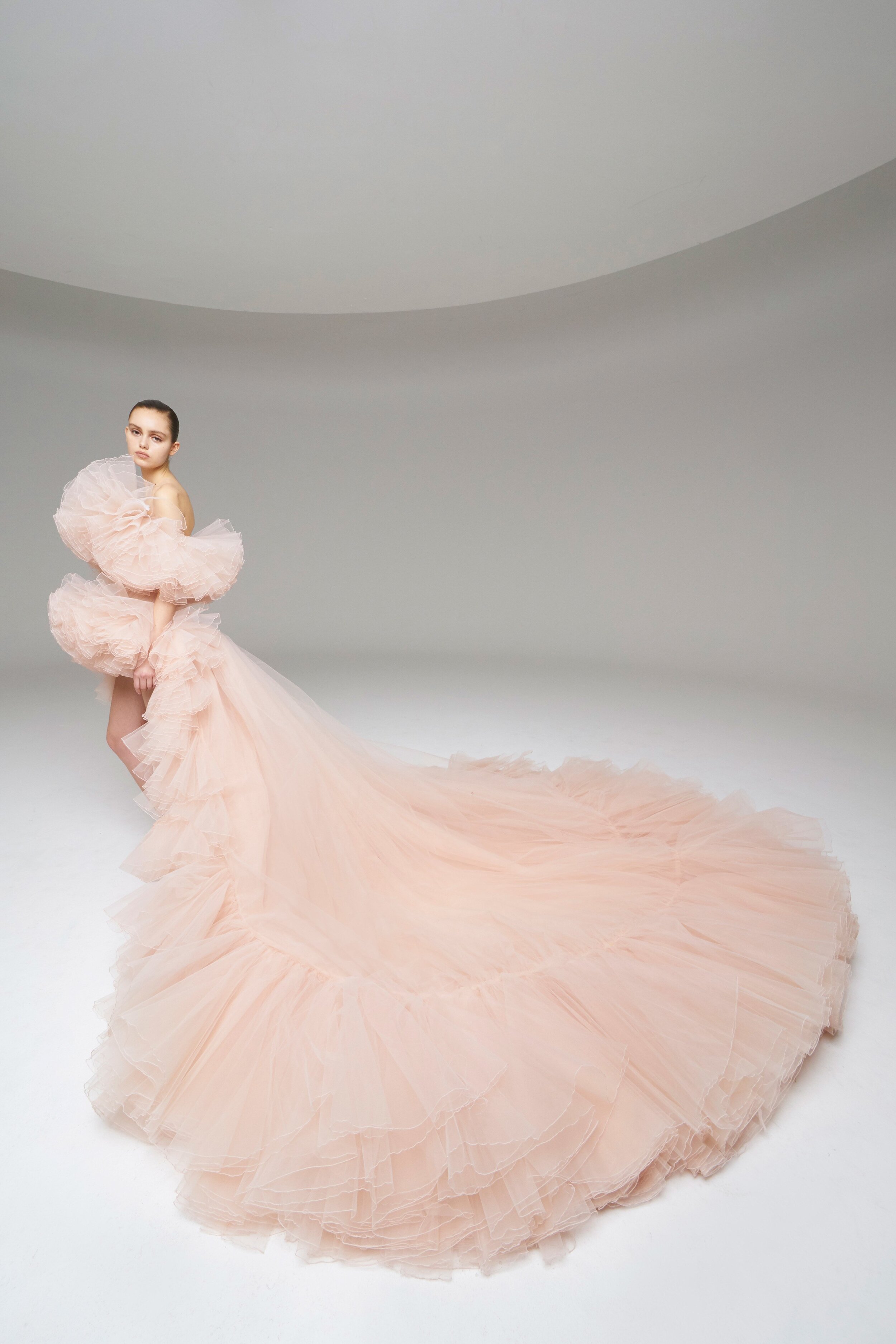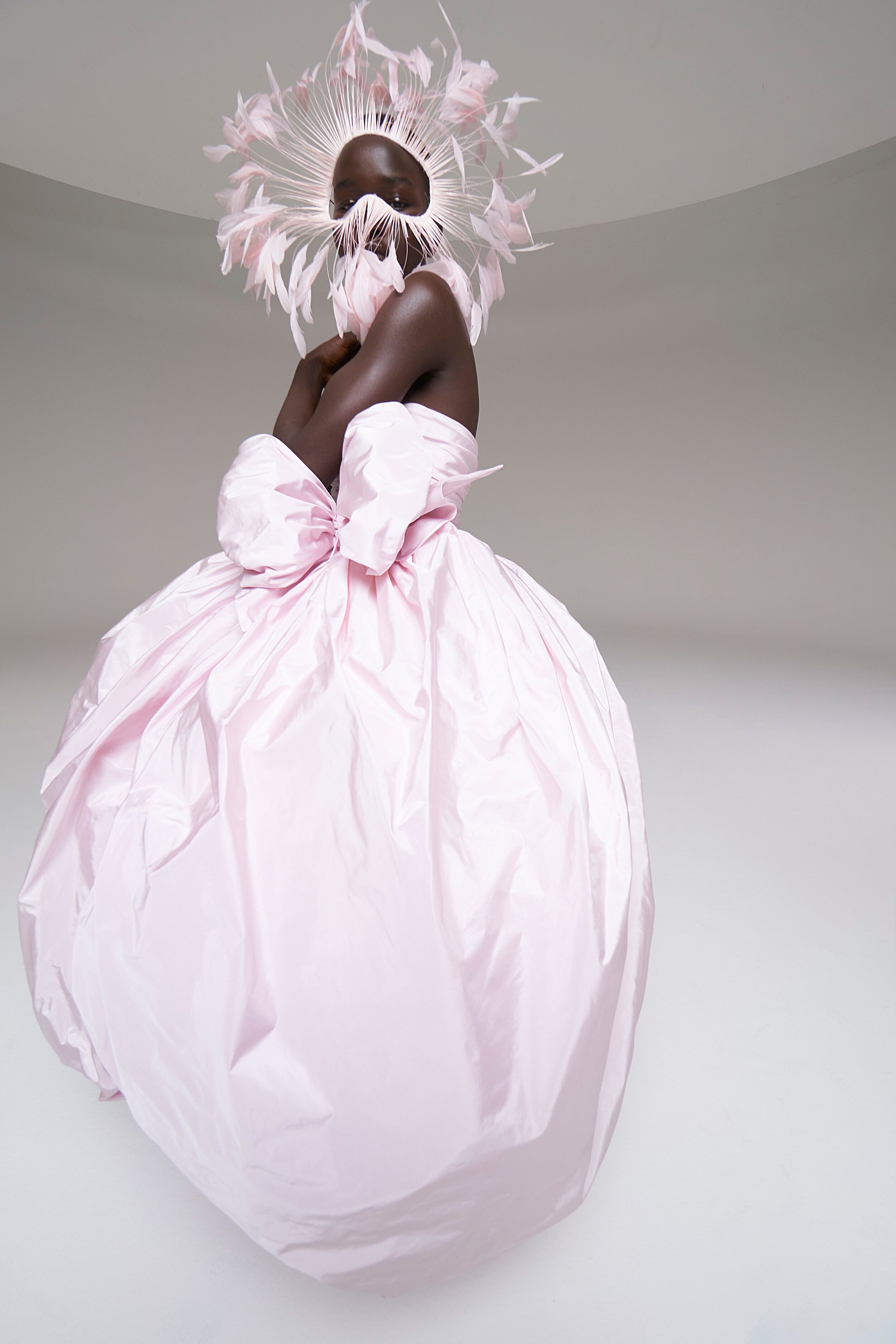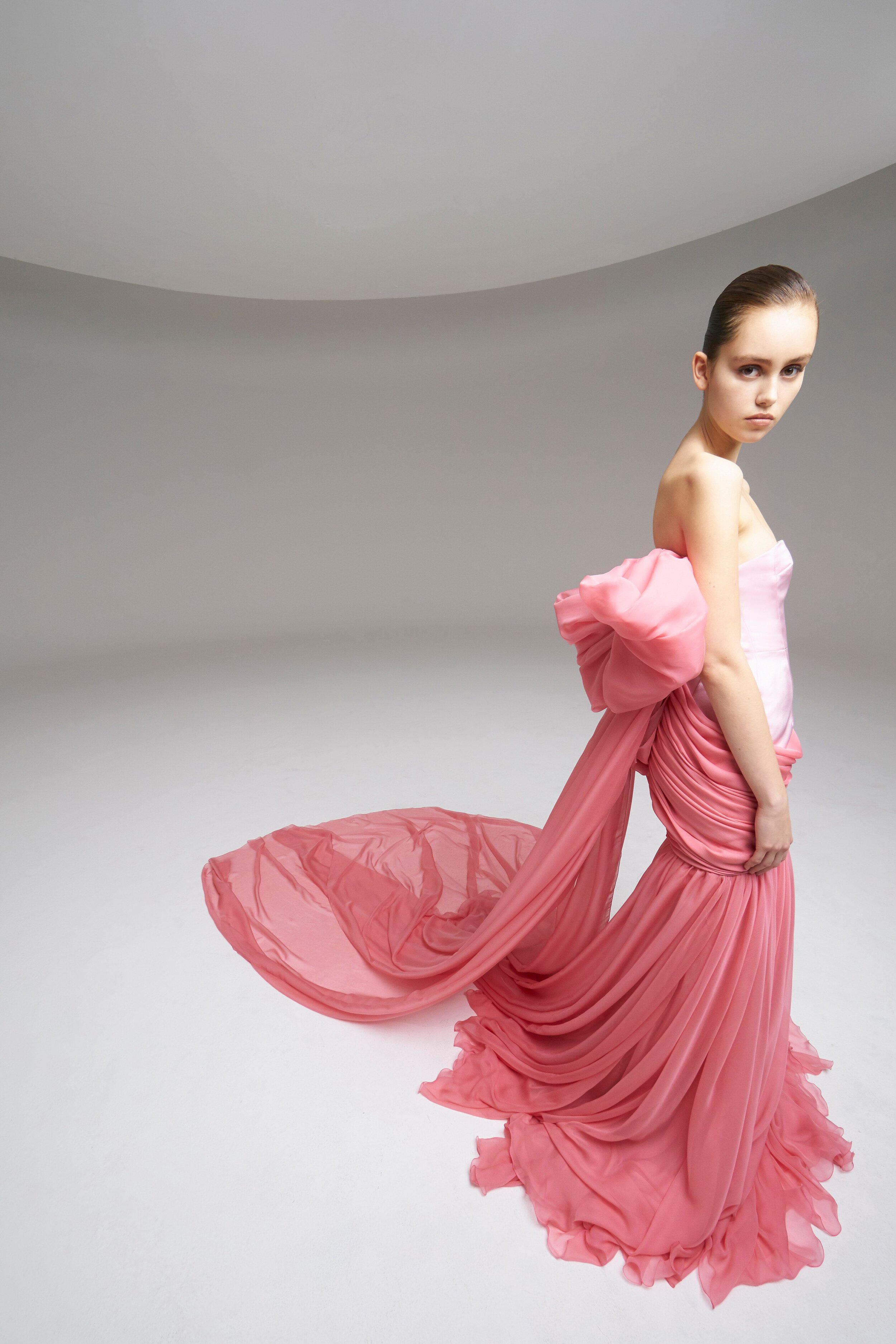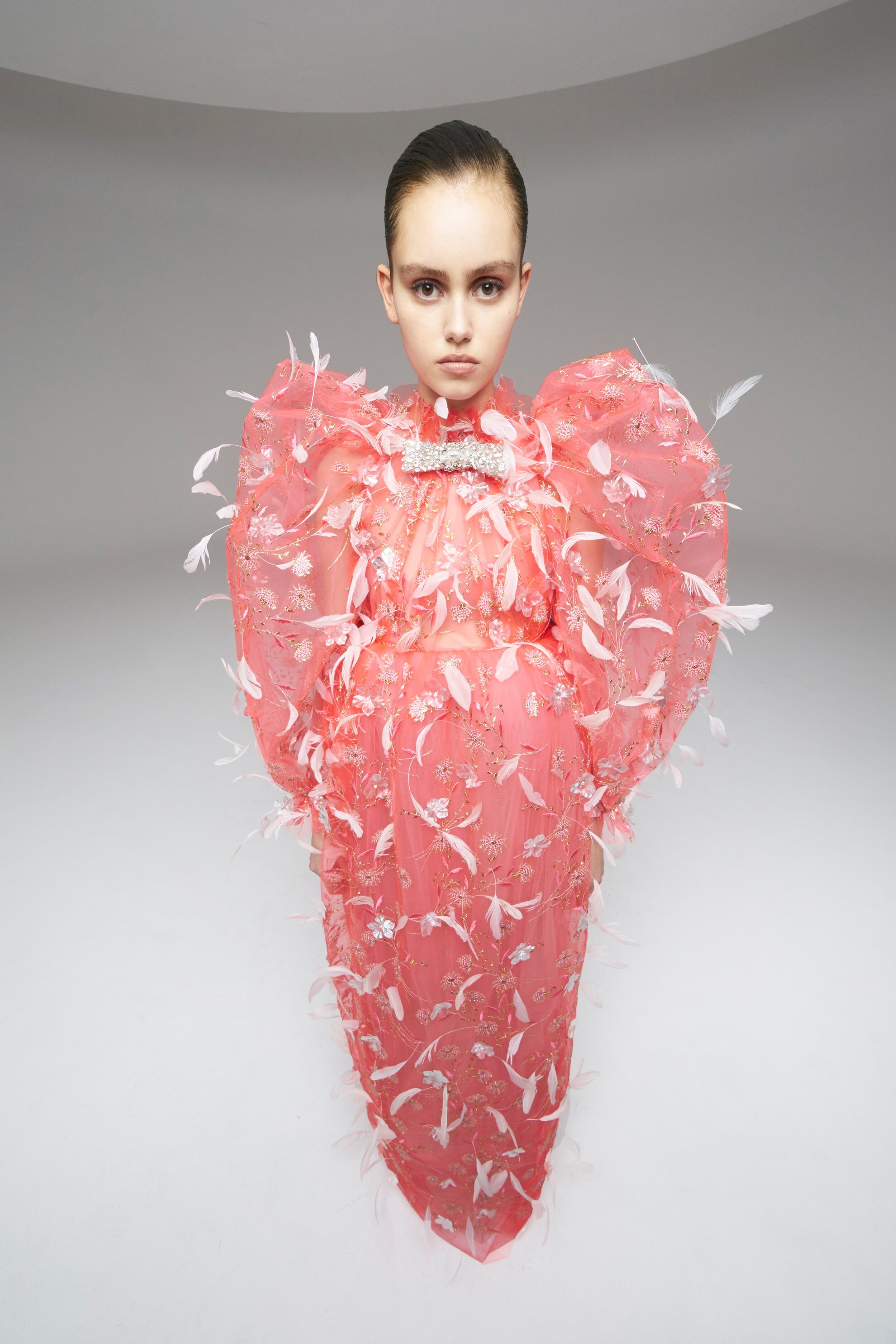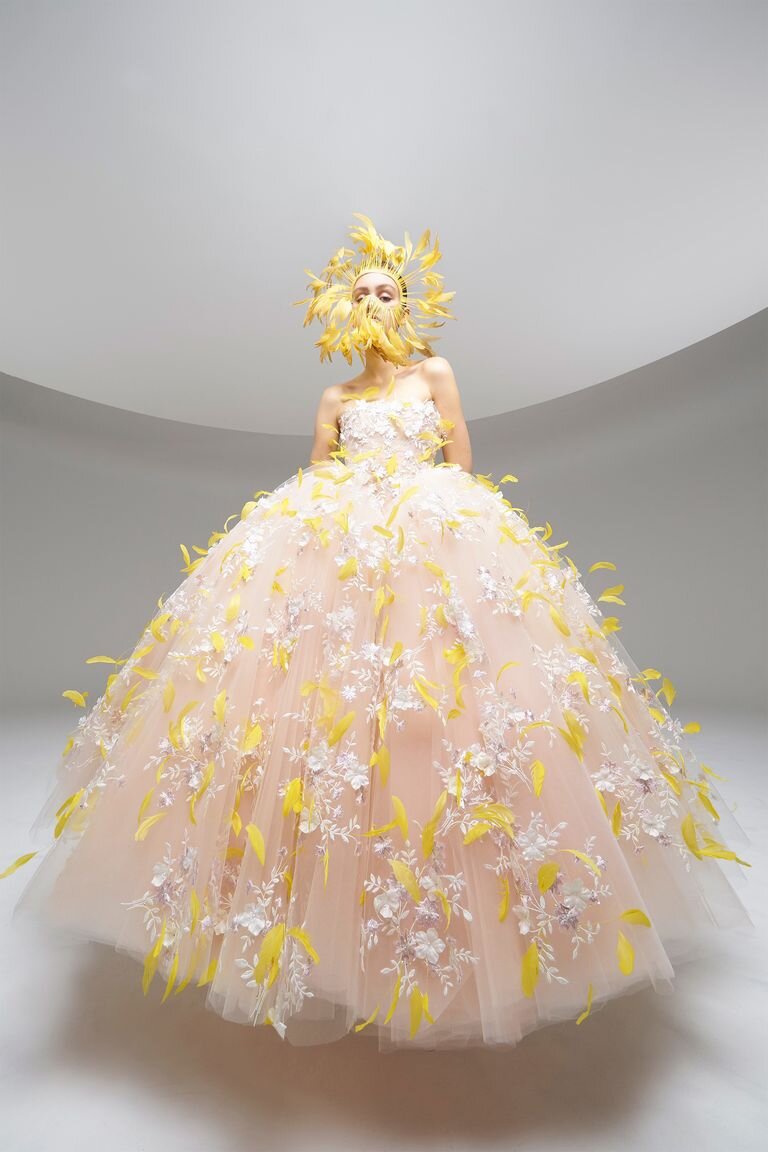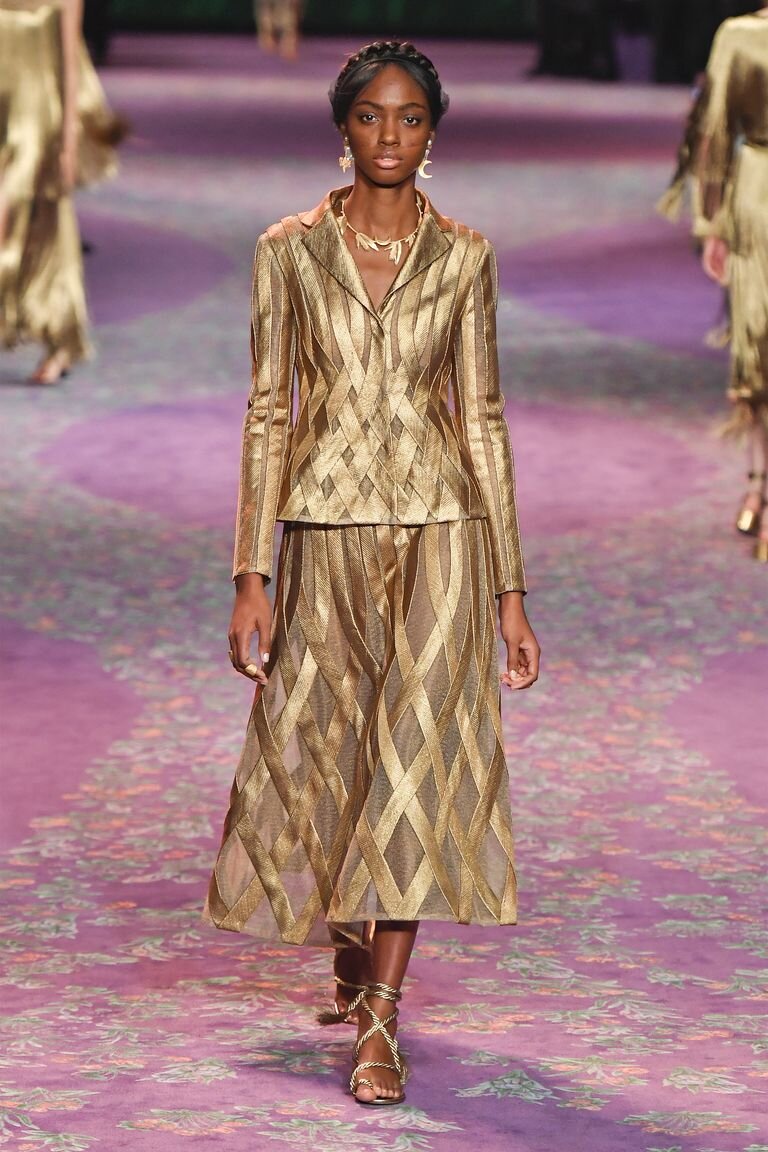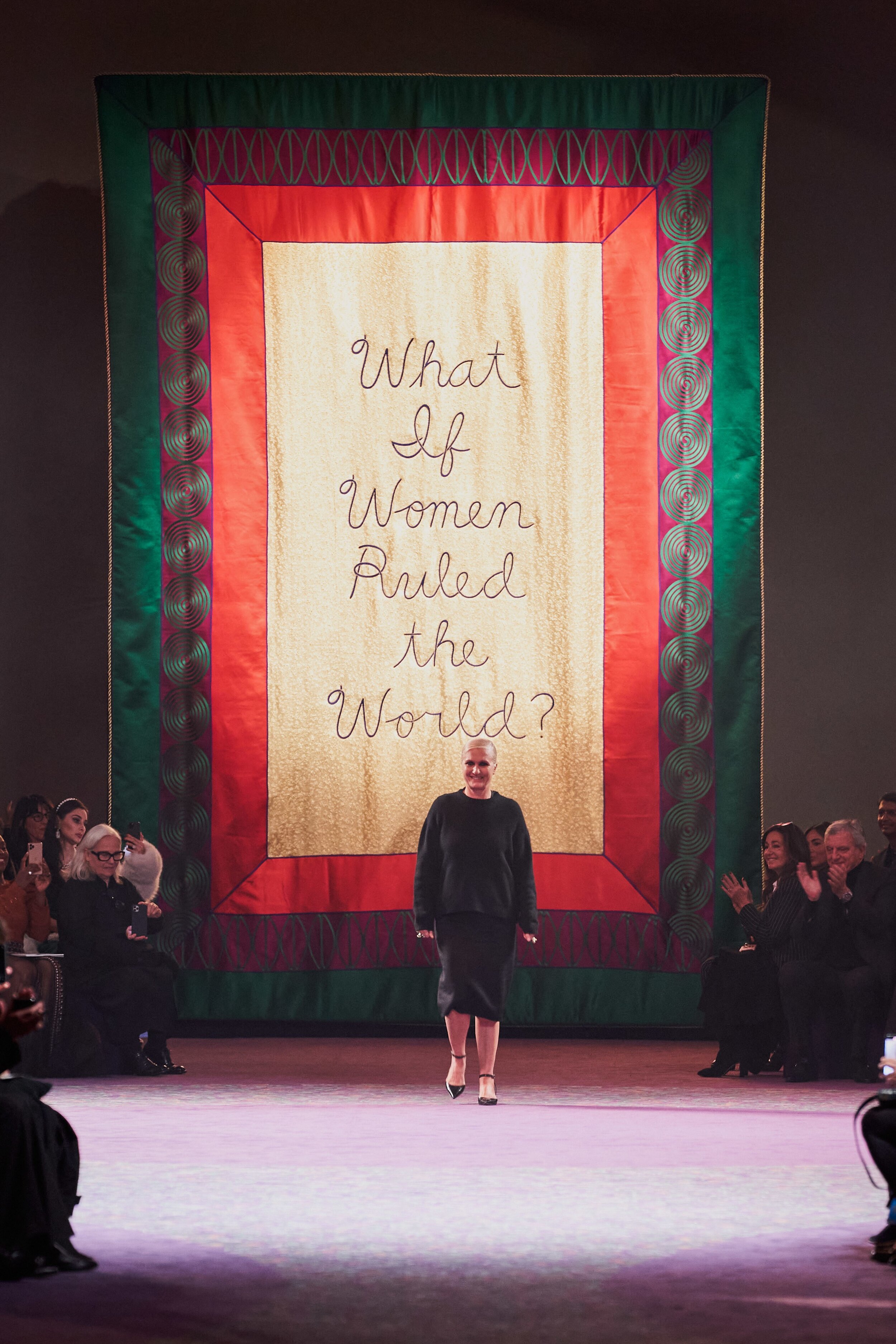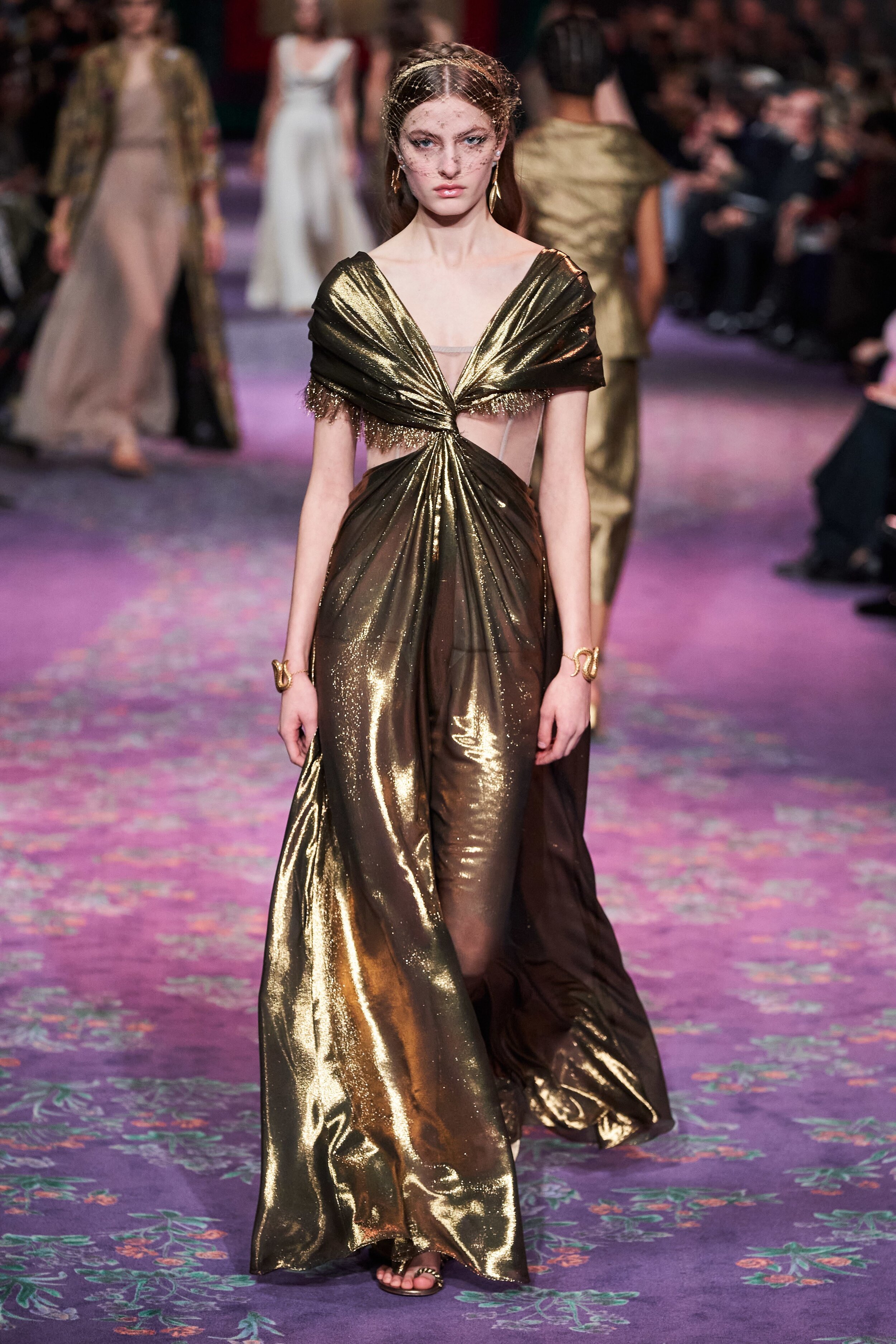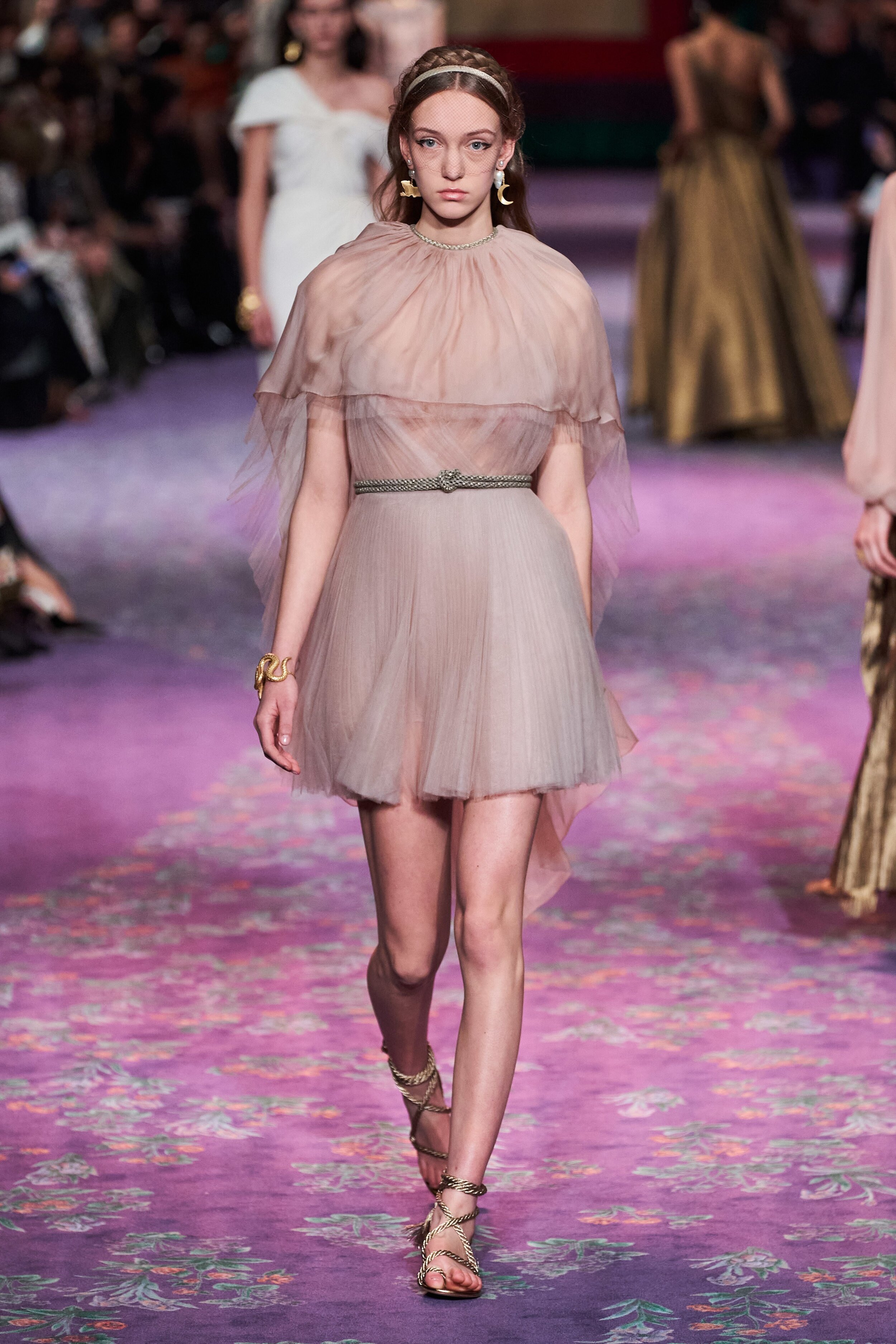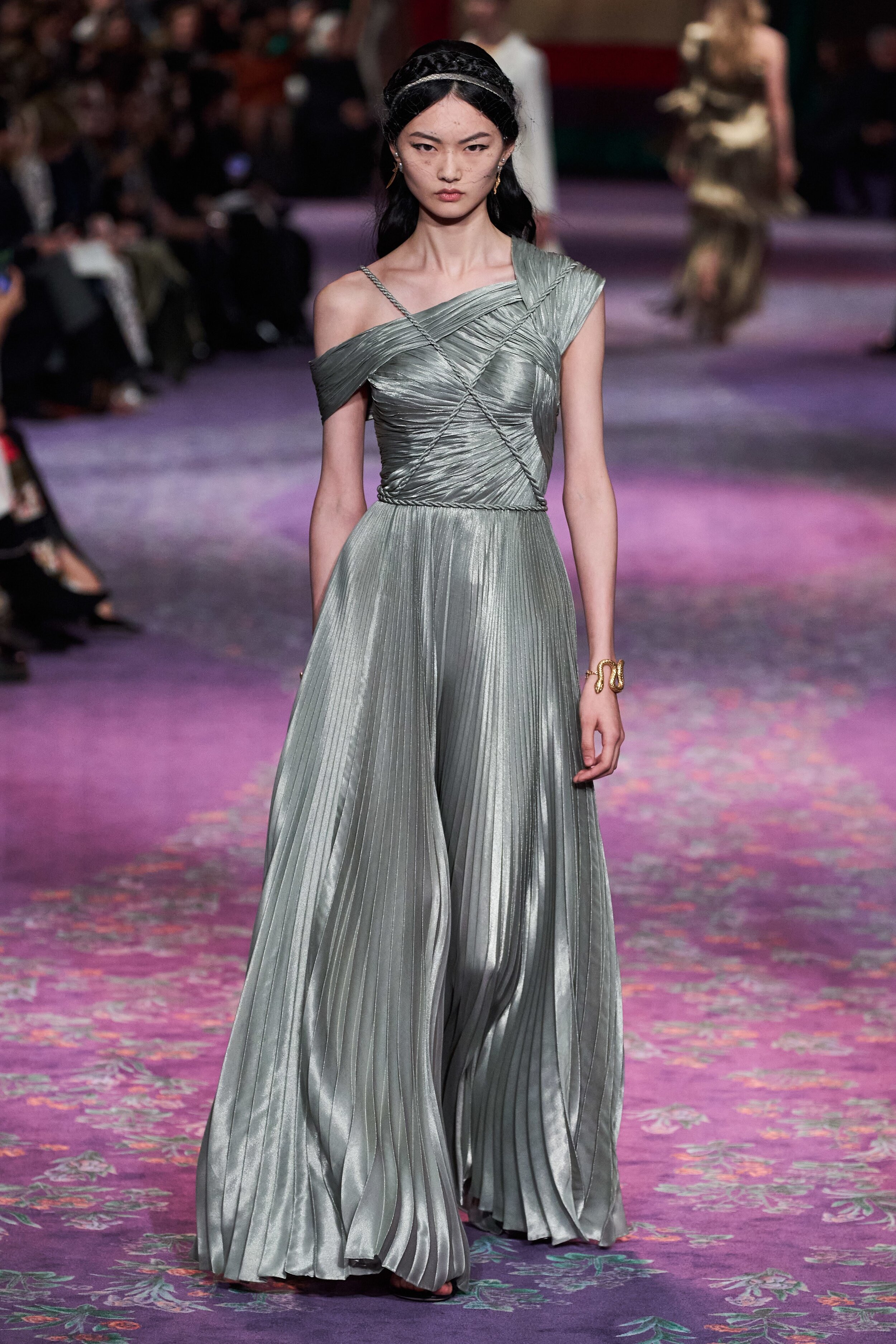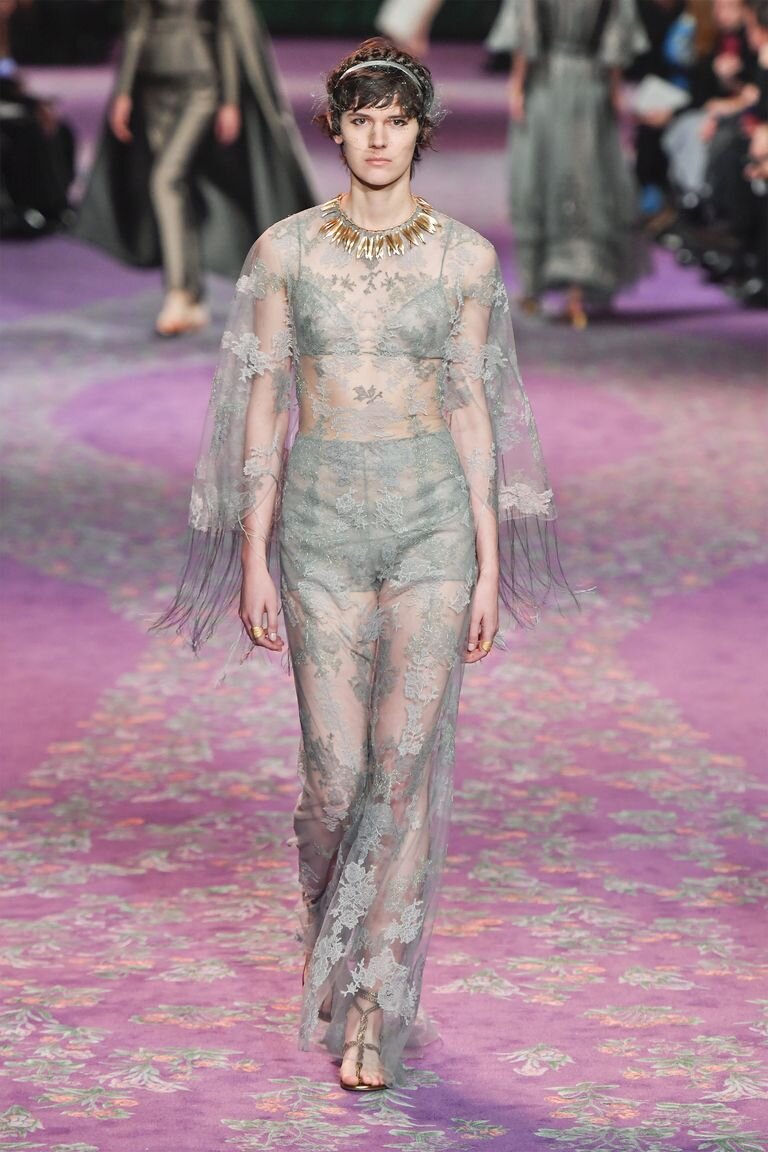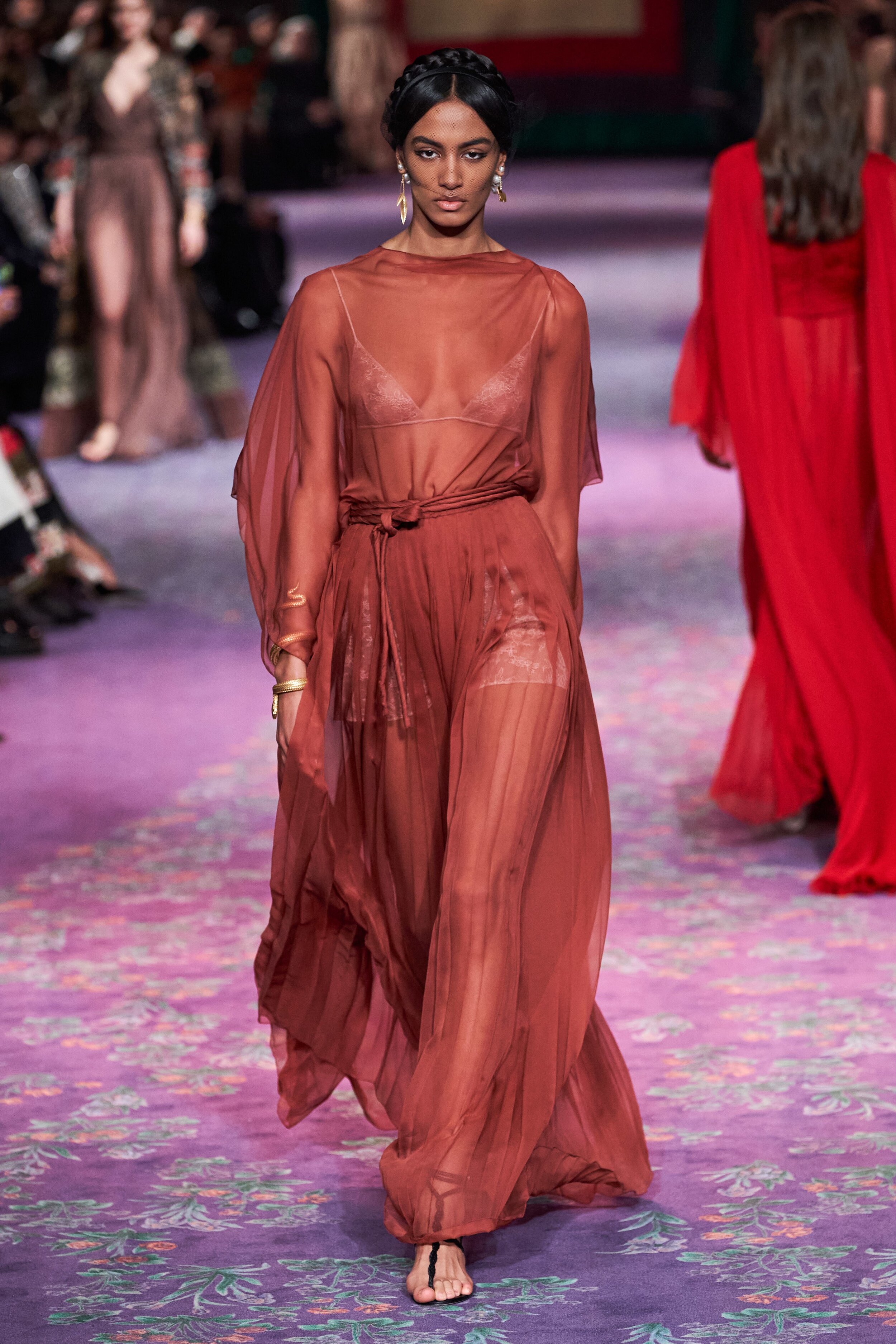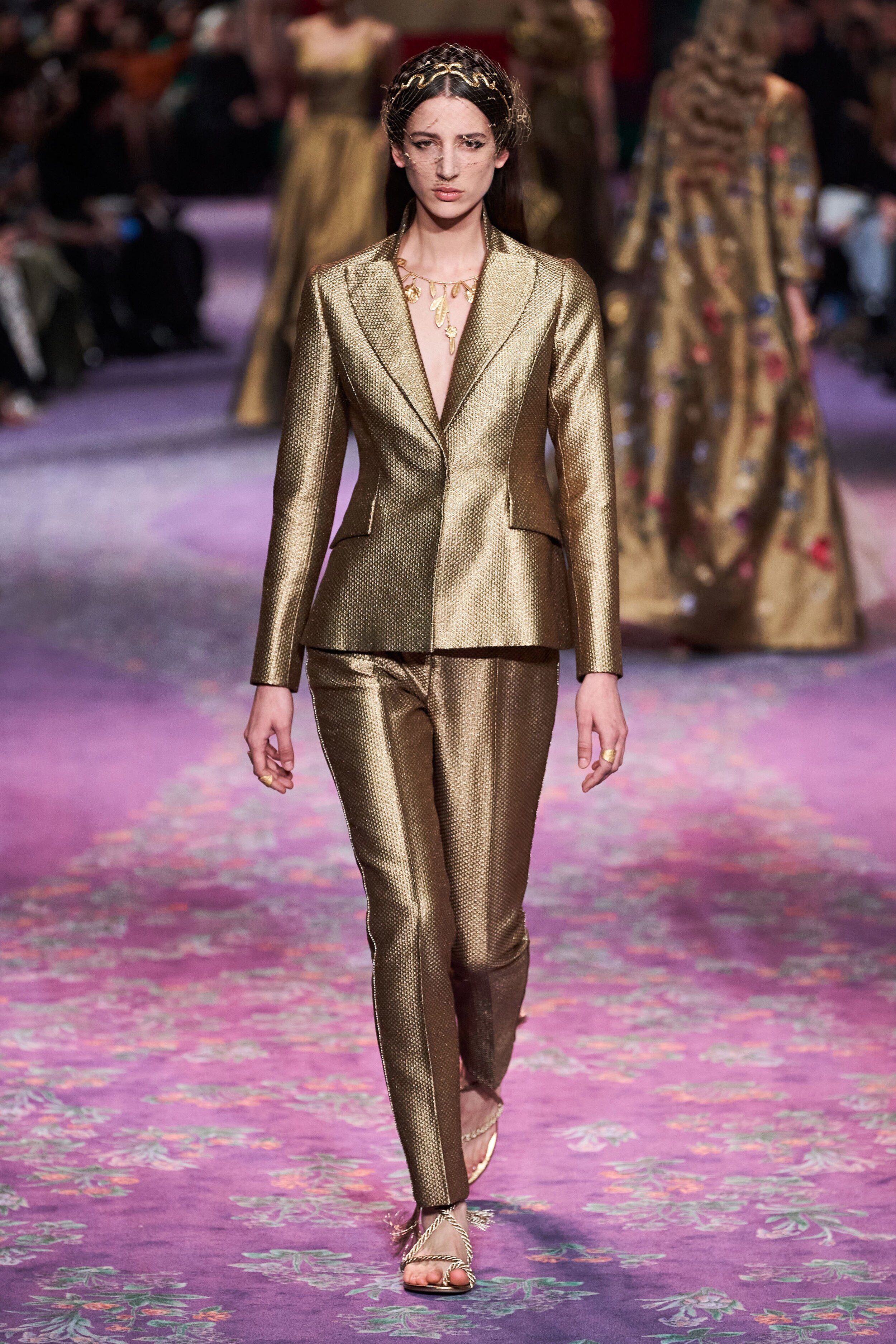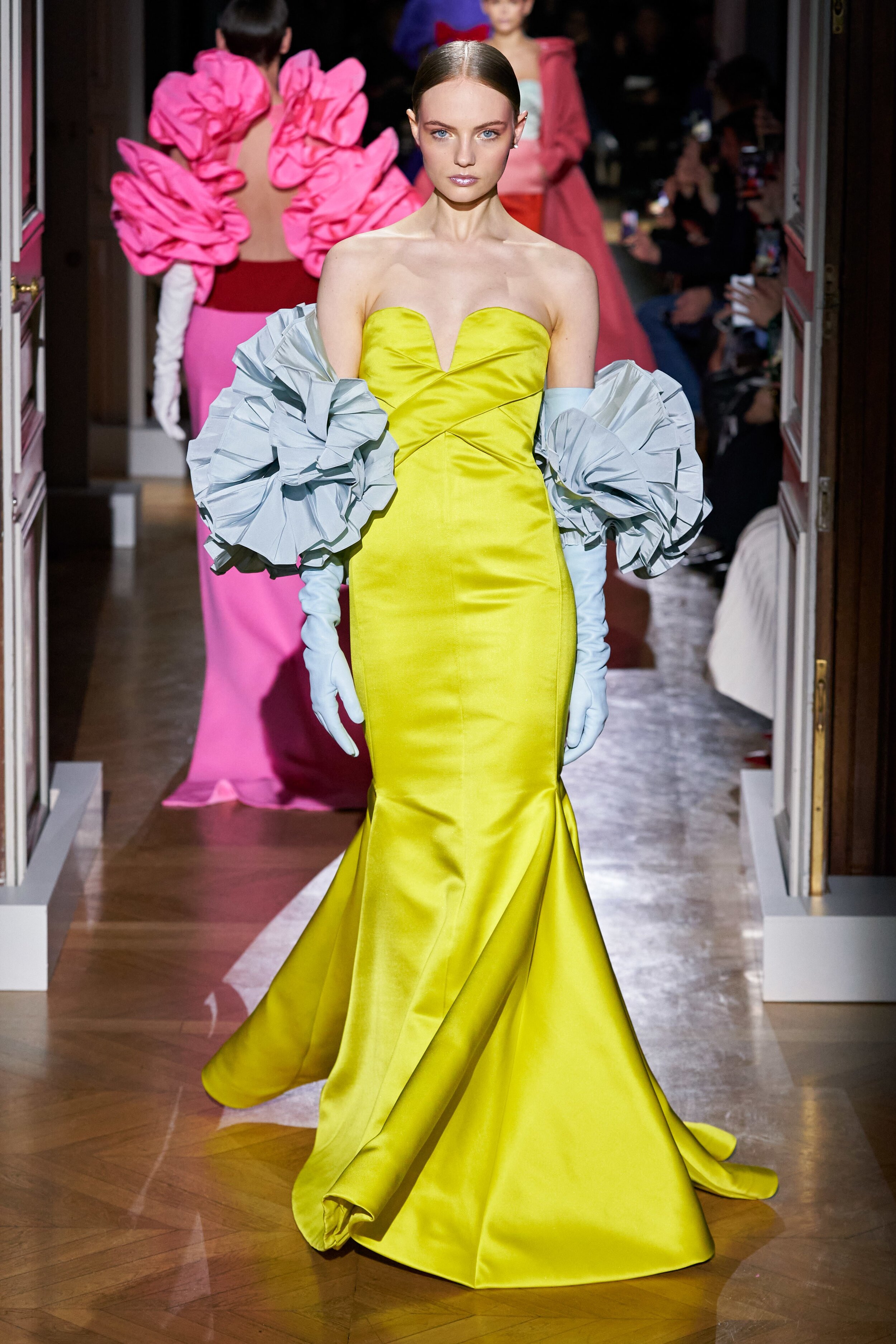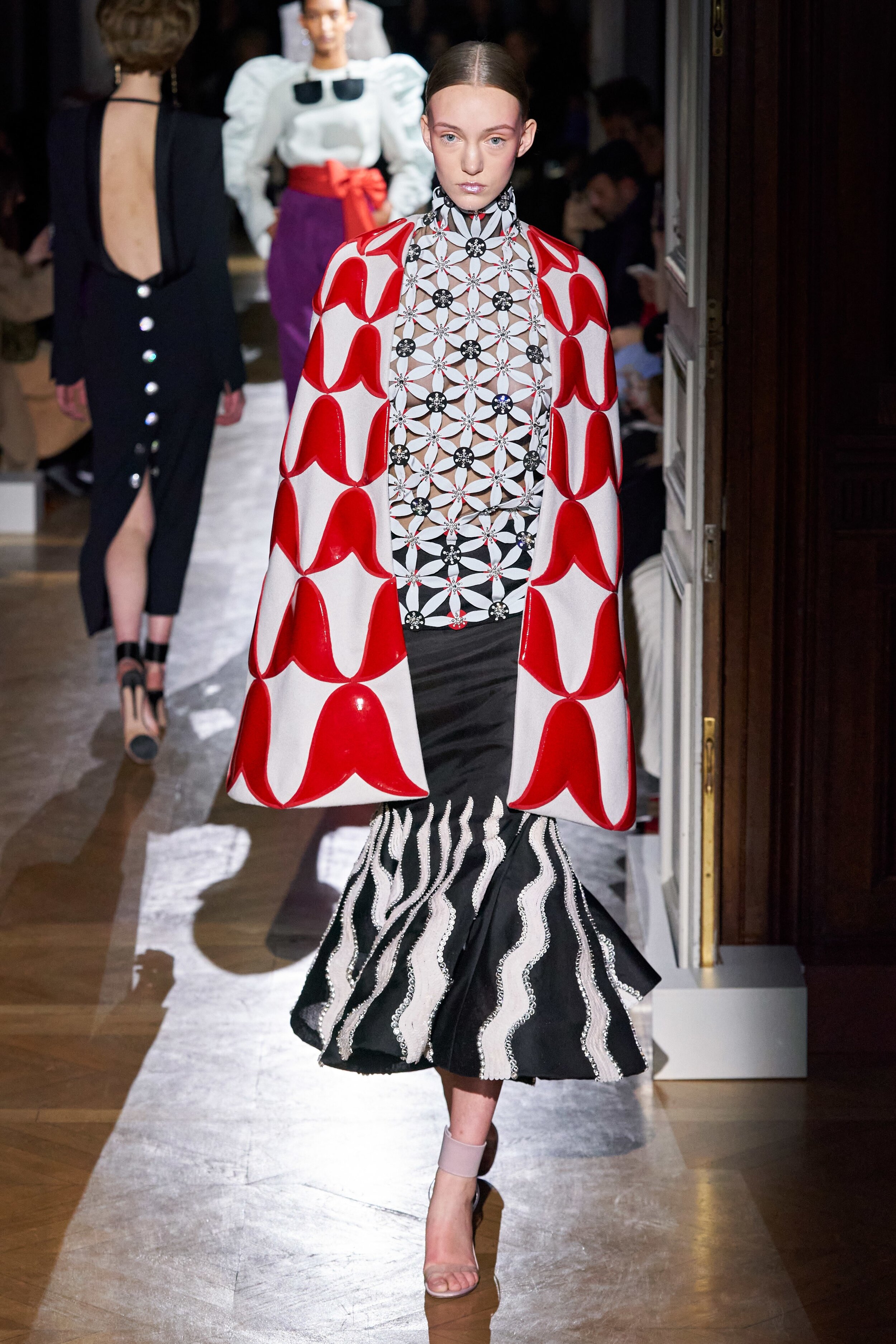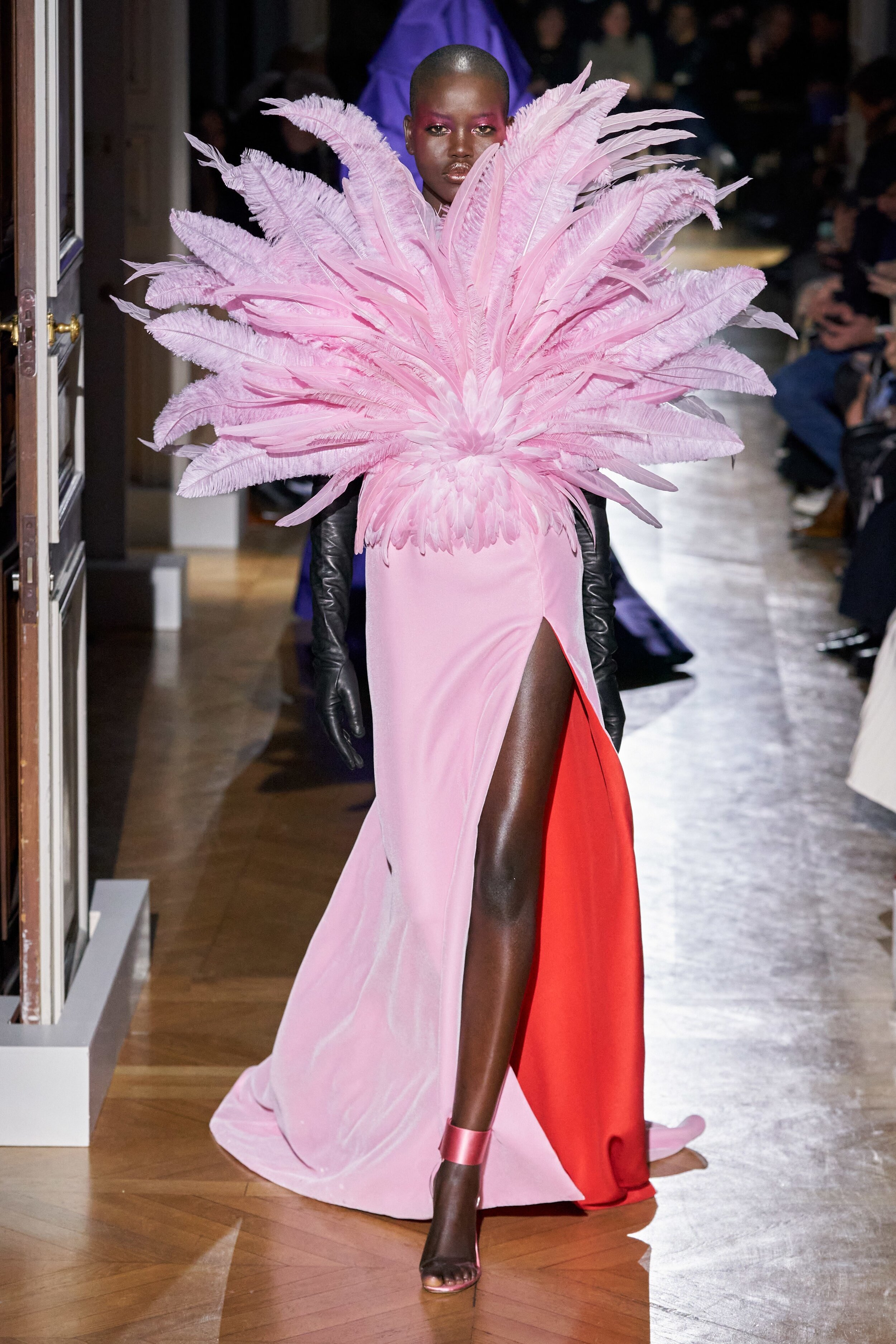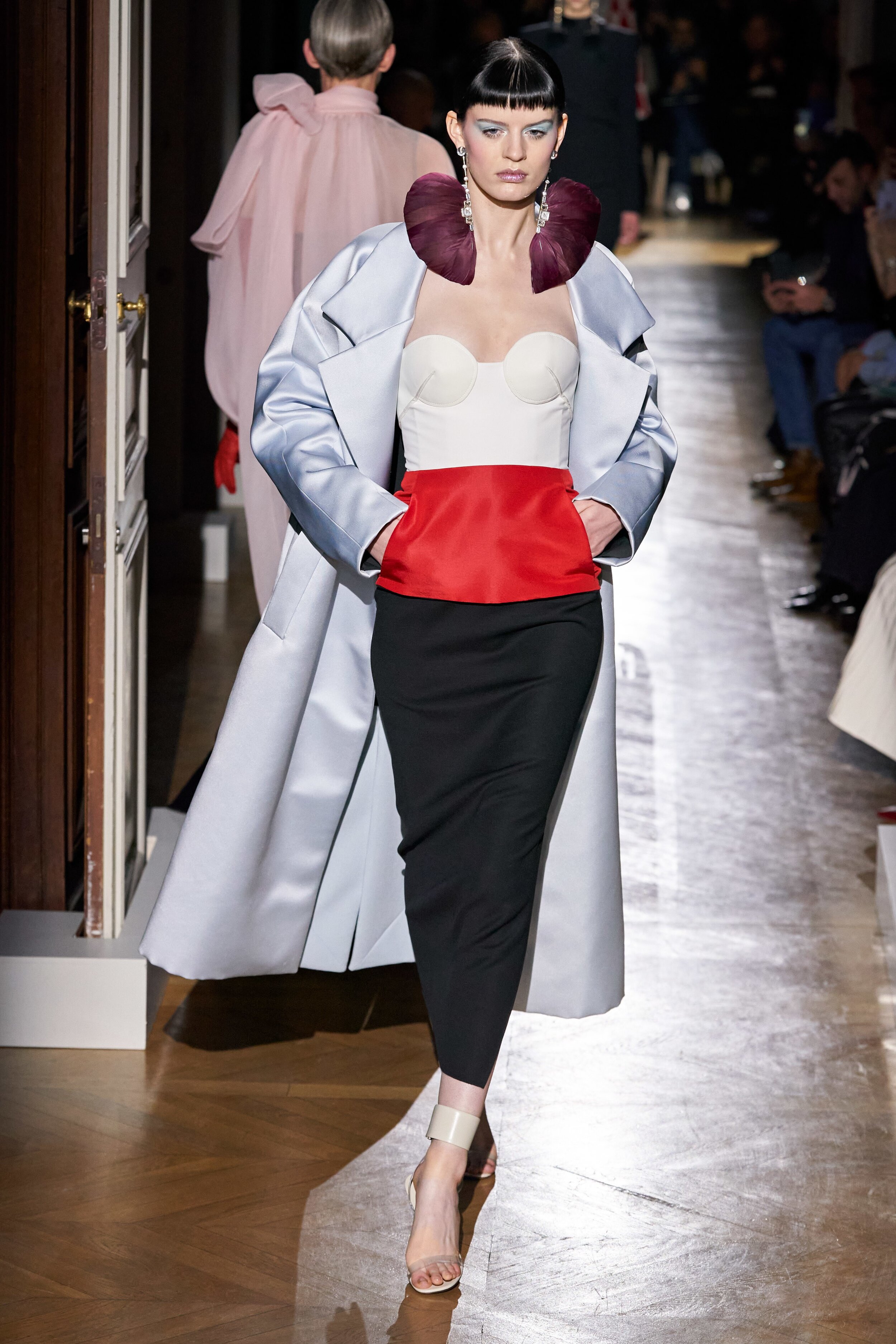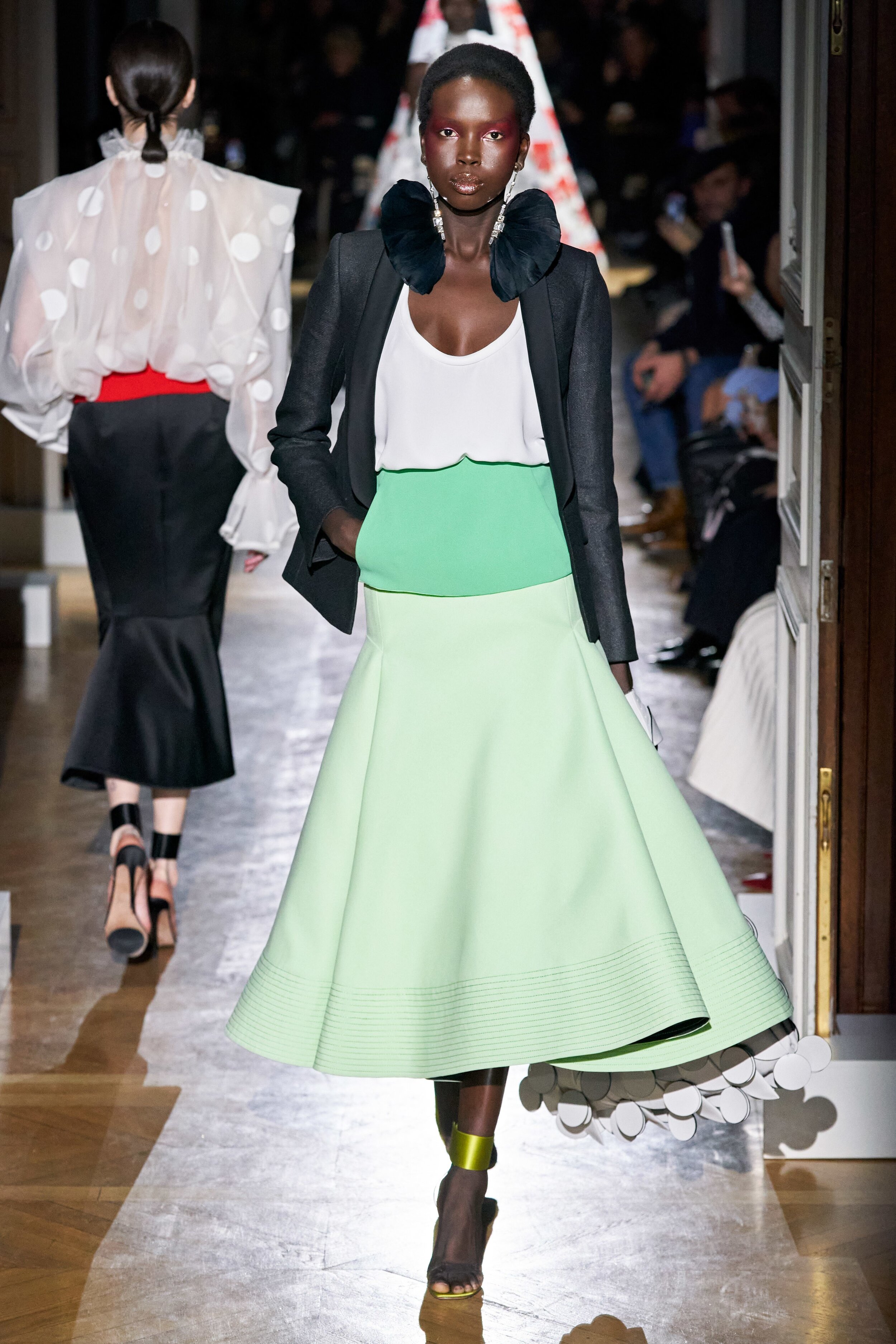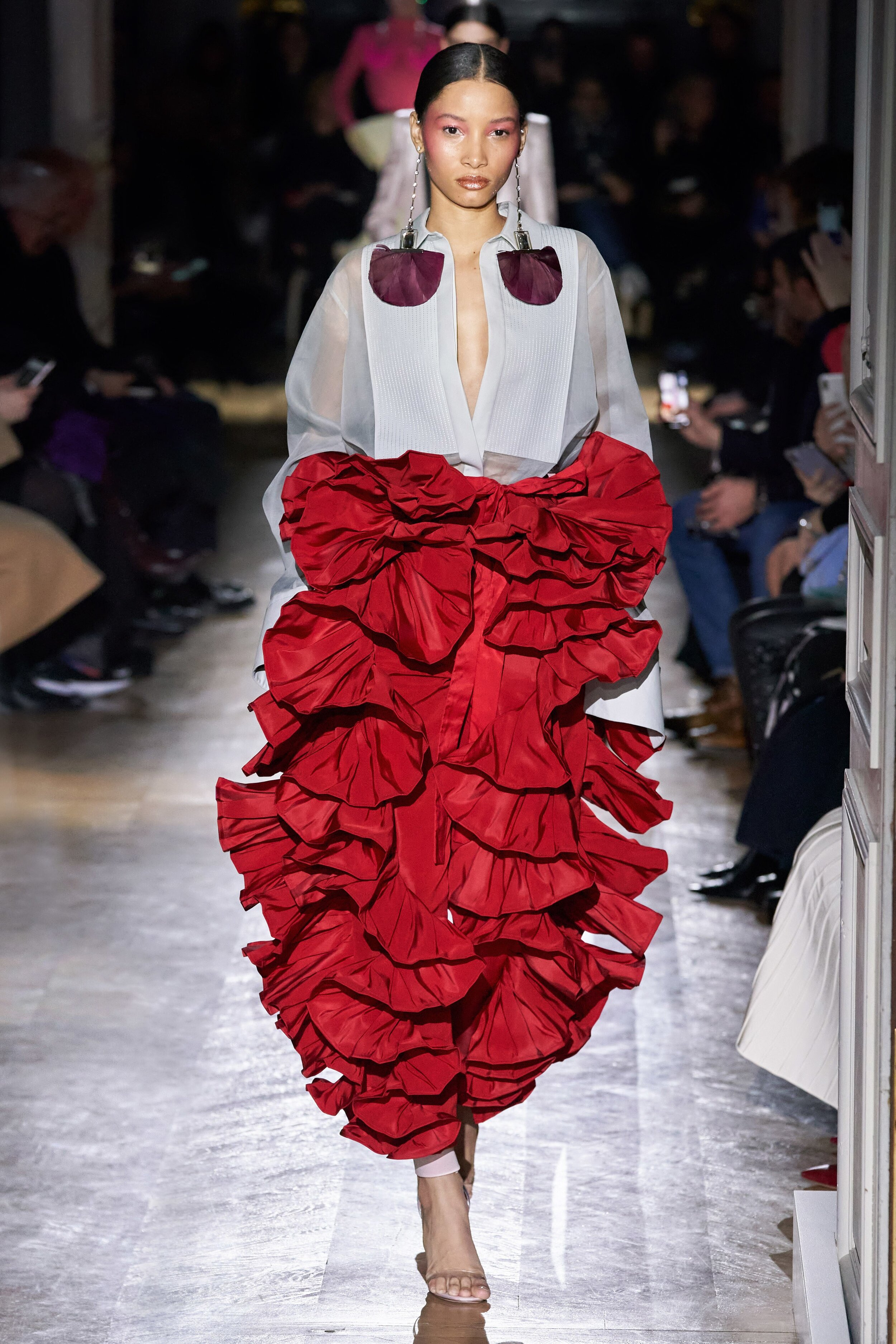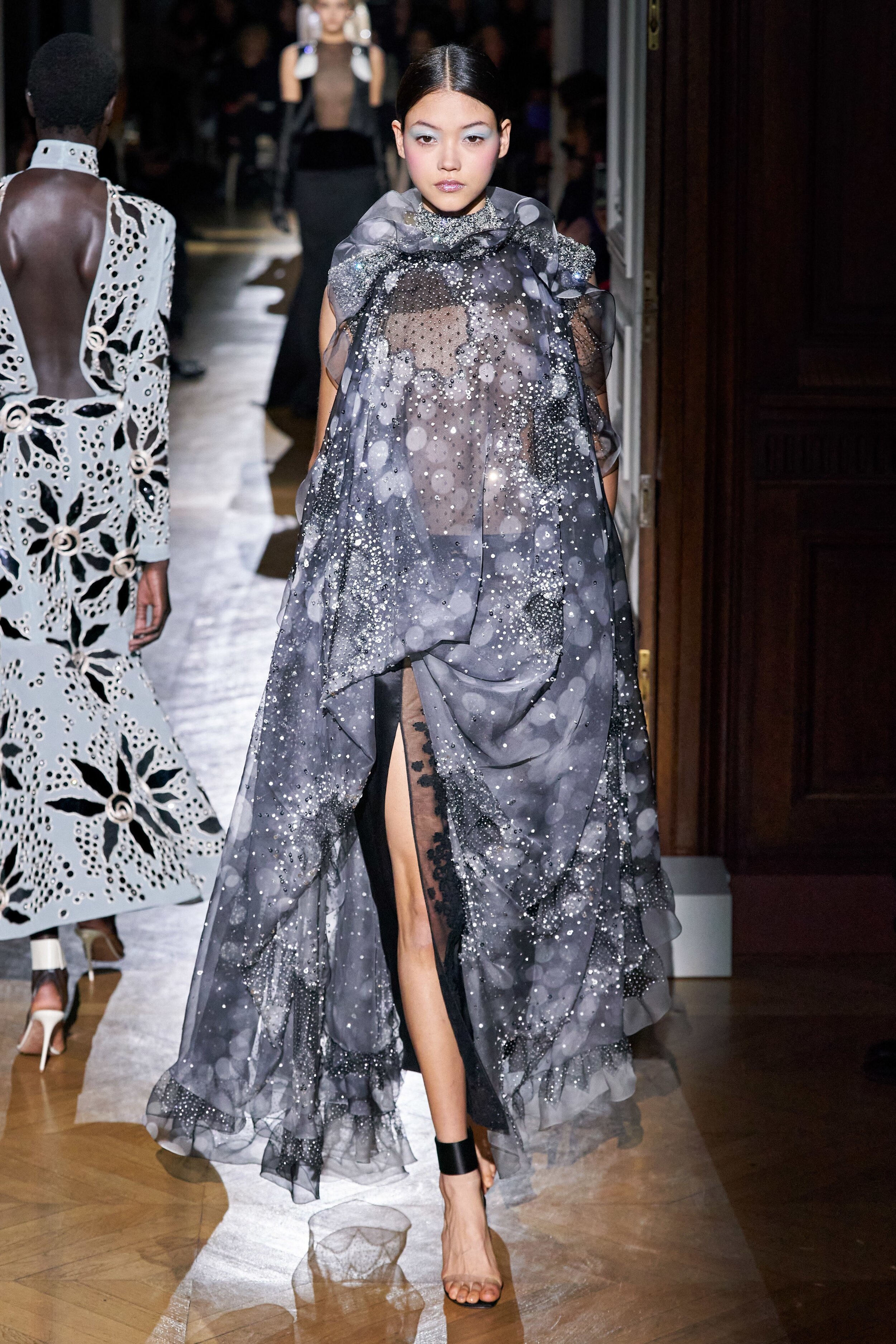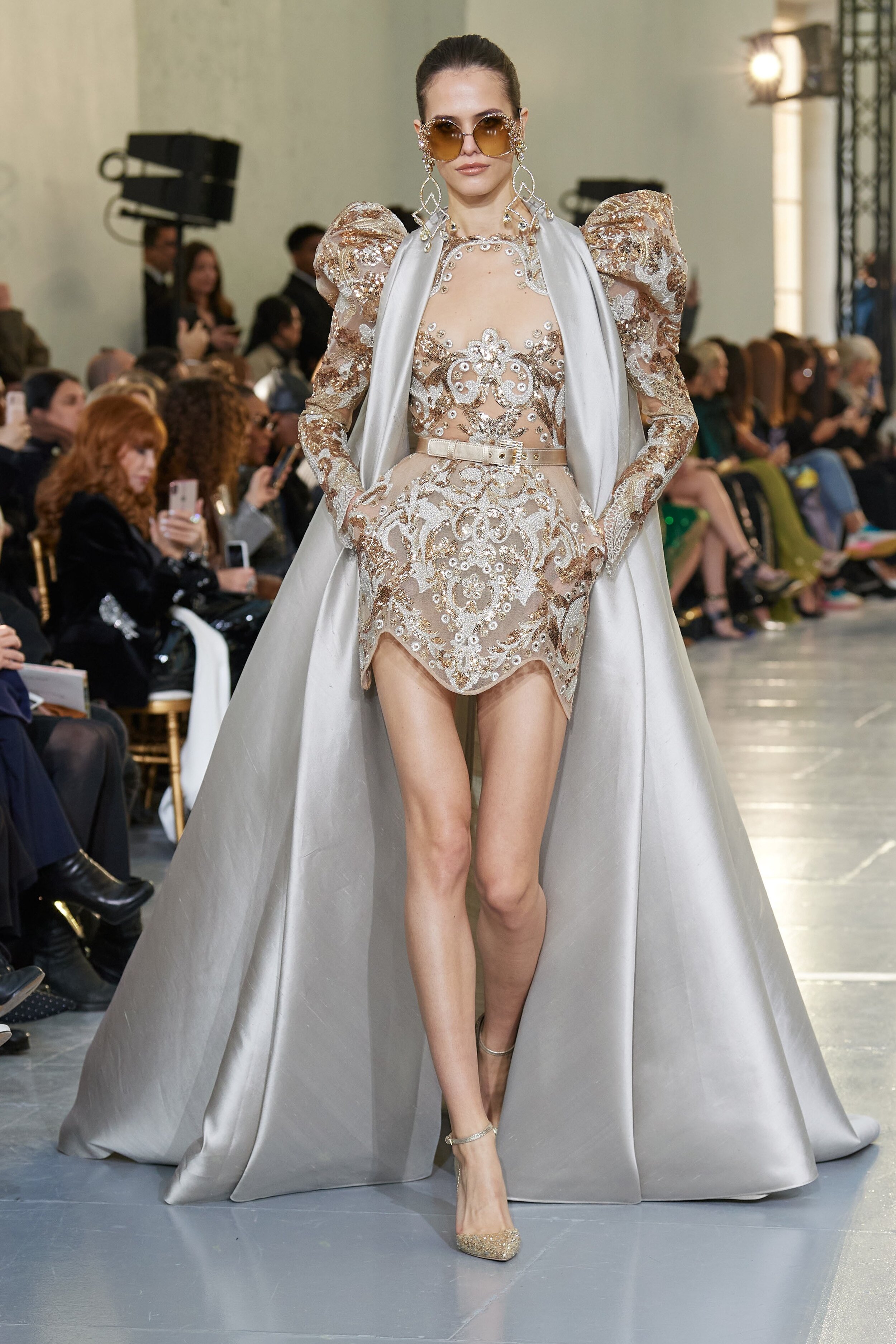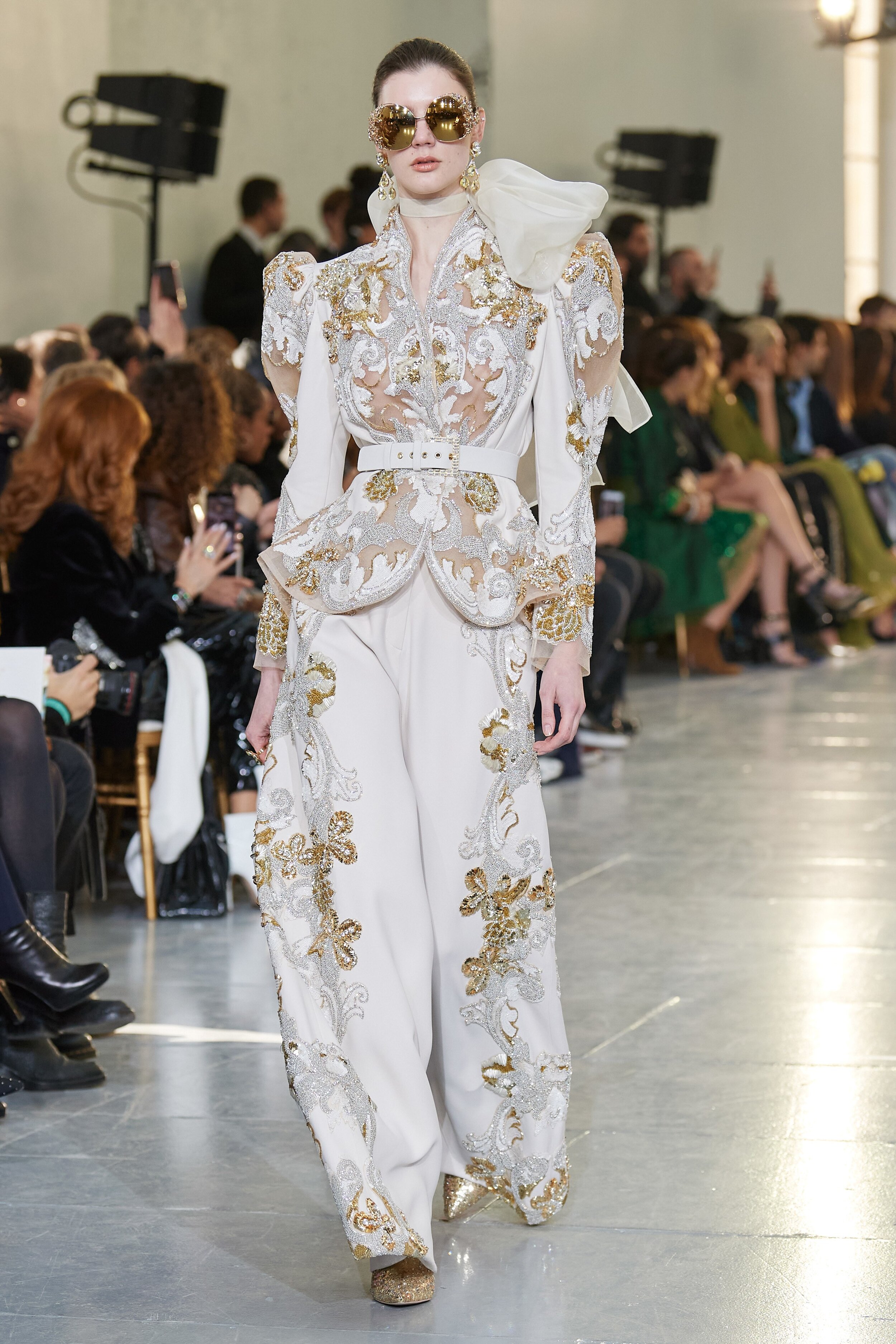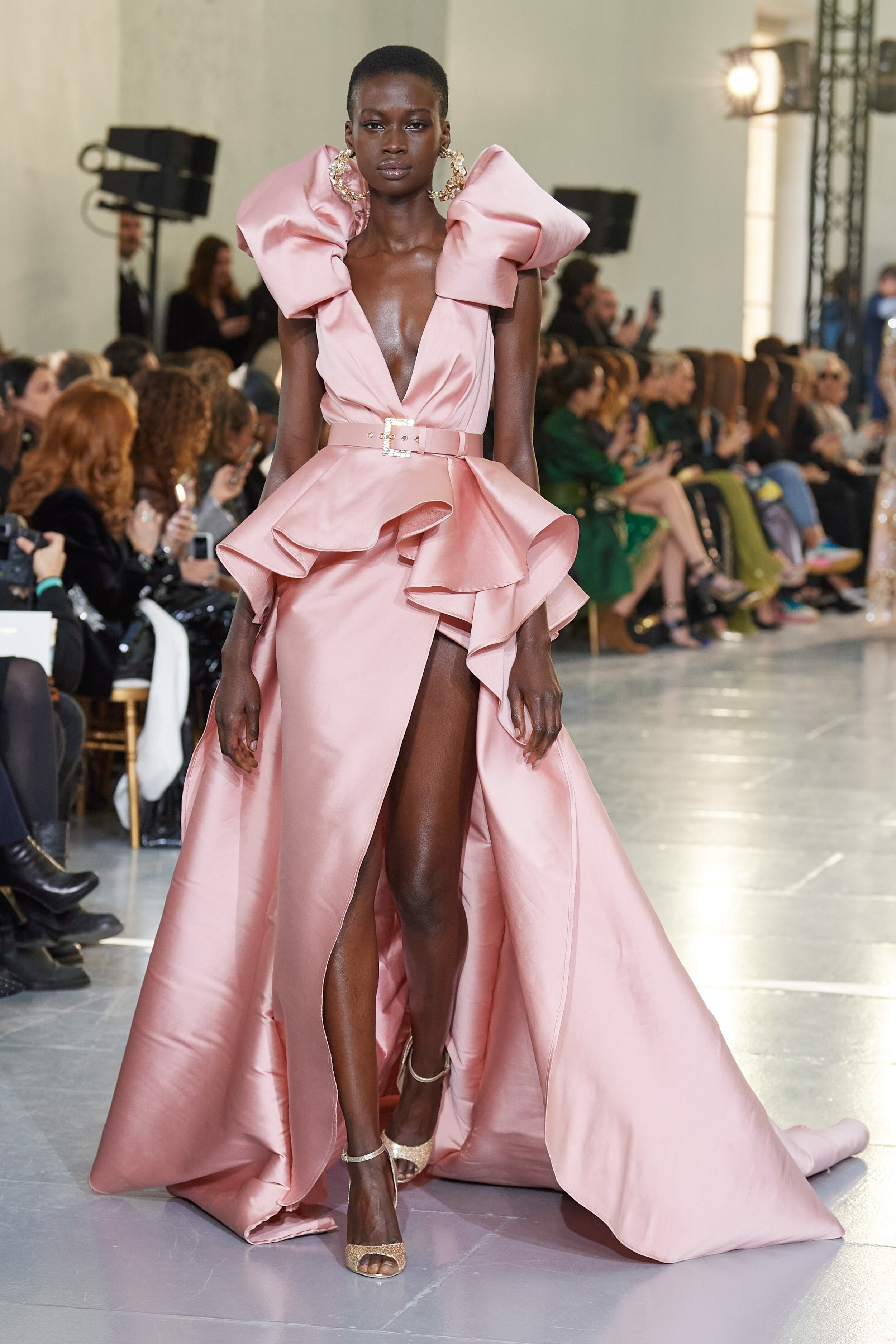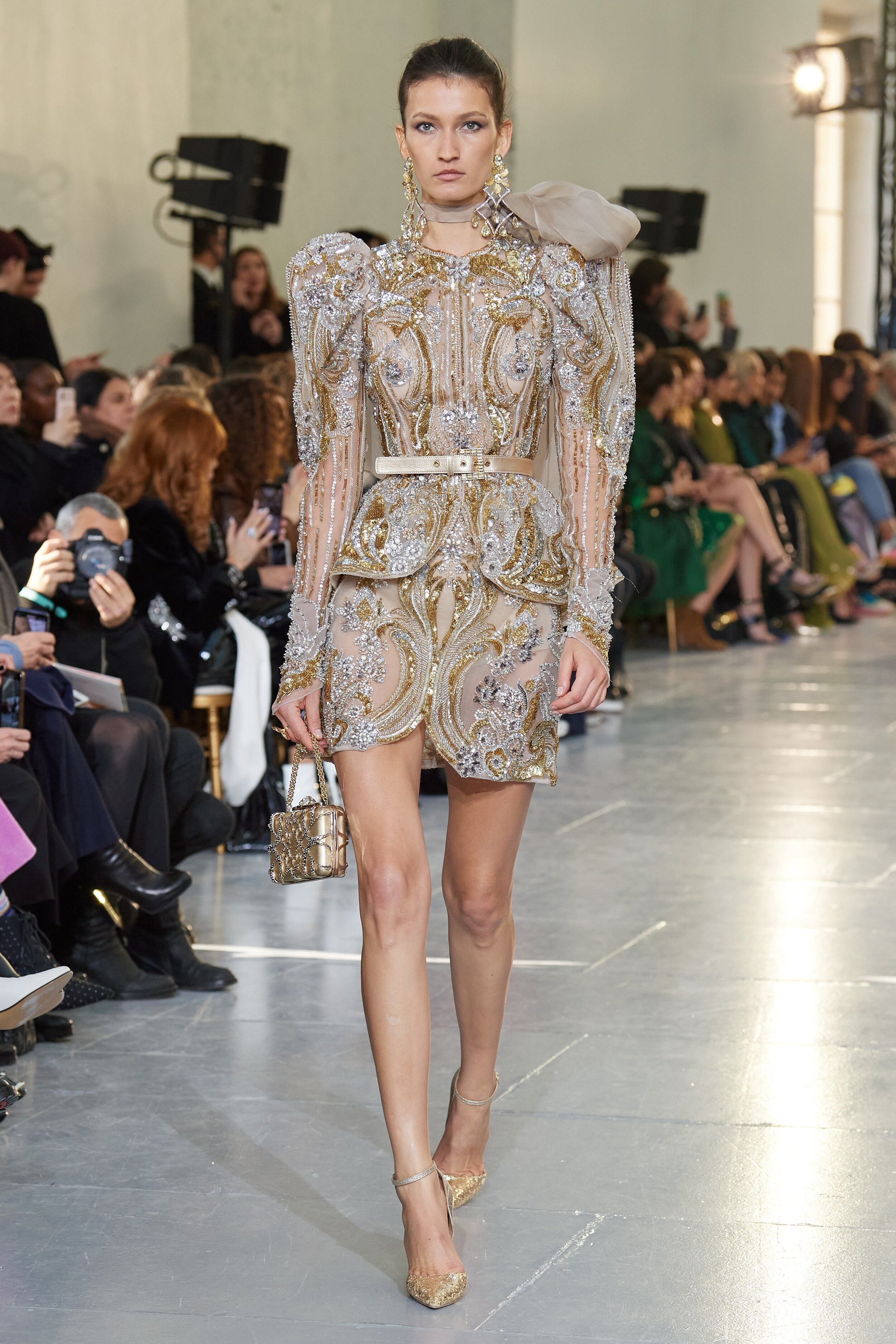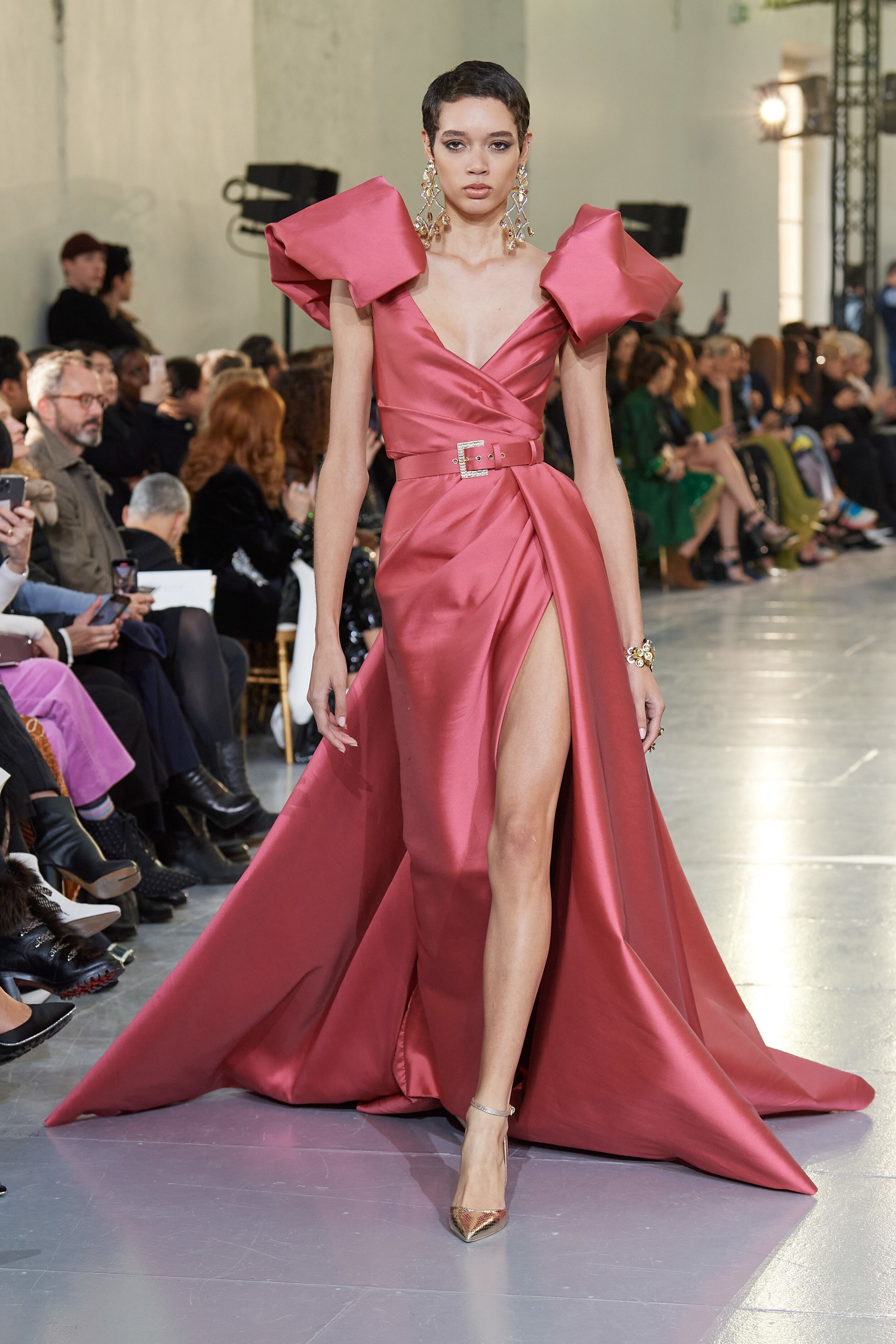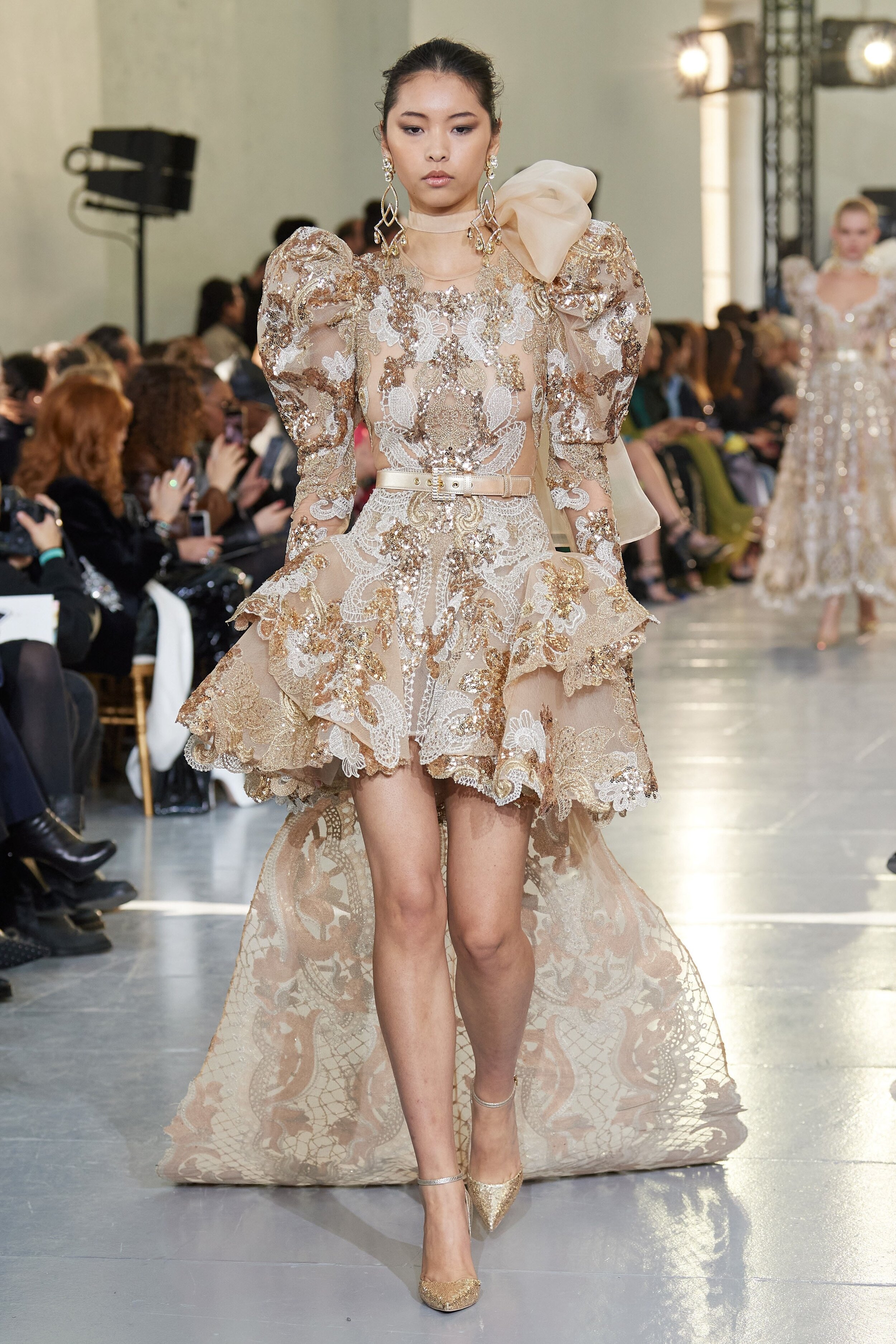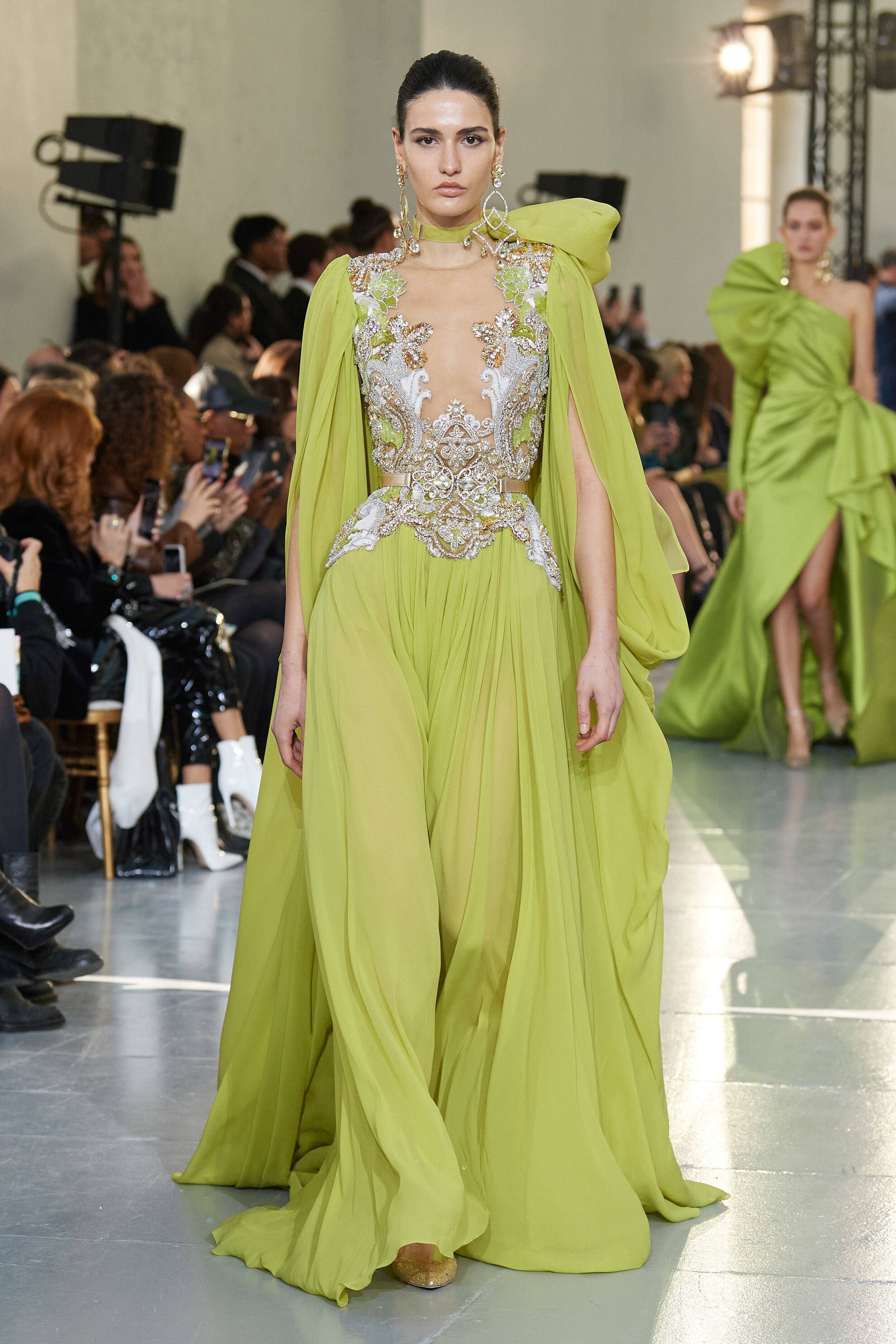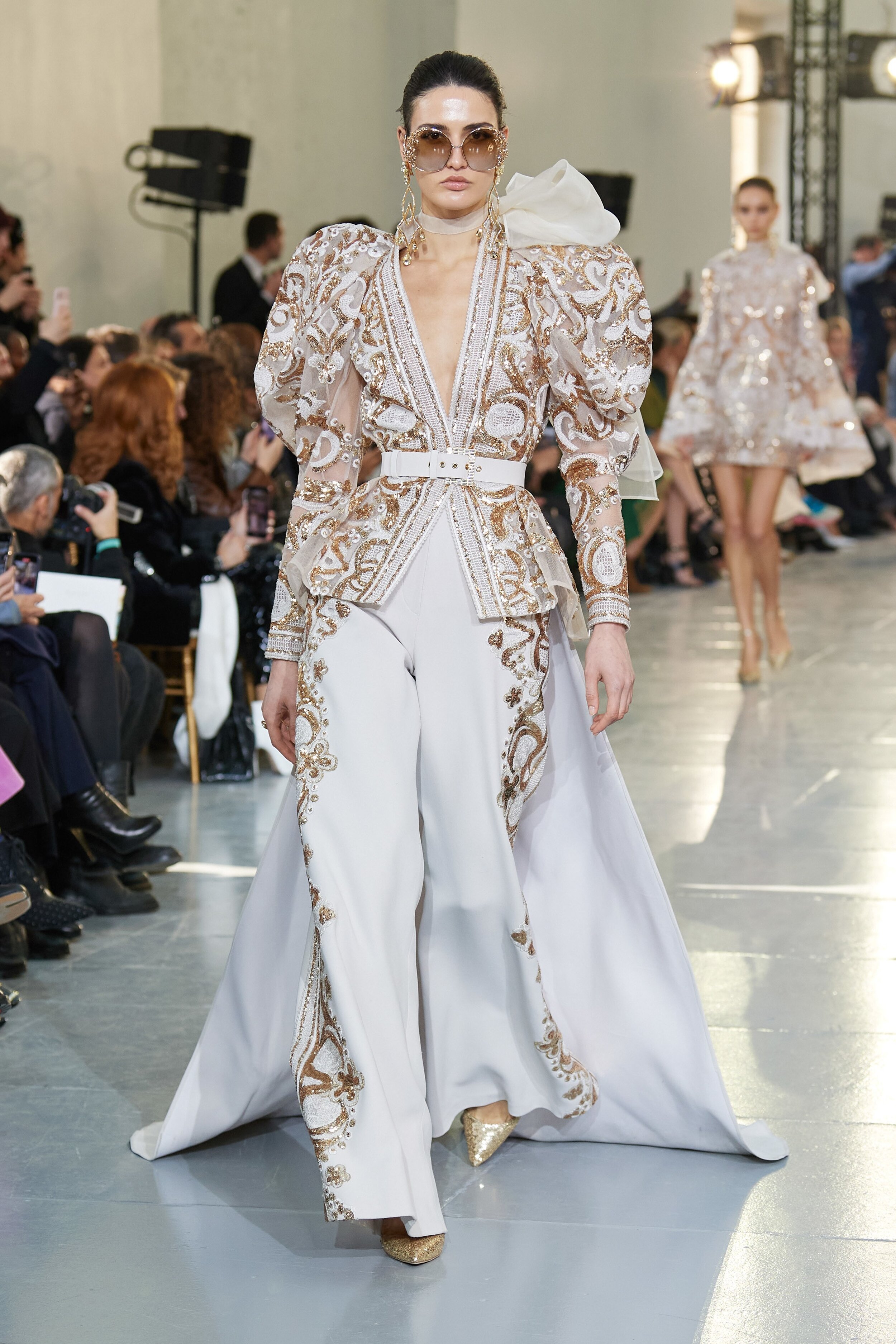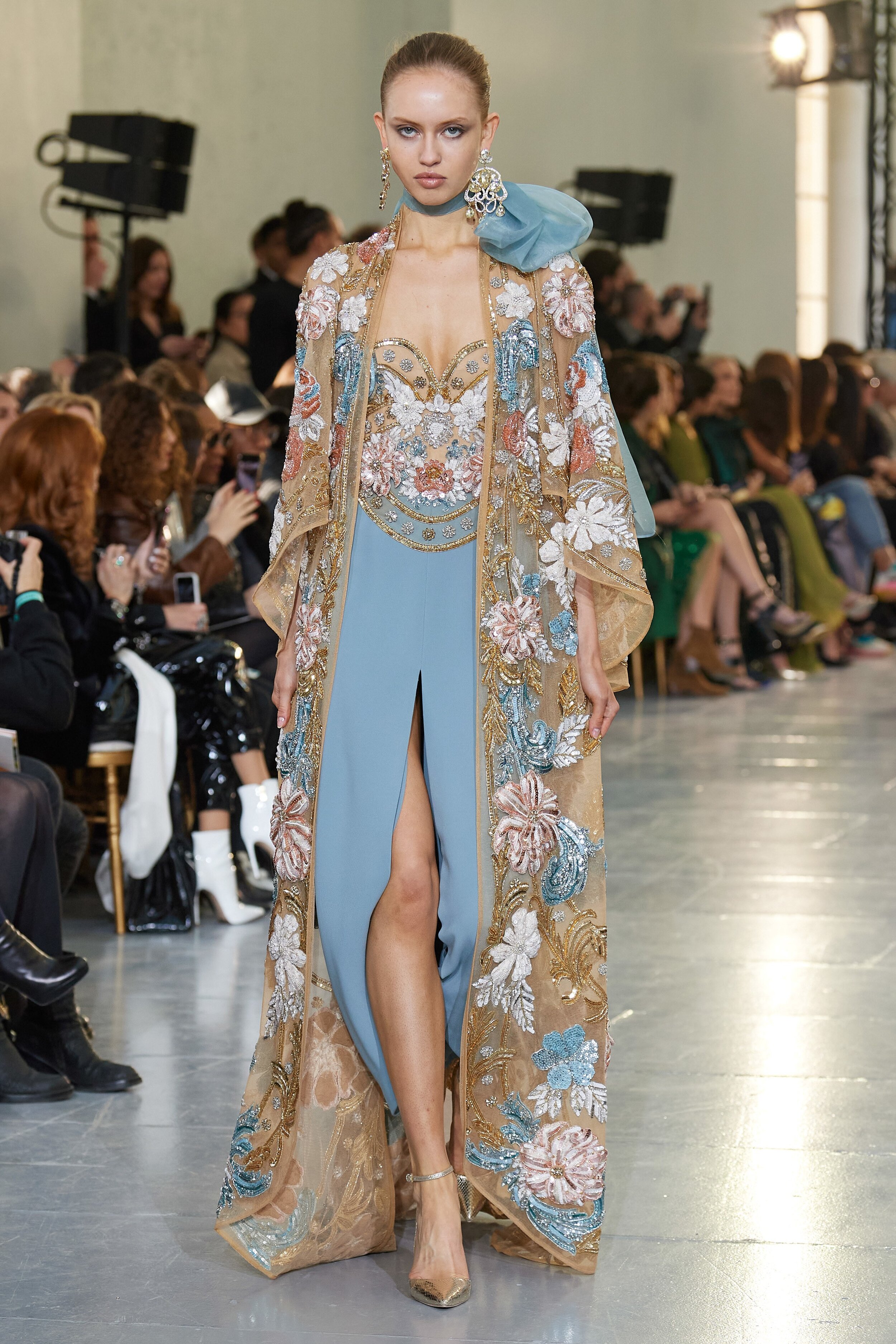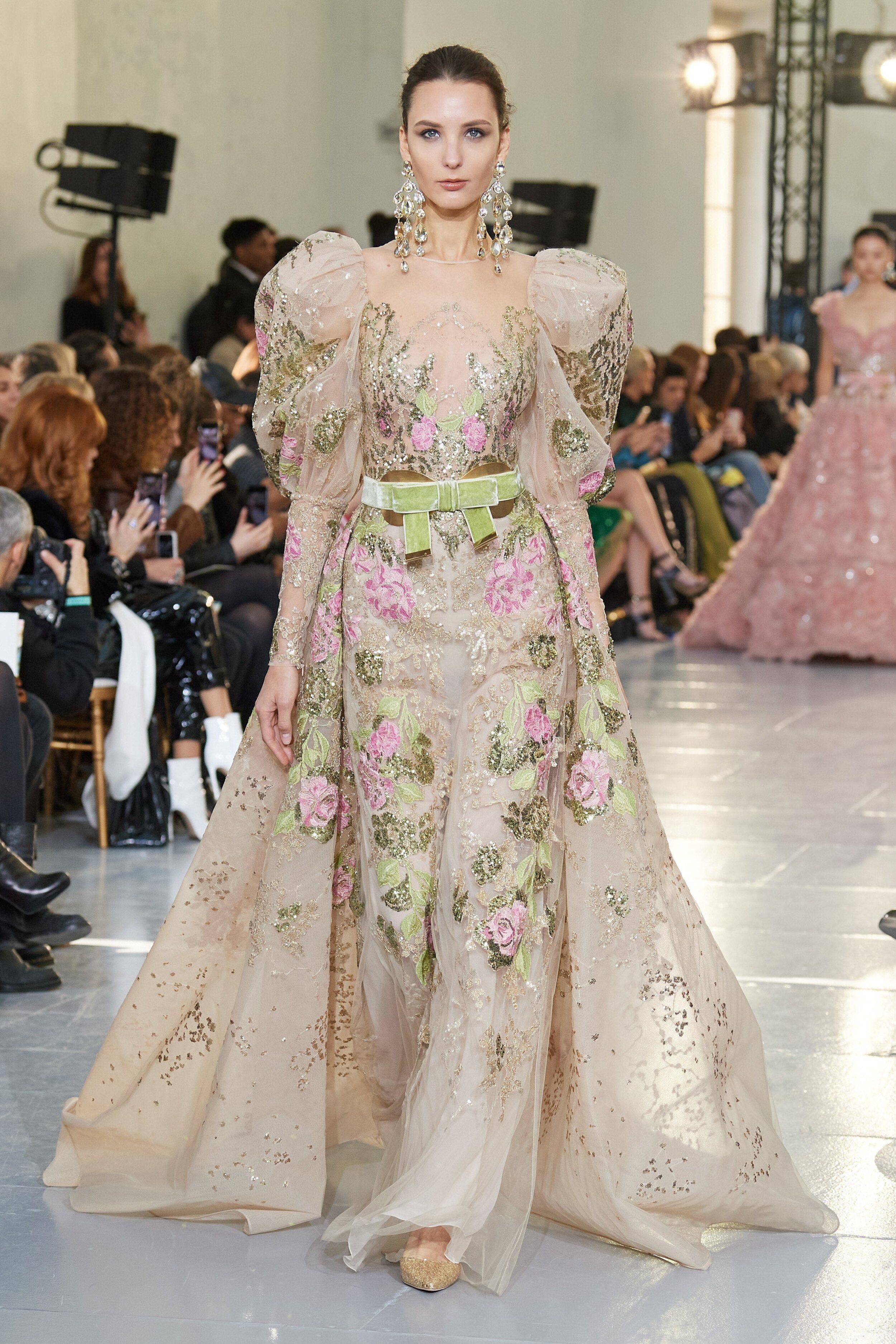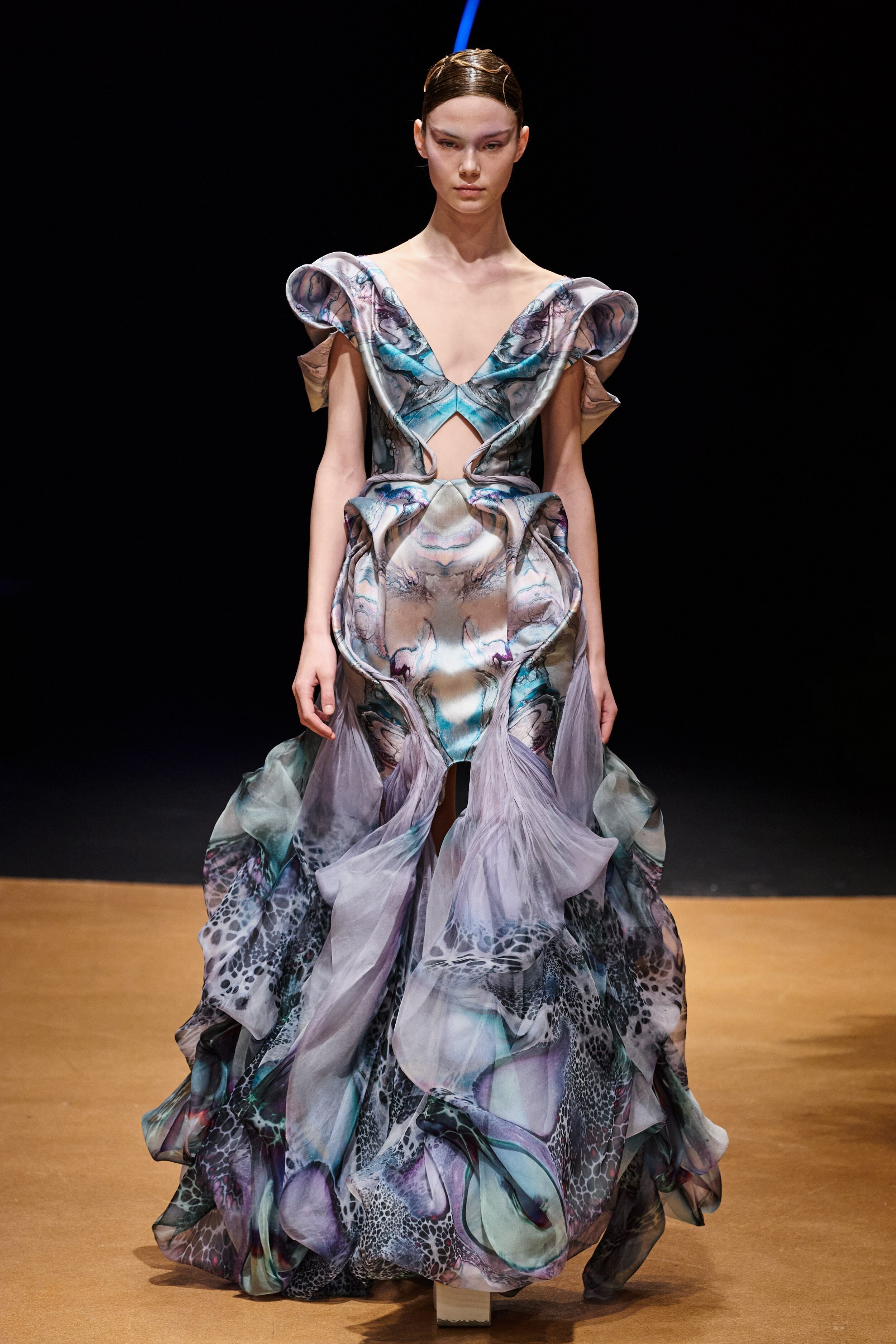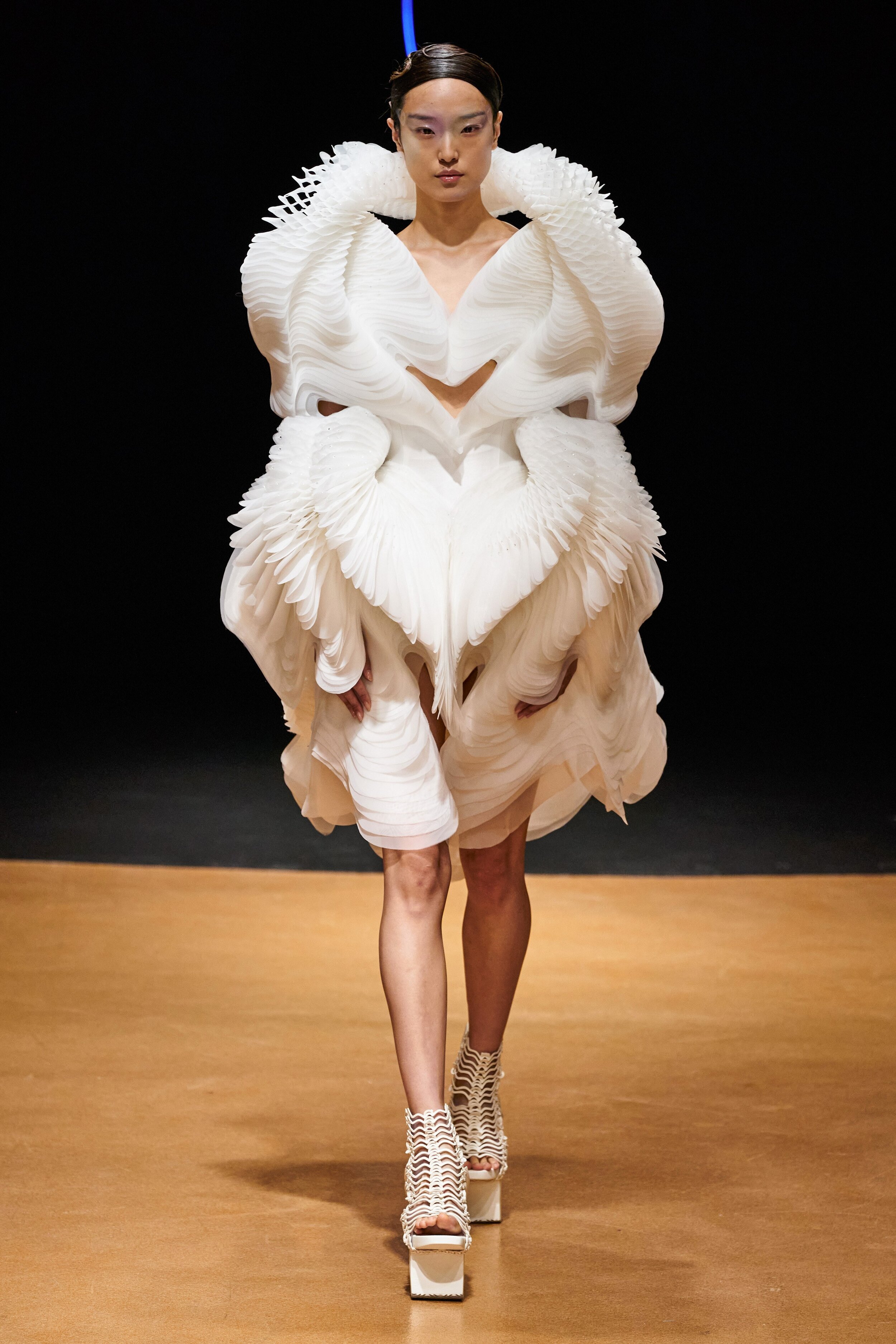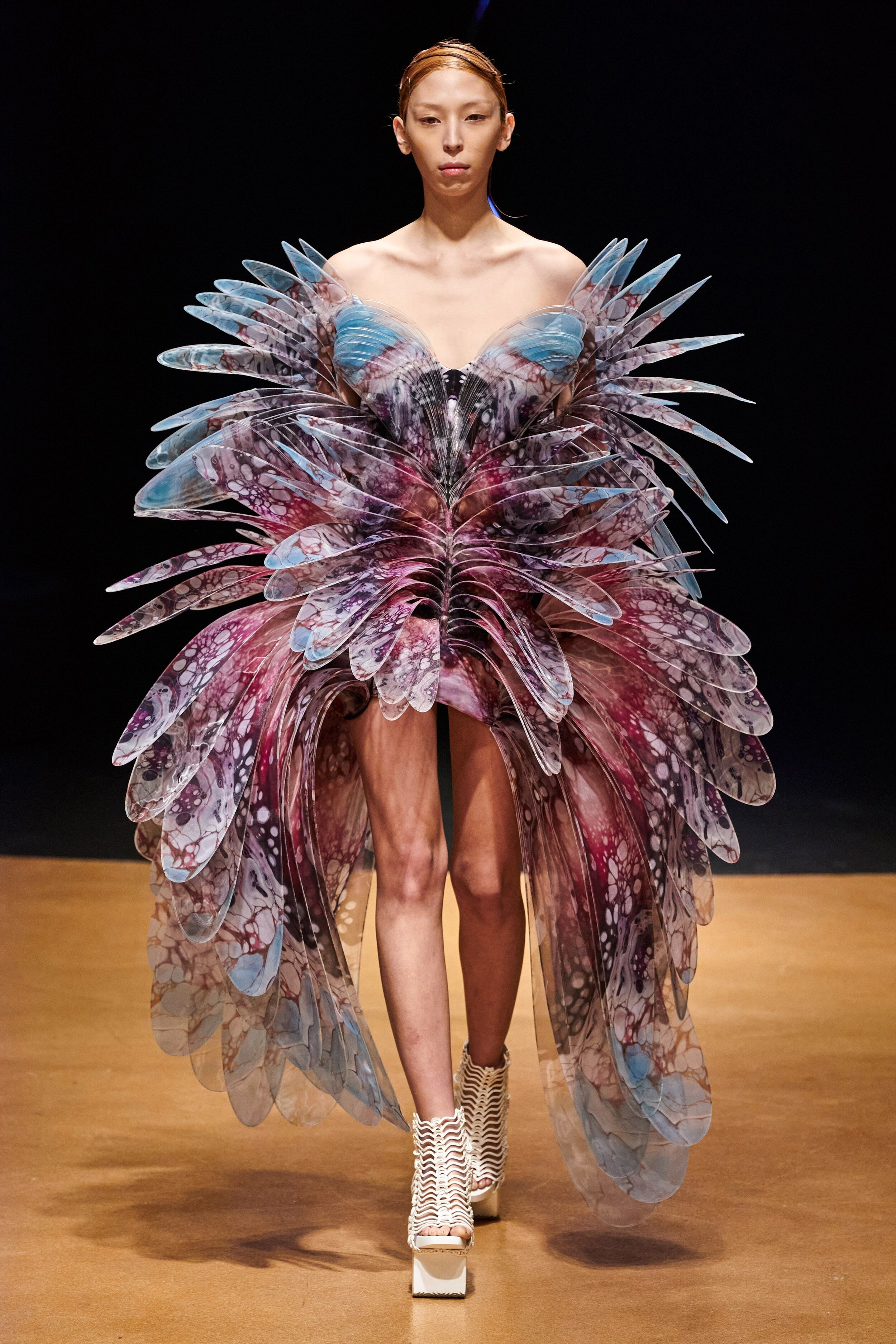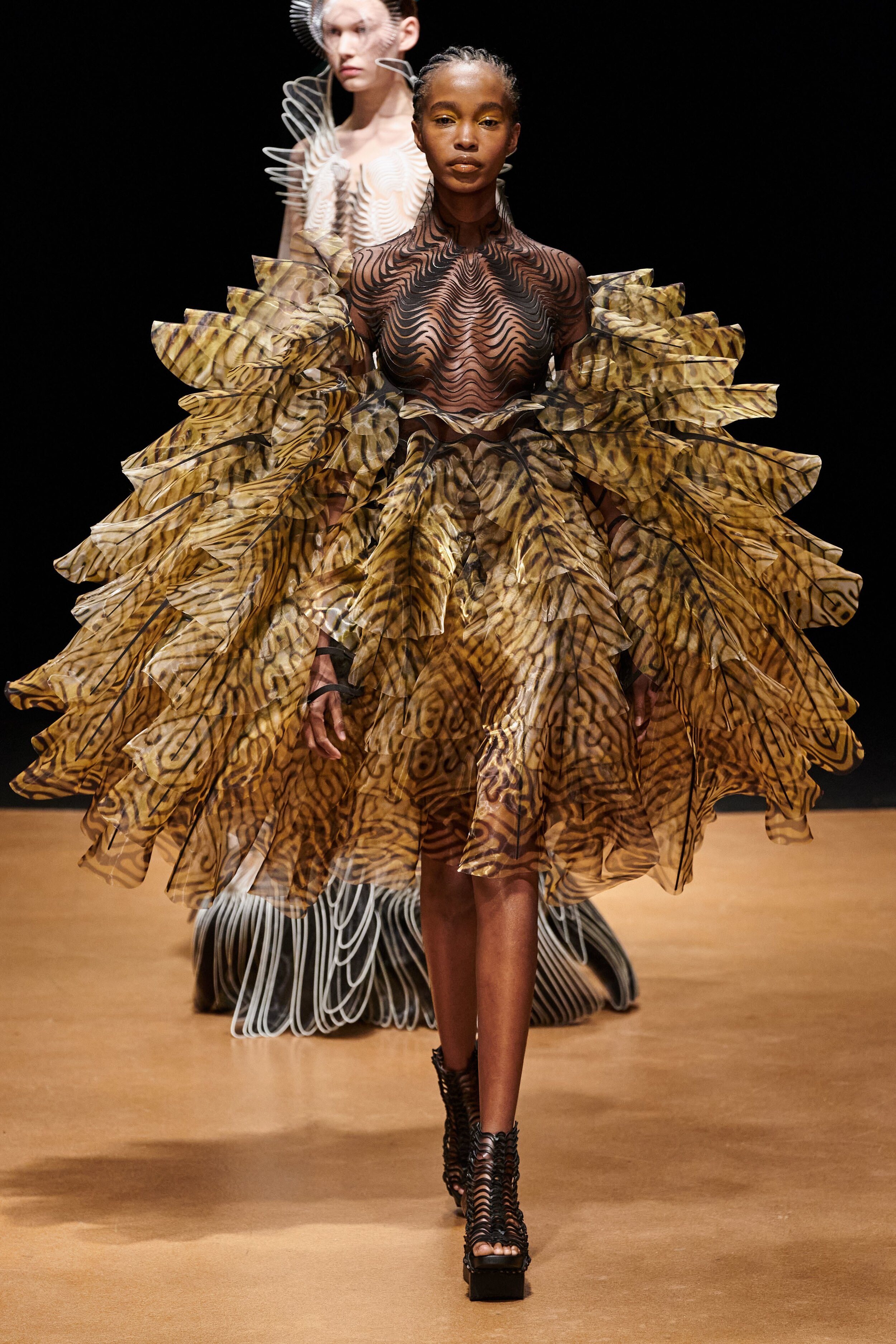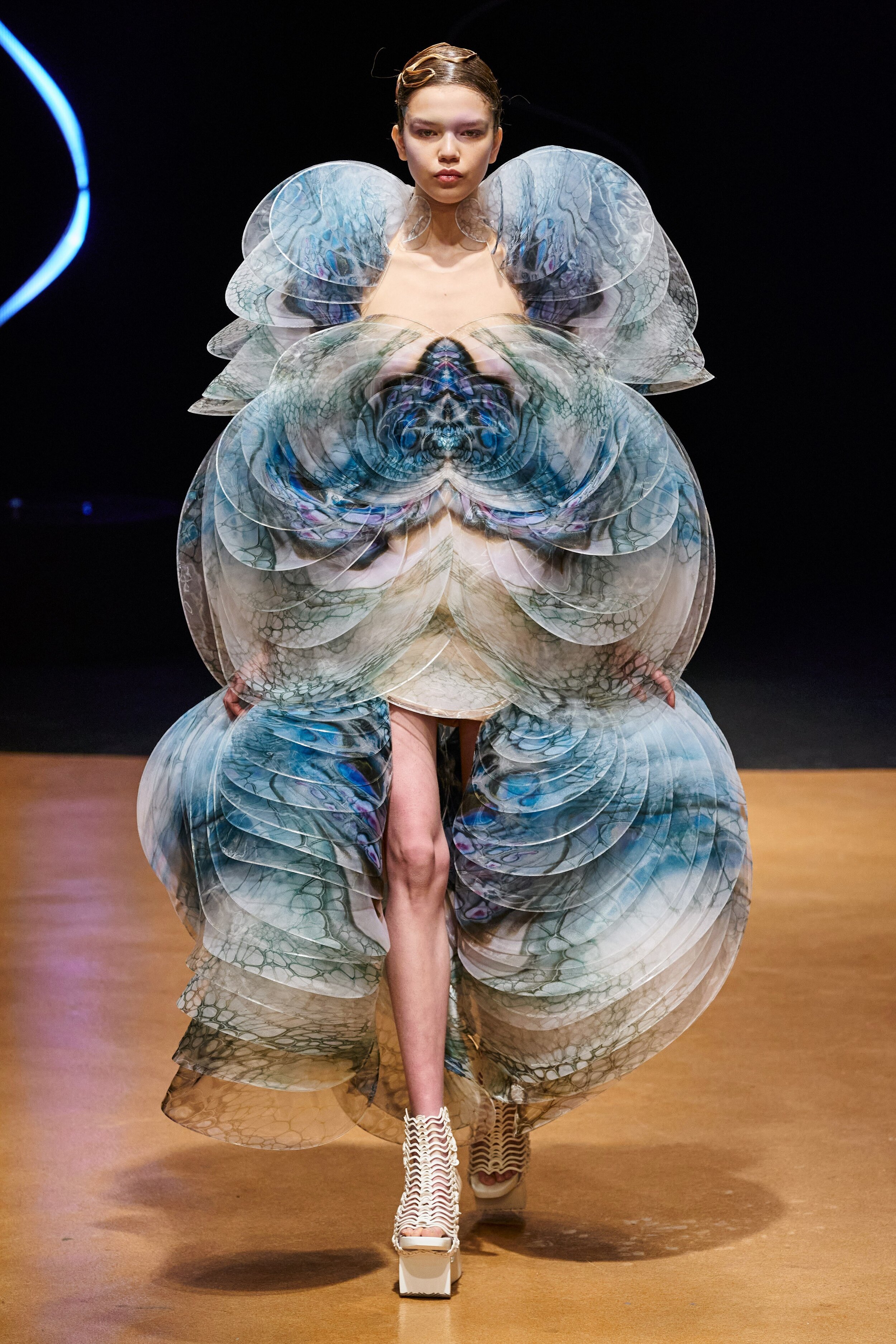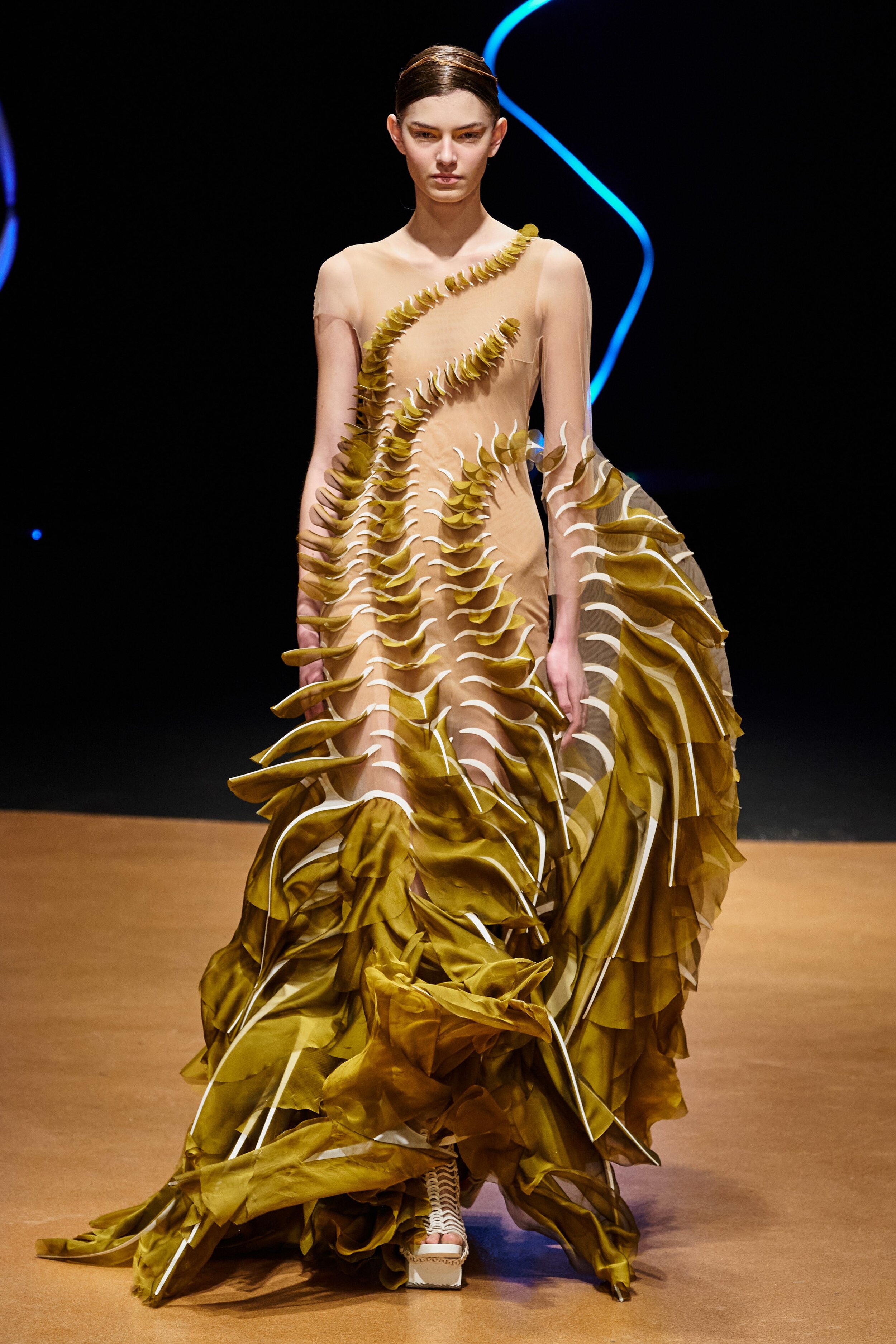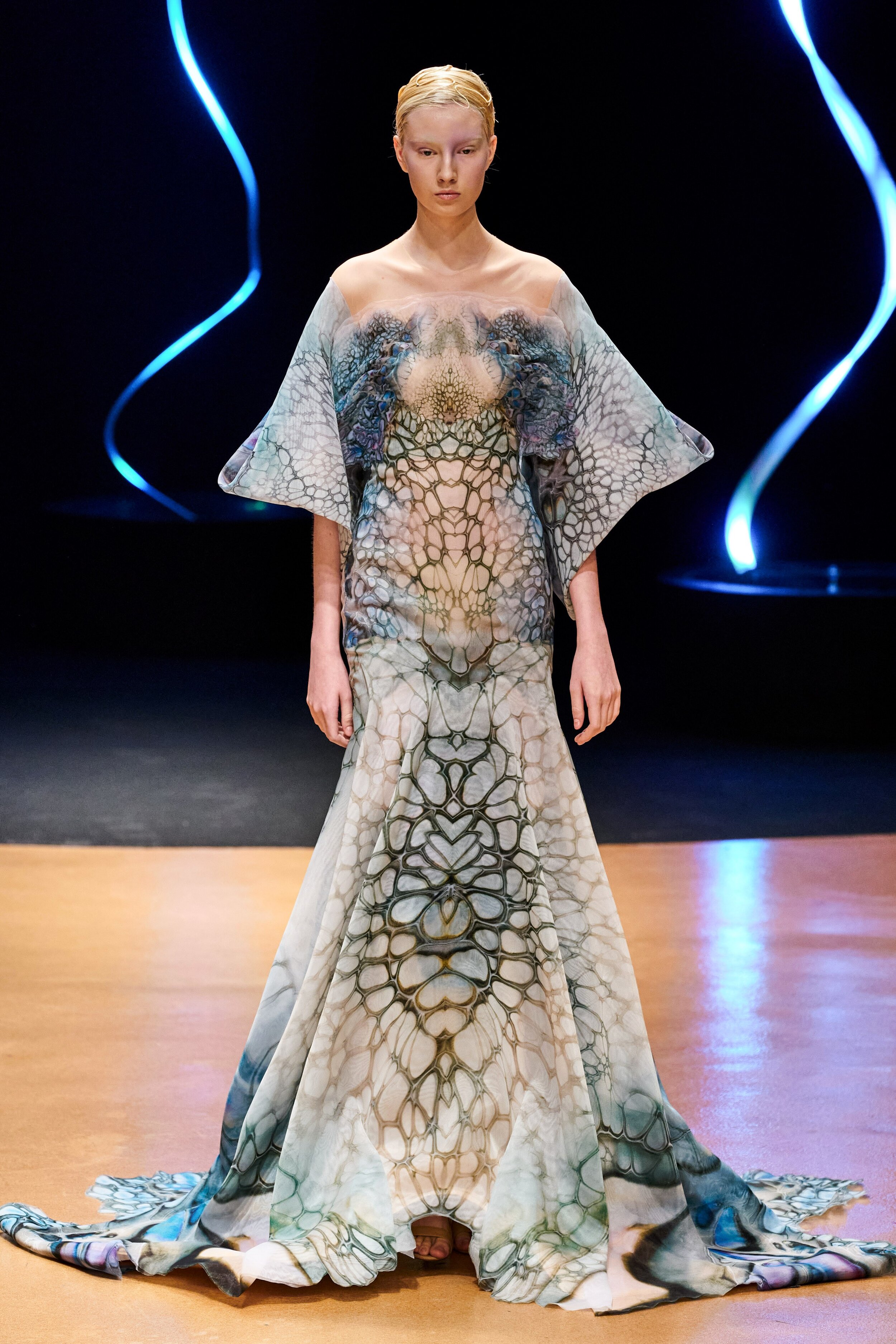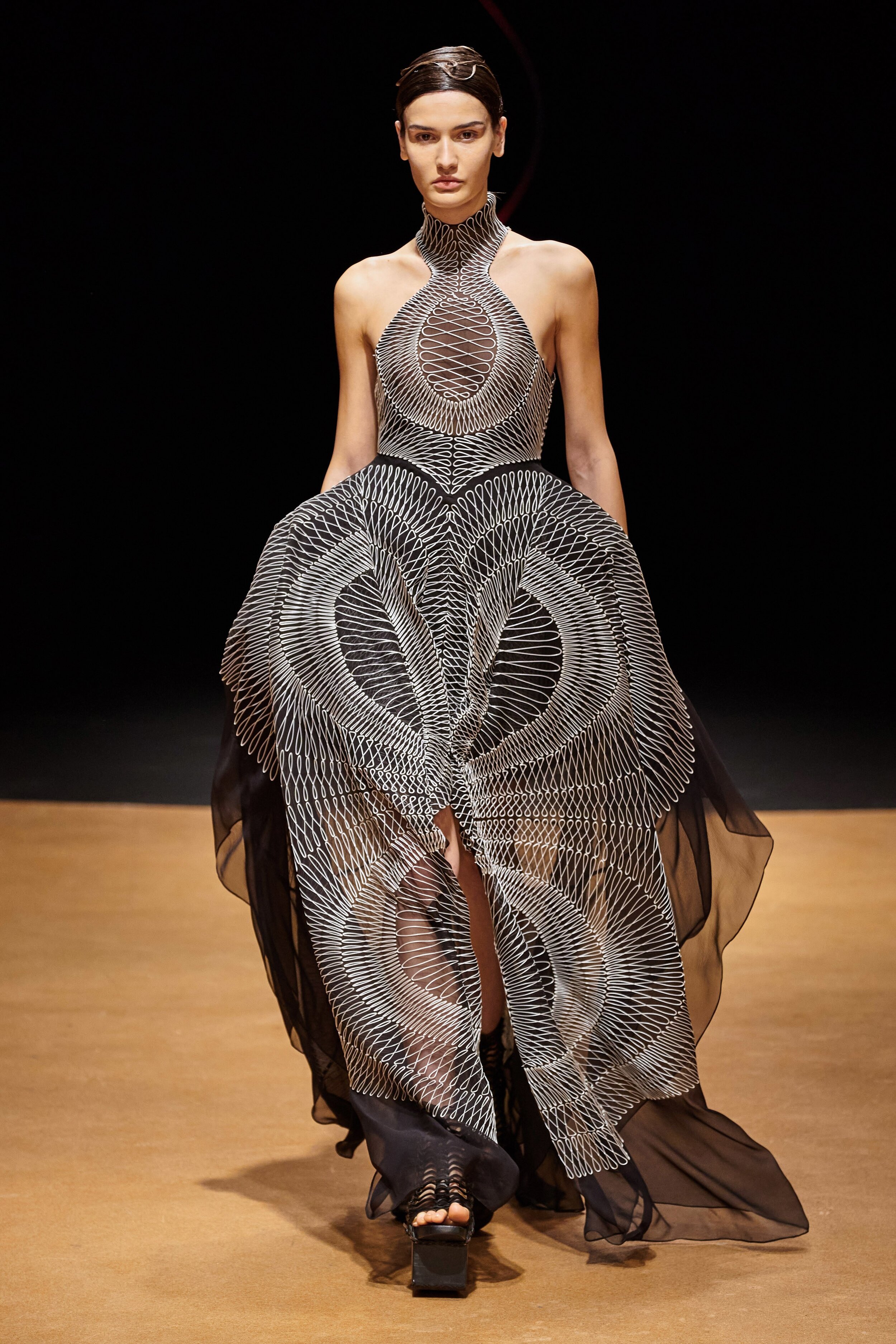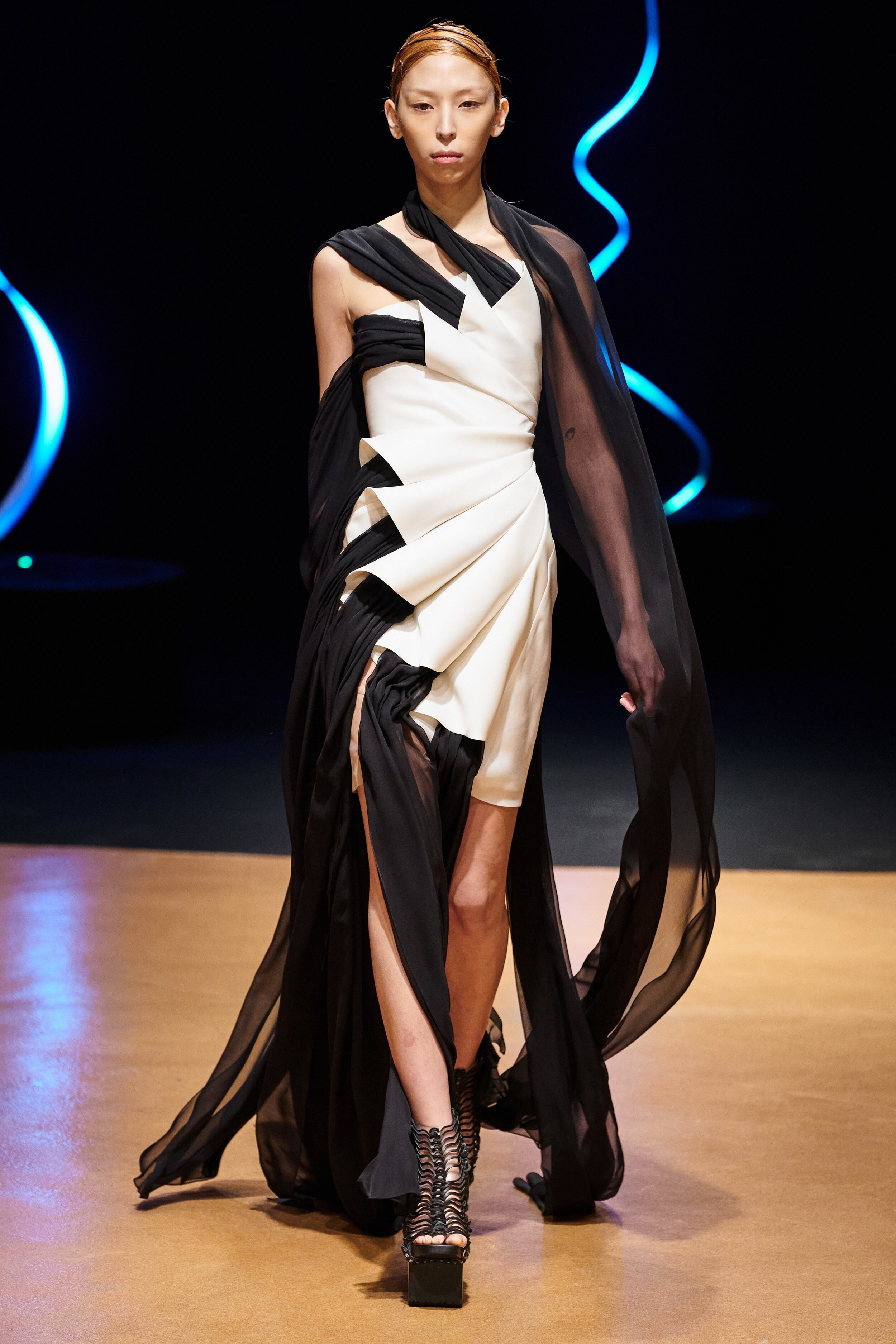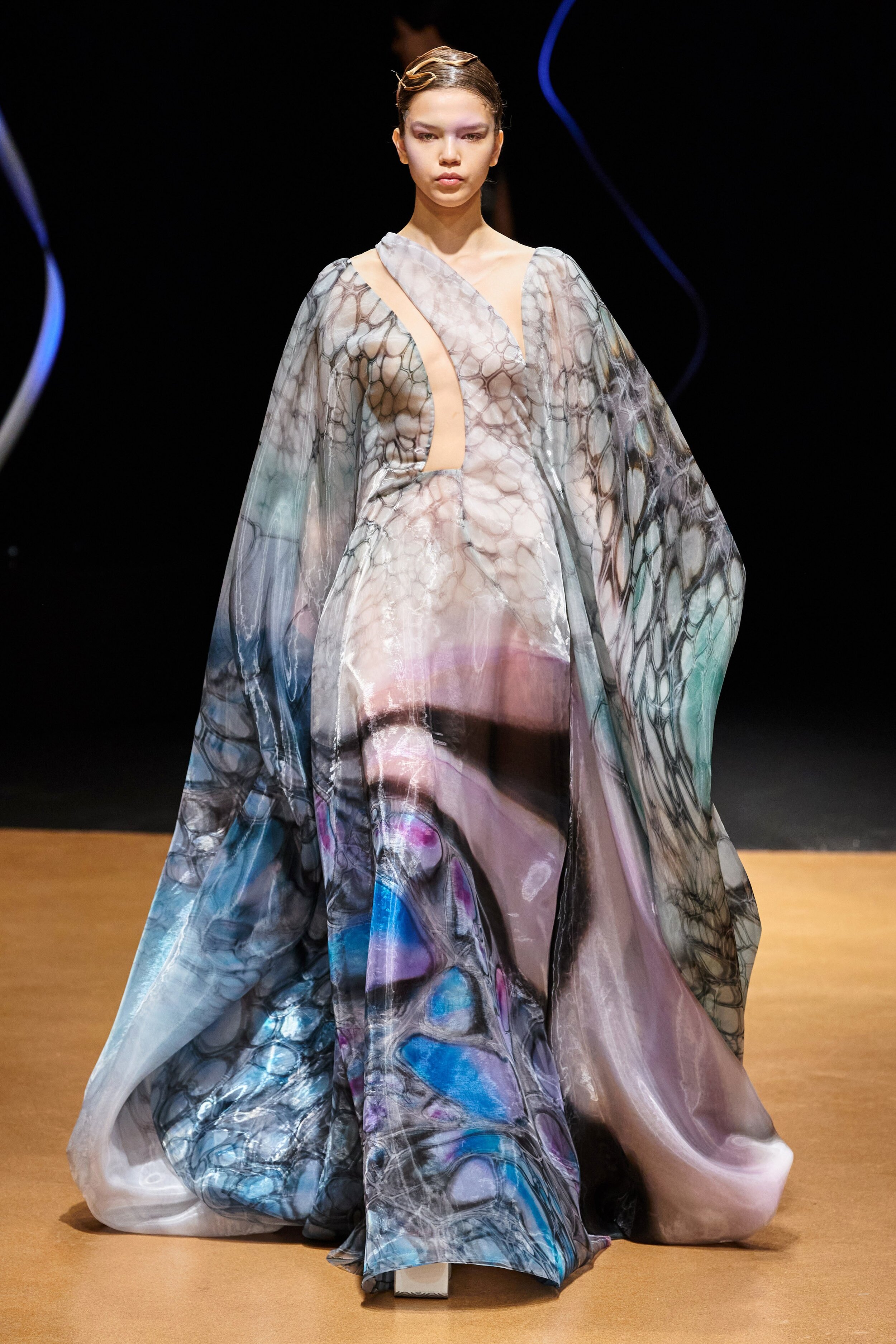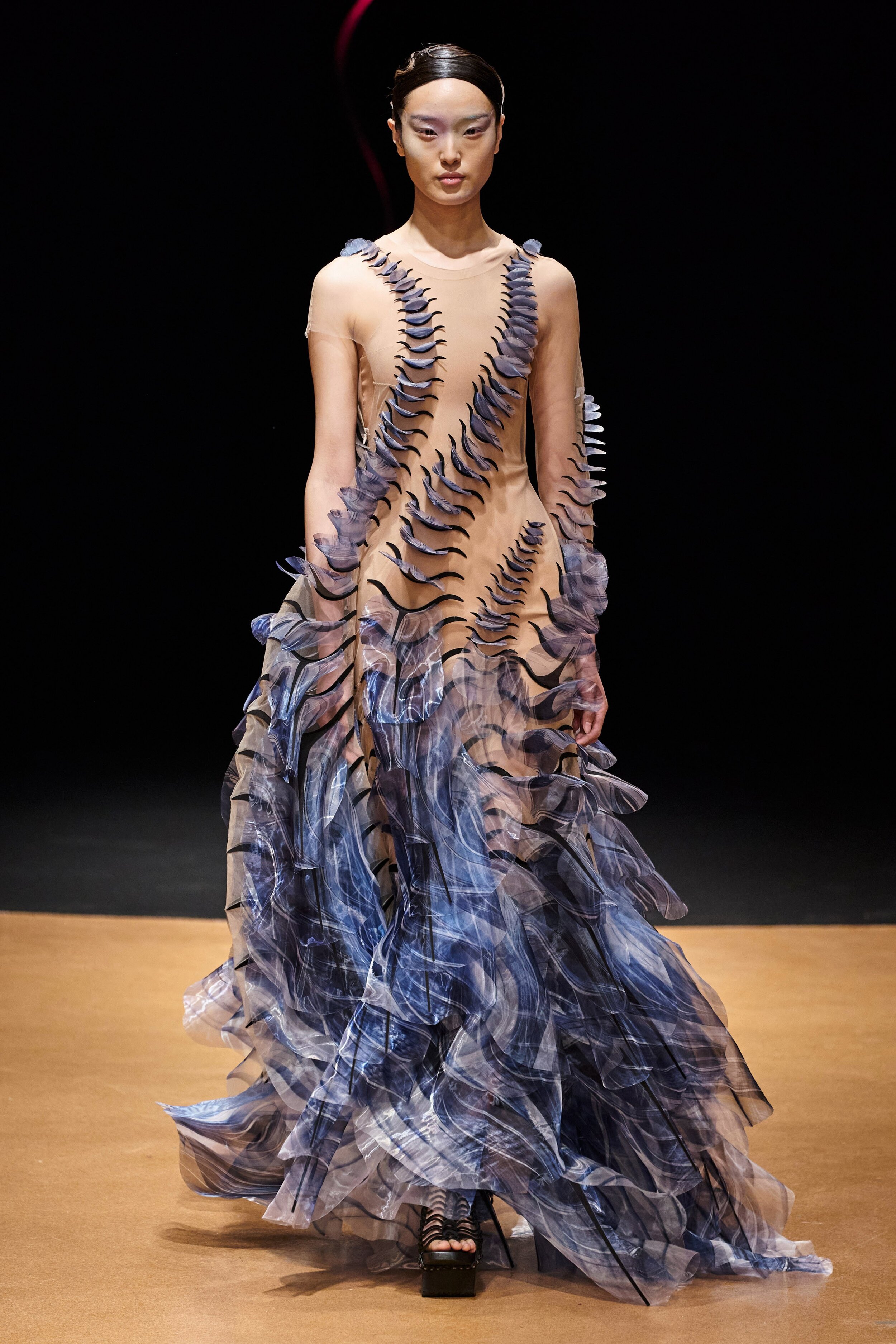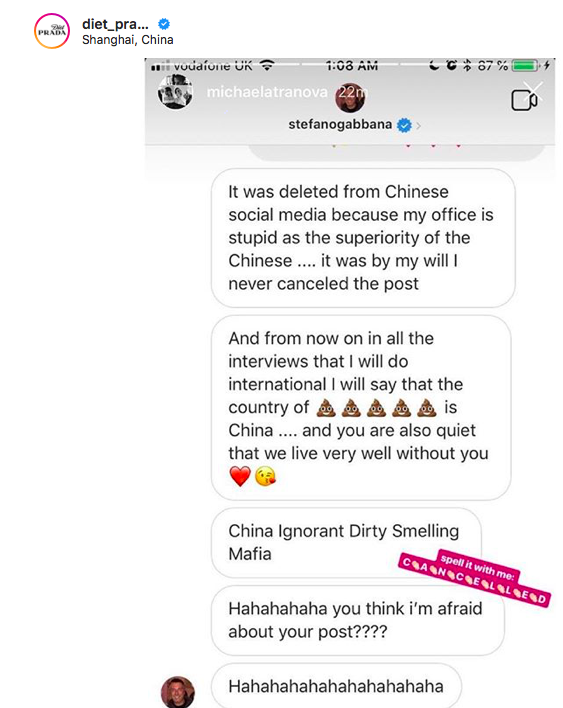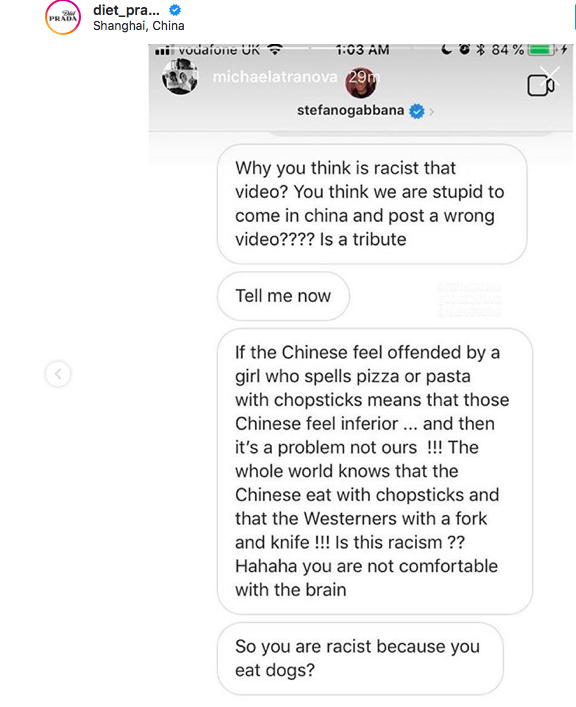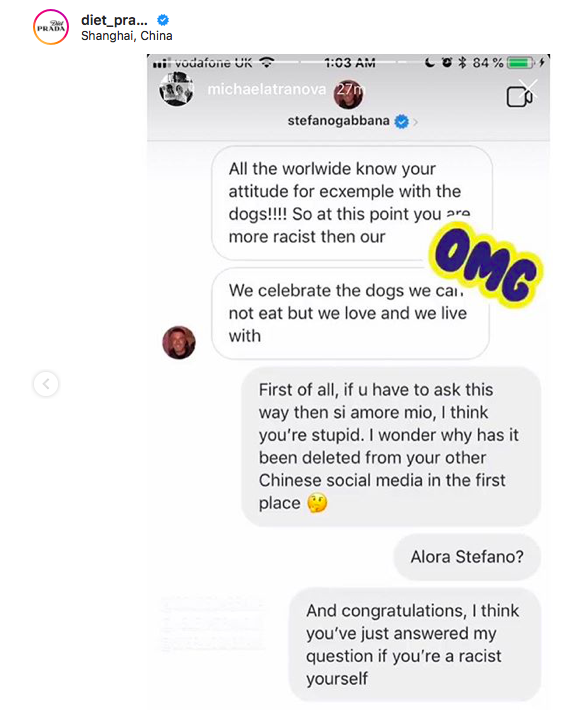Dominating many fashion headlines last week is the image of Bella Hadid being spray painted live onstage into a skintight white dress. This is the brainchild of Sébastien Meyer and Arnaud Vaillant, the designers behind Coperni Femme. The duo has had much success in the past, with the brand being endorsed by the likes of Rihanna and Kylie Jenner over the past year. But what is the spray on dress trying to say?
When interviewed on the topic, Meyer said this: ‘It’s our duty as designers to try new things and show a possible future. We’re not going to make money on this, but it’s a beautiful moment — an experience that creates emotion.” Yet how accurate is this statement? The spray on dress has been one of the most talked about outfits of the ‘23 show; googling ‘Bella Hadid’, ‘Coperni’, or ‘Sébastien Meyer’ results in autofill suggestions for the spray dress, and by all accounts and purposes this was a great business decision and money was absolutely made.
Now, for the ‘new and beautiful’ part of the statement: Manel Torres, the designer behind the spray-on-clothes had created the technology over 10 years ago, and was reaching out to luxury designers with hopes of collaboration back in 2013. He is not directly employed by Coperni. His name doesn’t autofill with Bella Hadid’s, in-fact the most recent article that comes up about him is from 2013 (the one where he says he hopes to collaborate with luxury brands, in fact). While he is mentioned by name in several of the recent articles from the ‘23 show, it doesn’t seem as though he is seriously considered to be the creative mind behind the piece (much like the creator of denim isn’t responsible for my new Levi 501s).
But why? While the showmanship is fairly credited to the Coperni team, when the technology is taken away there isn’t much left. The process is the backbone of the experience, without it it is just Hadid in a white dress. The dress is beautiful because Hadid is wearing it, but had the audience not seen the process of it being made it would have been a rather simplistic and disappointing look. In interviews Vaillant mentions modernisation and the need to show progress. On the surface, that seems true, yet as discussed, Coperni used technology that is over 10 years old and was not made by them.
Another thought the stunt inspires is one of comparison to the 1999 Alexander Wang show, where Shalom Harlow wore a white frock that was spray painted live onstage by two paint guns. This is considered to be one of the most beautiful moments in fashion history. Harlow, a dancer, had a movement on the turntable so poised and dramatic and unlike anything in prior shows. The piece was inspired by another piece of art, an installation of two paintball guns shooting at each other. This show broke the boundaries between traditional art and the runway.
There are obvious parallels to the Coperni show. Things were shooting at a model in a technically innovative way to significantly change her look onstage as a performance piece. Yet there are also glaring differences that account for the qualities of each piece. Mcqueen’s custom ordered paint guns, with detailed instructions on how each one should move were focusing on movement over the quality of the final piece, which is what made it so dramatic. Coperni on the other hand had people methodically spray, and later add finishing touches to the dress with scissors. There is no spontaneity or uncertainty with that and some of the tension is lost. Additionally, the clean and medicinal white of the Coperni show, coupled with Hadid’s nudity suggested a procedural approach, which is innovative to be sure, but devoid of the inherent emotion of mess. It is clean and well rehearsed, thus taking Mcqueen’s stunt and removing everything that made it emotional.
As an especially astute reader may notice, I did not like the spray on dress stunt. In summary, it was not technically impressive, said nothing and did nothing but create a stunt for the company in a very shallow way. But art is subjective and someone else may find meaning or emotion within it, and for those who do: I am happy for you. I just cant relate.
Image on cover.


